cognitive bias
description: systematic pattern of deviation from norm or rationality in judgment due to subjective perception of reality
131 results

Willful: How We Choose What We Do
by
Richard Robb
Published 12 Nov 2019
When their models fail to describe actual behavior, economists resort to blaming the cognitive bias known as “hyperbolic discounting.”6 This so-called bias leads to preferences that are “time-inconsistent,” meaning we can’t set a plan and then stick to it. But are “time-inconsistent” preferences really preferences at all? Preferences hinge on the ability to rank options, but we can’t rank options here. In fact, we can’t even choose, in any meaningful sense, a path, since we can’t commit our future selves to staying on it. Rather than a consequence of cognitive bias, “time-inconsistent preferences” is an oxymoron. The realization that people cannot exhibit true preferences over the timing of their consumption is no cause for a crisis in our understanding of the human condition.
…
Ultimately, my classmates and I likened the behavioral economists’ experiments to optical illusions: entertaining and sometimes instructive, but hardly central to everyday life. In the absence of any better ideas, I made an uneasy peace with economic theory. I accepted that behavior is purposeful and choice is mostly rational with a bit of cognitive bias tossed into the mix. After graduating in 1985, I took a job in the bond business in Chicago. As time passed, I remained convinced of the power of neoclassical economics and wary of the popular alternatives. Yet I also grew increasingly uncomfortable with the extent to which the traditional model failed to square with my own life.
…
I’ll use “purposeful” as an umbrella term when contrasted to “for-itself” or when I want to allow for the possibility of behavioral bias. I’ll use “rational choice” to refer to economists’ traditional neoclassical models or to emphasize that I’m considering choice that is free of behavioral bias. “Cognitive bias” and “behavioral bias” will be treated as synonyms. “Preferences” will refer to desires in the purposeful realm—we know whether we would prefer to satisfy one desire over another and can rank them. The terms “wants,” “needs,” and “desires” will emphasize purposefulness. But, at some high level of abstraction, for-itself conduct also concerns desire and its synonyms: someone who doesn’t desire an action wouldn’t undertake it.

Designing the Mind: The Principles of Psychitecture
by
Designing The Mind
and
Ryan A Bush
Published 10 Jan 2021
Blain et al., “Apophenia as the Disposition to False Positives: A Unifying Framework for Openness and Psychoticism,” Journal of Abnormal Psychology 129, no. 3 (2020): 279–92, https://doi.org/10.1037/abn0000504. Alexander Alvarez, “Destructive Beliefs: Genocide and the Role of Ideology,” 2008. “Cognitive Bias,” in Wikipedia, November 24, 2020, https://en.wikipedia.org/w/index.php?title=Cognitive_bias&oldid=990416478. Buster Benson, “Cognitive Bias Cheat Sheet, Simplified,” Medium, April 2, 2019, https://medium.com/thinking-is-hard/4-conundrums-of-intelligence-2ab78d90740f. “The Illusion of Transparency: Biased Assessments of Others’ Ability to Read One’s Emotional States. - PsycNET,” accessed November 25, 2020, https://doi.apa.org/doiLanding?
…
They will teach you the methods for reprogramming them and nearing your ideal software. You will become a skilled psychitect, and by aiming your constructive efforts toward the structure of your mind, you will learn to terraform it into a truly habitable, delightful place for its sole inhabitant. Chapter 2: Cognitive Biases and How to Rewire Them Understanding Cognitive Bias Dogmatism is the greatest of mental obstacles to human happiness. - Bertrand Russell, The Conquest of Happiness We begin our psychitectural journey in the cognitive realm. Without mastery of this realm, our minds are riddled with false beliefs, recurring biases, and dissonance between our models of reality and reality itself.
…
In some, but not all cases, being aware that a certain bias exists has proven to counter the bias.13 14 Correcting a bias will typically require an awareness that a bias-triggering situation has arisen in your life. You need to build the habit of noticing these situations, which is largely a function of metacognitive awareness. Mindfulness has been found to decrease cognitive bias by bringing deliberate attention to otherwise habitual cognitive patterns.15 Being aware of times when you might be particularly prone to mistakes, such as when you are tired, angry, or even hungry can also help you counteract your biases, or at least postpone decisions until you are in a more optimal state.

Choose Yourself!
by
James Altucher
Published 14 Sep 2013
When something has a large cost, as all the decisions in personal finance often do, a cognitive bias called “investment bias” kicks in. A cognitive bias occurs when our brains—in their well-intentioned attempts to protect us from the wild—keep us on the narrow path that has been deemed safe for various reasons. Some of those reasons are genetic. Some of them are due to the habits you’ve developed during your life. Some of them come from the company you keep (your “tribe”), and some of them come from people whom you admire. When an event that challenges your cognitive bias occurs, a neurochemical called cortisol shoots all over your brain.
…
Everything in life is about having as many options as possible so you can maximize your freedom. “Options” are not the same as “money.” Don’t let cognitive biases limit your options when you make decisions. If you spend $400,000 and twelve years of your life learning how to become a brain surgeon, you now have this huge cognitive bias that you must be a brain surgeon. This is not true. Maybe after all that, you decide you don’t want to be a surgeon anymore. Make sure you can always list your options. Don’t allow yourself to become trapped. * * * Think, “It’s Not Me, But What I Can Do for You” When you negotiate, you always are bringing something to the table.
…
Within the first twenty seconds you know if you are attracted. So keep it to a tea. Say no. If something is not working out in day trading—even if your heart wants it to work out—you have to say no and cut your losses. If a business relationship is not working out, don’t put more energy and time into it. There is a cognitive bias called “commitment bias” that leads us to think that just because we’ve already put time and energy (or money) into something that we have to stick with it. But we don’t. Say no to it. You have to decide every moment if this is the situation you want to be in. Just because you were in the situation a moment ago, or yesterday, or for ten years, doesn’t mean the situation is right for you anymore.
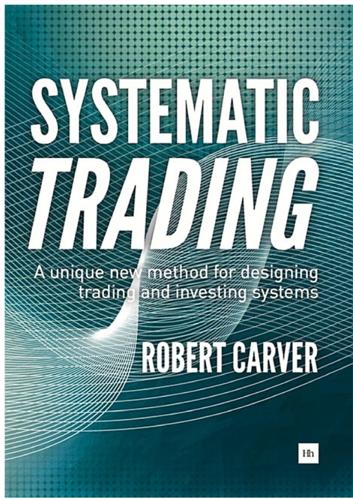
Systematic Trading: A Unique New Method for Designing Trading and Investing Systems
by
Robert Carver
Published 13 Sep 2015
The cash targets are equal to trading capital multiplied by the percentage volatility target. See page 137. 271 APPENDICES Appendix A. Resources Further reading The flawed human brain Thinking, Fast and Slow, Daniel Kahneman, 2011, Penguin Excellent book on cognitive bias. A must read. Beyond Greed and Fear, Hersh Shefrin, 2007, OUP USA Relatively short book on cognitive bias in finance specifically. Worth reading if you don’t have time for Thinking, Fast and Slow. The Education of a Speculator, Victor Niederhoffer, 1998, Wiley Fascinating and esoteric book by a famous partly systematic, negative skew, hedge fund manager.
…
You might not even close at a 10 cent loss, kicking yourself for not selling earlier, and continue to hang on for the rebound that never comes, until the pain is unbearable and 16 Chapter One. The Flawed Human Brain you close out. A small profit would also prove irresistible, with its own litany of excuses why you should deviate from the rule, just this once. I call this process of interference by our internal monologue meddling. Meddling is due to the biggest cognitive bias of all: overconfidence. We think we are cleverer than the trading system and we are. We think we know more than the trading system and we do; the system focuses on a narrow set of quantifiable inputs, whilst we can analyse many kinds of complex information. We think being clever and knowing more implies we will make better decisions – but we usually don’t, thanks to cognitive biases.
…
In practice many experts fiddle with the raw output of optimisations until they end up reflecting their own expectations of what the result should have been! I will discuss this further in chapter four, ‘Portfolio Allocation’. Overtrading People are highly overconfident about their own abilities relative to others. This is another cognitive bias: illusory superiority. For example nearly all drivers consider themselves above average, a theoretical impossibility and also highly unlikely given the number of deaths annually from road accidents. Both amateur investors and professional managers have a tendency to trade too frequently.19 There are extra costs involved in trading more often.
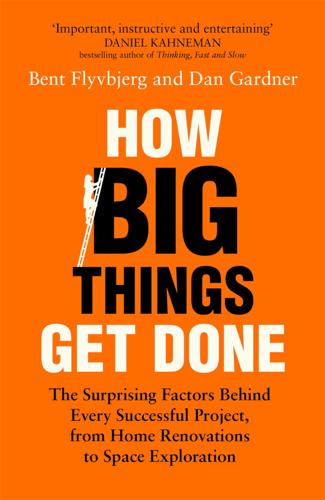
How Big Things Get Done: The Surprising Factors Behind Every Successful Project, From Home Renovations to Space Exploration
by
Bent Flyvbjerg
and
Dan Gardner
Published 16 Feb 2023
The authors of unrealistic plans are often driven by the desire to get the plan approved—whether by their superiors or by a client—supported by the knowledge that projects are rarely abandoned unfinished merely because of overruns in costs or completion times” (pp. 250–51). That is clearly not a description of psychological cognitive bias, which is innocent per definition, but of political bias, specifically strategic misrepresentation aimed at getting projects under way. For a more full account of my discussions with Daniel Kahneman about power bias and strategic misrepresentation, see Flyvbjerg, “Top Ten Behavioral Biases in Project Management.” 8. Flyvbjerg, “Top Ten Behavioral Biases in Project Management.” 9. Optimism is a well-documented cognitive bias. It is the tendency for individuals to be overly bullish about the outcomes of planned actions.
…
Theranos, a company founded by its charismatic nineteen-year-old CEO, Elizabeth Holmes—with former secretaries of state George Shultz and Henry Kissinger as board members—raised $1.3 billion from investors after it claimed to have developed a spectacular new blood-testing technology.22 It was a mirage, and Theranos collapsed amid a hailstorm of fraud charges and lawsuits.23 Third, an iterative process such as Pixar’s corrects for a basic cognitive bias that psychologists call the “illusion of explanatory depth.” Do you know how a bicycle works? Most people are sure they do, yet they are unable to complete a simple line drawing that shows how a bicycle works. Even when much of the bicycle is already drawn for them, they can’t do it. “People feel they understand complex phenomena with far greater precision, coherence, and depth than they really do,” researchers concluded.
…
Kahneman and his colleagues were briefly alarmed—but then they moved on just as if they had never heard those unwelcome facts because, well, their project felt different. It always does. “This time is different” is the motto of uniqueness bias. The textbook was ultimately finished eight years later.19 If the greatest living student of cognitive bias can be suckered by uniqueness bias, it’s small wonder that the rest of us are vulnerable, too, or that avoiding the trap requires awareness and sustained mental effort. The third reason RCF is still not as widely used as it should be is the simplest. It’s the data. Calculating an average is easy, but only once you have the numbers in hand.

Discardia: More Life, Less Stuff
by
Dinah Sanders
Published 7 Oct 2011
Goulding, said, “All four are real choices, and it's surprising how often people pick number two or number four.” What choices aren’t you enjoying now that you’ve made them? What were the other options that you could keep in mind for next time? Beware of cognitive bias and wrong-sized conclusions As you evaluate your current situation, your dreams, and what you may need to discard or add, watch out for two important things: cognitive bias and over- or undersized conclusions. Firstly, cognitive bias—a pattern of different judgment occurring for you in specific situations—can kick in when you worry about being unprepared. There is a world of difference between the overprotective response “that might come in handy for something maybe someday so I’ll keep it” and specific, common-to-you situational preparation, such as “I should carry a book and writing tools when I am doing errands where I might get stuck waiting.”
…
In my experience, the payoff for getting rid of 100% of the stuff for which you don't have a plan and don't wildly love is still worth it, even when you come up with a use for a small percentage of it later. Getting 90% of your unneeded items out of the way creates opportunity and energy, which makes dealing with the occasional 10% you need to get again much easier. Beware of cognitive bias in what you notice about your things, habits, projects, and even dreams. Would it stand out in your memory that you never needed something you got rid of? No. In fact, you might forget you ever had it in the first place. That 90% can fall from your awareness without a trace, leaving the rare exceptions to stand out and seem more significant than they actually are.
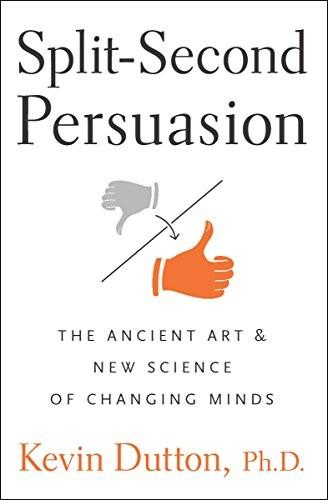
Split-Second Persuasion: The Ancient Art and New Science of Changing Minds
by
Kevin Dutton
Published 3 Feb 2011
In Leonard Berkowitz (Ed.), Advances in Experimental Social Psychology 17 229–266: (Orlando, FL: Academic Press, 1984). 9 But a recent experiment … Harris, Sam, Sheth, Sameer A. and Cohen, Mark S., ‘Functional Neuroimaging of Belief, Disbelief, and Uncertainty.’ Annals of Neurology, 63(2) (2008): 141–147. For a comprehensive review of the cognitive bias modification literature see MacLeod, Colin., Koster, Ernst H. W. and Fox, Elaine, ‘Whither Cognitive Bias Modification Research? Commentary on the Special Section Articles.’ Journal of Abnormal Psychology 118 (2009): 89–99. 10 MacLeod has demonstrated this … MacLeod, Colin, Mathews, A. and Tata Philip, ‘Attentional Bias in Emotional Disorders.’
…
It doesn’t come up with the solution to the problem but rather a different way of thinking about it. It isn’t so much about providing a key. But what it does do is persuade the client to think about changing the lock.’ Be Happy, Don’t Worry Over the past few years, MacLeod has been at the forefront of a brand new form of therapy called Cognitive Bias Modification (CBM) which, if it works (and the early signs are good), could completely redefine the limits of persuasion. As a post-doc back in the early-eighties, MacLeod was among the first wave of researchers to bring the methods of cognitive psychology to the clinical table – specifically, to the area of anxiety disorder.
…
When, at the end of the procedure, reaction times are averaged and the performance of the anxious and non-anxious groups is compared, a telltale difference materialises. Anxious individuals, it emerges, are faster at locating the probe when it appears in a position formerly occupied by a threatening word than they are when it appears in a neutral position – a disparity not found among the non-anxious. Anxious individuals, in other words, have a cognitive bias towards threat. 11Recently, MacLeod has been thinking in a different way about the dot probe paradigm. At the outset, as we’ve just seen, the procedure was instrumental in uncovering precisely what it was that was driving anxiety – at least, that is, on a cognitive level. But might it also have the power to reduce it?
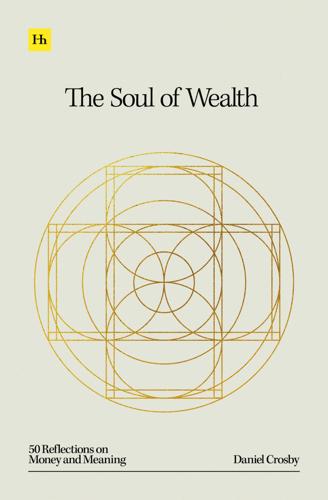
The Soul of Wealth
by
Daniel Crosby
Published 19 Sep 2024
The bottom line is that the way we allocate our money reflects our true priorities. To slightly misquote Jay Z, “Men lie, women lie, budgets don’t lie.” The existence of this apparent behavioral flaw can be traced back to what psychologists refer to as the fundamental attribution error (FAE). It’s a cognitive bias that leads individuals to attribute another’s actions to internal factors while attributing their own behavior to external factors. Put another way, we take credit for success and blame others for our failures and flaws. The analogy I like to use is when you’re rushing home from work on a hectic commute.
…
He sees himself as fully formed with little growth ahead and no catalysts to bring about a renewed and different sense of self. Consumed by the belief that most of life’s significant moments had come and gone, he found himself detached from the present and with a lack of hope for the future. The end of history illusion is a cognitive bias in which people sometimes see the current version of themselves as enduring, but in a bad way. They regard their personal development and growth as waning, leading them to miss out on opportunities for self-improvement. In the book, Caulfield fixates on childhood memories—their innocence, authenticity, and unfettered relationships.
…
The light turns green, and you both go on your way. Never once did you look at the driver and think, “Wow, that’s a cool person!” This is called the ‘spotlight effect’, a phenomenon that Morgan Housel observed when working as a valet at a high-end hotel in Los Angeles. Just as in Housel’s “man in the car paradox,” the cognitive bias asserts that we think people are paying more attention to us than they actually are.206 The belief causes us to financially overindulge in the hope that others find us ‘cool’.207 In his book, The Psychology of Money, Housel sums it up well: “Spending money to show people how much money you have is the fastest way to have less money.”
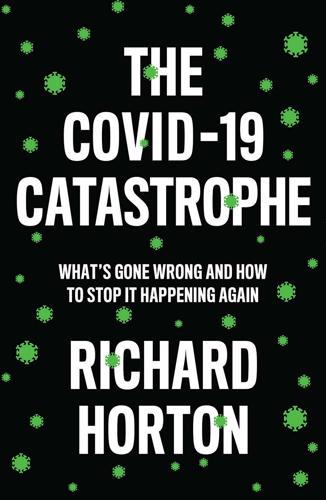
The COVID-19 Catastrophe: What's Gone Wrong and How to Stop It Happening Again
by
Richard Horton
Published 31 May 2020
When the government realised that a new SARS virus was circulating, Chinese officials didn’t advise hand-washing, a better cough etiquette and the disposal of tissues. They locked down entire cities and turned off the economy. As one former secretary of state for health in England put it to me, our scientists suffered from a ‘cognitive bias’ towards the milder threat of influenza. Perhaps that is why the key government committee, the New and Emerging Respiratory Virus Threats Advisory Group (NERVTAG), concluded on 21 February, three weeks after WHO had declared a PHEIC, that, with one exception, they had no objection to Public Health England’s ‘moderate’ risk assessment of the disease threat to the UK population.
…
Despite possessing some of the world’s most talented scientists, nations such as the US, Italy, Spain, France and the UK were unable to harness their knowledge and skills to deliver timely recommendations to forestall the terrifying human impacts of the pandemic. Partly, this failure was because of a cognitive bias. The expectation in the Western world was that the next infectious pandemic was likely to be a new strain of influenza. The idea that a more severe SARS-like virus might strike was not taken seriously. The relatively small number of scientists advising government existed in groups that did not explicitly consider alternatives to their dominant expectation – they suffered from a disabling ‘group think’.
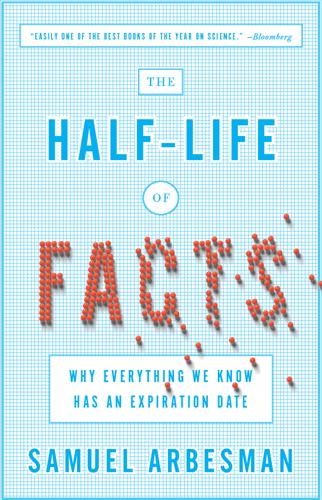
The Half-Life of Facts: Why Everything We Know Has an Expiration Date
by
Samuel Arbesman
Published 31 Aug 2012
Look to the lyrics of Bradley Wray. In December 2009, Bradley Wray was preparing his high school students for a test in his Advanced Placement psychology class. Wray developed a moderately catchy song for his students that would help them review the material and posted a video of it online. What was the topic of this song? Cognitive bias. There is a whole set of psychological quirks we are saddled with as part of our evolutionary baggage. While these quirks might have helped us on the savannah to figure out how the seasons change and where food might be year after year, they are not always the most useful in our interconnected, highly complex, and fast-moving world.
…
In hockey or soccer, if the team wins, the goal scorer is lauded. But if the team loses? The goalie gets the short end of the deal. The other players are the beneficiaries of a certain amount of self-serving bias—praise for success, without the burden of failure—at least that’s how the media portray it, even if they are not subject to this cognitive bias themselves. There are well over a hundred of these biases that have been cataloged. . . . IN the 1840s, Ignaz Semmelweis was a noted physician with a keen eye. While he was a young obstetrician working in the hospitals of Vienna, he noticed a curious difference between mothers who delivered in his division of the hospital and those who delivered at home, or using midwives in the other part of the hospital.
…
New York Times, July 17, 1969. 174 Why do we believe in wrong, outdated facts?: Schulz, Kathryn. Being Wrong: Adventures in the Margin of Error. New York: Ecco, 2010. One of the main reasons, Schulz notes, that it is so easy to be wrong is very simple: Being wrong feels a lot like being right. 175 Bradley Wray was preparing his high school students: Wray, Bradley. “Cognitive Bias Song”; https://www.youtube.com/watch?v=3RsbmjNLQkc. 176 Nuland, Sherwin B. The Doctors’ Plague: Germs, Childbed Fever, and the Strange Story of Ignác Semmelweis. New York: W. W. Norton, 2003. Please note that the initial edition of my book was prey to some outdated information regarding the myth of Semmelweis. 177 akin to Daniel Kahneman’s idea of theory-induced blindness: Shirky, Clay.

Reinventing Capitalism in the Age of Big Data
by
Viktor Mayer-Schönberger
and
Thomas Ramge
Published 27 Feb 2018
It’s far faster and less painful than having to do the search yourself, but it also takes into account more variations and evaluates more offers than you would do. Neither does the system tire easily (as we humans do when searching for something offline or online), nor is it distracted in its decision advice by price, derailed by cognitive bias, or lured by clever marketing. Of course, we’ll still use money as a store of value, and price will still be valuable information; but no longer being focused on price broadens our perspective, yields better matches, a more efficient transaction, and, we believe, less trickery in the market. Such decision-assistance systems based on data and machine learning will help us identify optimal matches in these data-rich markets, but we humans will retain the ultimate decision-making power and will decide how much or how little we delegate as we transact.
…
There are studies that show that unambiguous feedback about a decision—something as unmistakable as a pilot learning that if the wing flaps are not extended, a jetliner will not get enough lift to take off or a doctor seeing that administering a particular drug causes a patient’s blood pressure to fall—can decrease cognitive bias. But few management decisions result in this kind of unequivocal feedback. An alternative view of how to improve human decision-making has gained traction in the past decade. It asserts that humans aren’t such bad information processors, as long as they follow their intuition and adhere to a few fairly simple heuristics, or shortcuts developed through trial and error.
…
See mobile phones central banks, 134–135, 149 centralization, 13, 90, 95, 100 cognitive limitations and, 103 of communicative coordination, 28–30 matching and, 74 Champagne fairs, 160 Charles Schwab, 146 Charlotte, Queen, 94 checklists, 100–101 Chichén Itzá, 21 Chile, 175–179 Chilean Production Development Corporation, 175 China, 147, 196 communicative coordination in, 30–32 fintechs in, 151, 152 firms in, 28 labor market of, 184 choice, 6, 207–223 in banking and financial sector, 215–216 in education sector, 214 in energy markets, 213 in health care sector, 213–214 historical constraints on, 13–14 human error and, 14–15 questions about, 219–220 relinquishing some, 85 in retail sector, 207–212 about time management, 221–222 Chongqing Province (China), 31–32, 33 Cisco, 7 Claudico (machine learning system), 60 Coconut, 147 cognitive bias and constraints, 5, 62 automation and, 79, 80, 81 firms and, 102–104 markets and, 169–170 persistence of, 14–15 Colson, Eric, 209 command-and-control management, 29–30, 88, 120 Commerzbank, 136 communicative coordination, 10, 17–33 castell example, 17–20 effectiveness as measure of, 24–25 firms and, 26, 28–33, 90, 102 importance of, 20–23 markets and, 26–28, 30–33 price hampering of, 63 societal institutions and, 23–24 competition, 165–167, 202–203 comprehensive cost accounting, 94–95 concentrated markets, 161–169, 171, 217 Condorcet, Marquis de, 50 confirmation bias, 103 Confused.com, 52 conglomerates, 30 Consumer Reports, 51 Contix, 155 coordination.
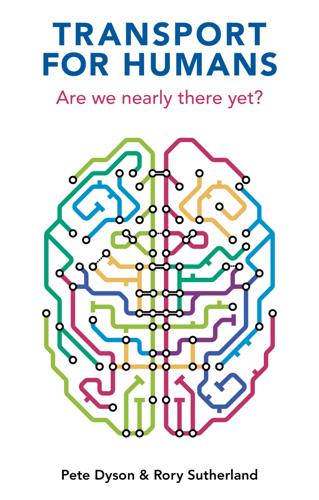
Transport for Humans: Are We Nearly There Yet?
by
Pete Dyson
and
Rory Sutherland
Published 15 Jan 2021
Studies have found that people underestimate the time saved by increasing low speeds, and overestimate the time saved by increasing high speeds.7 We put our foot down on the motorway, but the real gains come from avoiding queues at junctions. Professional experience does not cure this bias, either: even taxi drivers, who we would assume might have learned from experience, share this cognitive bias.8 * * * 1 Smith (1759). The Theory of Moral Sentiments. 2 E. Pronin. 2007. Perception and misperception of bias in human judgment. Trends in Cognitive Sciences 11(1), 37–43. 3 M. Wardman. 2004. Public transport values of time. Transport Policy 11(4), 363–377. 4 M.
…
Later we will see that it can help address biases in individual and group decision making, but first, it can influence what people design, as long as they open their minds to its potential. What gets measured gets managed We tend to emphasize things that can be easily measured and easily expressed in numerical terms. This is the focusing effect: a cognitive bias that occurs when we place too much importance on a selected detail at the expense of considering the bigger picture.2 For instance, Daniel Kahneman and colleagues have shown that people consistently overestimate the significance that money has on their lives, when, in fact, increases in income create only small and temporary effects on happiness.3 It’s hard to picture how more money wouldn’t be better, and because we can easily measure and compare how much money we have, that figure becomes a metric most of us assume will have a big impact on how happy we are.
…
If a team is diverse enough in its composition (a big ‘if’), individual biases may, at the aggregate level, cancel each other out. This isn’t necessarily true in collective decision making. In cases where organizational values, in-vogue methodologies and charismatic leaders have widespread influence, cognitive bias is likely to be consistent in one direction and generate an approved way of looking at the world. Confidence in decisions made under the influence of an institutional bias is likely to be very high, but that may be false confidence. There is a correspondingly high social and employment risk involved in challenging the bias.3 Optimists can be overcautious We spent the last chapter critiquing optimism, and now we are criticizing the same planners for being cautious, conformist and defensive.
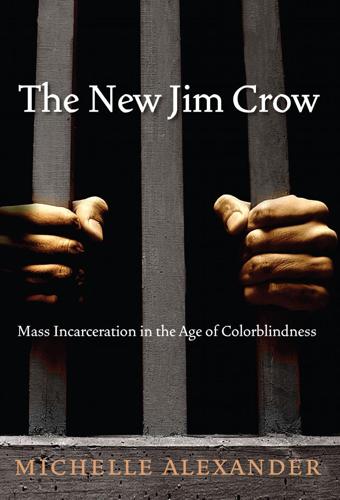
The New Jim Crow: Mass Incarceration in the Age of Colorblindness
by
Michelle Alexander
Published 24 Nov 2011
One study suggests that the standard crime news “script” is so prevalent and so thoroughly racialized that viewers imagine a black perpetrator even when none exists. In that study, 60 percent of viewers who saw a story with no image falsely recalled seeing one, and 70 percent of those viewers believed the perpetrator to be African American.33 Decades of cognitive bias research demonstrates that both unconscious and conscious biases lead to discriminatory actions, even when an individual does not want to discriminate.34 The quotation commonly attributed to Nietzsche, that “there is no immaculate perception,” perfectly captures how cognitive schemas—thought structures—influence what we notice and how the things we notice get interpreted.35 Studies have shown that racial schemas operate not only as part of conscious, rational deliberations, but also automatically—without conscious awareness or intent.36 One study, for example, involved a video game that placed photographs of white and black individuals holding either a gun or other object (such as a wallet, soda can, or cell phone) into various photographic backgrounds.
…
Whether or not one believes racial discrimination in the drug war was inevitable, it should have been glaringly obvious in the 1980s and 1990s that an extraordinarily high risk of racial bias in the administration of criminal justice was present, given the way in which all crime had been framed in the media and in political discourse. Awareness of this risk did not require intimate familiarity with cognitive bias research. Anyone possessing a television set during this period would likely have had some awareness of the extent to which black men had been demonized in the War on Drugs. The risk that African Americans would be unfairly targeted should have been of special concern to the U.S. Supreme Court—the one branch of government charged with the responsibility of protecting “discrete and insular minorities” from the excesses of majoritarian democracy, and guaranteeing constitutional rights for groups deemed unpopular or subject to prejudice.45 Yet when the time came for the Supreme Court to devise the legal rules that would govern the War on Drugs, the Court adopted rules that would maximize—not minimize—the amount of racial discrimination that would likely occur.
…
See also civil rights advocacy, future of Clary, Edward Clinton, Bill/Clinton administration; federal drug programs; marijuana use; militarization of War on Drugs; public housing and eviction rules; “tough on crime” policies/legislation; and War on Drugs; welfare reform legislation Cloward, Richard cognitive bias research Cohen, Cathy Cohen, Stanley Cohen, William Cole, David Coley, Rebekah Levine colorblindness; and affirmative action; and black exceptionalism; and “interracial racial caste system,”; and mass incarceration; problem of flawed pursuit of; Reagan’s racialized campaign rhetoric; resisting temptation to ignore race in advocacy; and U.S.

Deep Medicine: How Artificial Intelligence Can Make Healthcare Human Again
by
Eric Topol
Published 1 Jan 2019
Prescription drugs are on a runaway course, accounting for well over $320 billion in 2015 and projected to reach over $600 billion by 2021.25 New specialty drugs for cancer and rare diseases are routinely launched with price tags starting at $100,000 per treatment or year and ranging up to nearly $1 million per year. TABLE 2.1: Healthcare spending in the United States in 2015. Part of this growth is fueled by a shared belief among both patients and physicians that medications, and in particular very expensive ones, will have remarkable efficacy. When doctors prescribe any medication, they have a cognitive bias that it will work. Patients, too, believe the medicine will work. From an enormous body of randomized clinical trials, patients assigned to the placebo arm consistently have more treatment effect than expected, given that they are taking an inert substance. A few years ago, Nicholas Schork, a former faculty member at Scripps Research with me, put together the responsiveness—the intended clinical response—of the top ten drugs by gross sales.26 As seen in Figure 2.3, the proportion of people who don’t respond to these drugs is well beyond the common perception.
…
That’s when you need to stop and check your thinking.”11 When a patient was misdiagnosed to be hyperthyroid for her irregular heartbeat but instead was found to have fractured ribs and a collapsed lung, Redelmeier called this error an example of the representativeness heuristic, which is a shortcut in decision making based on past experiences (first described by Tversky and Kahneman). Patterns of thinking such as the representativeness heuristic are an example of the widespread problem of cognitive bias among physicians. Humans in general are beset by many biases—Wikipedia lists 185, for example—but I want to highlight only a few of those that impair diagnostic accuracy.12 It’s important to emphasize that these embedded cognitive biases in medicine are simply human nature, not at all specific to making a diagnosis or being sure about recommending a treatment.
…
But each cardiologist was performing fewer than a hundred to a few hundred procedures per year, and they were not routinely checking blood tests to see whether there was any evidence of heart damage. And all the doctors were influenced by a bias to believe that they were highly skilled and so wouldn’t be inducing heart attacks in their patients. Here the cognitive bias of doctors was influenced by their own relatively limited clinical experience and their failure to systematically look for evidence. Rule-based thinking can also lead to bias. Cardiologists diagnosing heart disease in patients evaluated in the emergency department demonstrate such bias, as shown in Figure 3.1, when they assume that a patient must be over age forty before they really suspect heart attack.

Never Split the Difference: Negotiating as if Your Life Depended on It
by
Chris Voss
and
Tahl Raz
Published 3 Oct 1989
This mentality baffled Kahneman, who from years in psychology knew that, in his words, “[I]t is self-evident that people are neither fully rational nor completely selfish, and that their tastes are anything but stable.” Through decades of research with Tversky, Kahneman proved that humans all suffer from Cognitive Bias, that is, unconscious—and irrational—brain processes that literally distort the way we see the world. Kahneman and Tversky discovered more than 150 of them. There’s the Framing Effect, which demonstrates that people respond differently to the same choice depending on how it is framed (people place greater value on moving from 90 percent to 100 percent—high probability to certainty—than from 45 percent to 55 percent, even though they’re both ten percentage points).
…
Students of mine balk at this notion, asking, “Seriously, do you really need a whole team to . . . hear someone out?” The fact that the FBI has come to that conclusion, I tell them, should be a wake-up call. It’s really not that easy to listen well. We are easily distracted. We engage in selective listening, hearing only what we want to hear, our minds acting on a cognitive bias for consistency rather than truth. And that’s just the start. Most people approach a negotiation so preoccupied by the arguments that support their position that they are unable to listen attentively. In one of the most cited research papers in psychology,1 George A. Miller persuasively put forth the idea that we can process only about seven pieces of information in our conscious mind at any given moment.
…
See nonverbal communication Bonderow, Amy, 76–77, 81, 85 Branch Davidian siege, Waco, Texas, 13 Bueno, Jesus, 182–85 Burnham, Martin and Gracia, 140, 143, 144, 145, 146, 166 Burnham-Sobero case, Dos Palmas, 140–41, 142–48, 170 Bush, George W., 143 calibrated, or open-ended, questions, 20, 141, 149, 150, 151–56, 243 Ackerman model and, 207 to analyze negotiation team and behind the table/Level II players, 171, 172 Assertive (bargaining style) and, 196 caution about using “why,” 153–54, 160, 203 Ecuador kidnapping and, 160, 165, 166, 167 to elicit information, 185 example, doctor and unhappy patient, 150, 155 examples to use, 154, 256 “forced empathy” and, 168 greatest-of-all-time question, 151, 168 “How” questions, 167–69, 181, 186 key lessons of, 160–61 Negotiation One Sheet and, 255–58 questions to identify and diffuse deal-killing issues, 256–57 questions to identify the behind-the-table deal killers, 256 responses to aggressiveness and, 141, 152, 159, 175 Rule of Three and, 177–78 script for, 157–58 tone of voice for, 167–68 when to use, 154 words to avoid in, 153 words to begin with, 153, 160 Camp, Jim, 78, 90 car-buying negotiations, 119, 188–90, 243 certainty effect, 127 Chandler, Raymond, 129 Chris discount, 179–80 clearing the barriers to agreement, 61–63, 72 Clinton, Hillary, 53 cognitive bias, 12 Cohen, Herb, 119 collaboration, 21 How/No questions and, 167–68 never create an enemy, 204–5 Collodi, Carlo, 178 Columbia Business School, 131 communication. See also active listening; calibrated, or open-ended, question; voice tones calibrated, or open-ended, question, 20, 141, 149, 150, 151–56, 165, 166, 167–69, 170, 174–75, 255–58 Chinese expression about, 111 control in, 160, 166 empathy as “soft” skill, 53 hidden aspects of, 77 “I” messages, 203–4 literal interpretations, mistake of, 77 lying and, 178 “no” and, 75–80 pronoun usage and person’s importance, 179, 187 7-38-55 Percent Rule, 176–77, 186 subtleties, spotting and interpreting, 173–76 uncovering lying, 176 using your own name (Chris discount), 179–80, 187 “yes” and, 80–81 “yes” and “no,” values inherent in, 86 compromise, 18–19, 115–16, 139 reasons for, 116 win-win and, 115, 253 control, 140–61 calibrated, or open-ended, question and, 141, 149, 150, 151–56 in communication, 160 creating the illusion of, 149–61, 166, 174–75 influence vs., 84 key lessons of, 160–61 lack of, and hostage mentality, 159 late-night FM DJ voice and, 33 as primal urge, 84 saying “no” and, 78–79, 86–92, 94 self-control, 156–59, 161, 202, 204 crisis negotiations, 4–5, 9–10, 13–16, 18–19, 54.
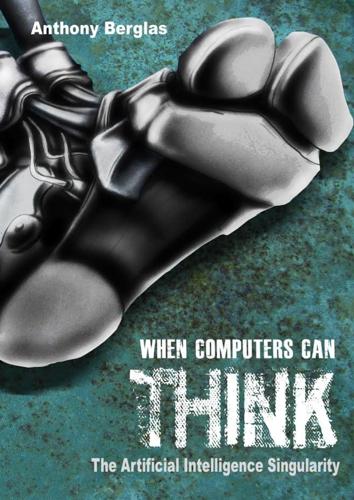
When Computers Can Think: The Artificial Intelligence Singularity
by
Anthony Berglas
,
William Black
,
Samantha Thalind
,
Max Scratchmann
and
Michelle Estes
Published 28 Feb 2015
AGI behaviour, children 9. Cooperation 10. Altruism 11. Moral values 12. Instrumental AGI goals 13. Non-orthogonality thesis 14. Recursive annihilation 6. Future Scenarios 1. Our humble servant 2. Our benevolent master 3. Dogs 4. Merging man and machine 5. It ain't necessarily so 6. Replacing people 7. Cognitive bias 8. Newsworthiness 9. Elephant in the room 10. How computers could be dangerous 11. Long term earth, plantoids 12. Space colonization 13. Fermi paradox 14. Computer thoughts 15. Non-silicon intelligence 16. Premature destruction 7. Proposed Solutions 1. Just turn it off 2. Lock it up 3. Freeze it 4.
…
Super computers grinding away twenty four hours per day working on the problem of making themselves smarter, and thereby becoming better at making themselves smarter. The computers would use that great intelligence to fulfil whatever ultimate goals they happen to have. For better or for worse. The book considers the dangers of anthropomorphisizing an AGI, and notes that superintelligence really is a different type of threat. It then considers the cognitive bias of technology journalists who generally love technology and so tend to overlook the dangers, leading ultimately to the rapture of the geeks, whereby some writers get excited about the prospect of uploading their minds into a computer and so becoming immortal. Barrat is concerned that the future may not be so rosy, and certainly not if it is not managed carefully.
…
We do not hate mice and rats, we just do not want to share our food with them, nor do we want them to share their diseases with us. Maybe a few people would be left in isolated parts of the world. But the intelligence would optimizes itself, why waste even 1% of the world’s resources on man. Evolution has left no place on earth for any other hominids — they are all extinct. Cognitive bias Most technology writers and futurists take a very optimistic view of what future technologies will bring. They love gadgets and technology, which is why they write about them. It is much more enjoyable to read articles about a bright, new future than it is to read dismal projections of doom and gloom.

Rationality: From AI to Zombies
by
Eliezer Yudkowsky
Published 11 Mar 2015
If you’re used to holding knowledge and inquiry in high esteem, this is a scary prospect. If we want to be sure that learning more will help us, rather than making us worse off than we were before, we need to discover and correct for biases in our data. The idea of cognitive bias in psychology works in an analogous way. A cognitive bias is a systematic error in how we think, as opposed to a random error or one that’s merely caused by our ignorance. Whereas statistical bias skews a sample so that it less closely resembles a larger population, cognitive biases skew our beliefs so that they less accurately represent the facts, and they skew our decision-making so that it less reliably achieves our goals.
…
You’re what’s biased. Now that we’re talking about biased people, however, we have to be careful. Usually, when we call individuals or groups “biased,” we do it to chastise them for being unfair or partial. Cognitive bias is a different beast altogether. Cognitive biases are a basic part of how humans in general think, not the sort of defect we could blame on a terrible upbringing or a rotten personality.1 A cognitive bias is a systematic way that your innate patterns of thought fall short of truth (or some other attainable goal, such as happiness). Like statistical biases, cognitive biases can distort our view of reality, they can’t always be fixed by just gathering more data, and their effects can add up over time.
…
Like statistical biases, cognitive biases can distort our view of reality, they can’t always be fixed by just gathering more data, and their effects can add up over time. But when the miscalibrated measuring instrument you’re trying to fix is you, debiasing is a unique challenge. Still, this is an obvious place to start. For if you can’t trust your brain, how can you trust anything else? It would be useful to have a name for this project of overcoming cognitive bias, and of overcoming all species of error where our minds can come to undermine themselves. We could call this project whatever we’d like. For the moment, though, I suppose “rationality” is as good a name as any. Rational Feelings In a Hollywood movie, being “rational” usually means that you’re a stern, hyperintellectual stoic.

The Intelligence Trap: Revolutionise Your Thinking and Make Wiser Decisions
by
David Robson
Published 7 Mar 2019
Although this may have just been a coincidence, there is some good evidence that a deep engagement with other cultures can promote open-minded thinking, perhaps because it demands that you temporarily put aside your preconceptions and adopt new ways of thinking.49 The most exciting result, however, was the fact that these skills improved with training. With regular feedback, many people saw their accuracy slowly climbing over the course of the tournament. The participants also responded to specific lessons. An hour-long online course to recognise cognitive bias, for instance, improved the forecasters’ estimates by around 10 per cent over the following year. Often, the simplest way to avoid bias was to start out with a ‘base rate’: examining the average length of time it takes for any dictator to fall from power, for instance – before you then begin to readjust the estimate.
…
Rzeszutek, M., Szyszka, A. and Czerwonka, M. (2015), ‘Investors’ Expertise, Personality Traits and Susceptibility to Behavioral Biases in the Decision Making Process’, Contemporary Economics, 9, 337–52. 46 Jennifer Mnookin of UCLA, in Fingerprints on Trial, BBC World Service, 29 March 2011, http://www.bbc.co.uk/programmes/p00fvhl3. 47 Dror, I.E., Thompson, W.C., Meissner, C.A., Kornfield, I., Krane, D., Saks, M. and Risinger, M. (2015), ‘Letter to the Editor ? Context Management Toolbox: A Linear Sequential Unmasking (LSU) Approach for Minimizing Cognitive Bias in Forensic Decision Making’, Journal of Forensic Sciences, 60(4), 1111?12. Chapter 4 1 Brown, B. (2012), ‘Hot, Hot, Hot: The Summer of 1787’, National Constitution Center blog, https://constitutioncenter.org/blog/hot-hot-hot-the-summer-of-1787. 2 For much of the background detail on the US Constitution I am indebted to Isaacson, W. (2003), Benjamin Franklin: An American Life, New York: Simon & Schuster. 3 Franklin, B. (19 April 1787), Letter to Thomas Jefferson, Philadelphia.
…
Joe Hart Epitomises Everything That’s Wrong’, Independent, http://www.independent.co.uk/sport/football/international/england-vs-iceland-reaction-too-rich-too-famous-too-much-ego-joe-hart-epitomises-everything-that-is-a7106591.html. 22 Roberto, M.A. (2002), ‘Lessons From Everest: The Interaction of Cognitive Bias, Psychological Safety, and System Complexity’, California Management Review, 45(1), 136?58. 23 https://www.pbs.org/wgbh/pages/frontline/everest/stories/leadership.html. 24 Schwartz, S. (2008), ‘The 7 Schwartz Cultural Value Orientation Scores for 80 Countries’, doi: 10.13140/RG.2.1.3313.3040. 25 Anicich, E.M., Swaab, R.I., & Galinsky, A.
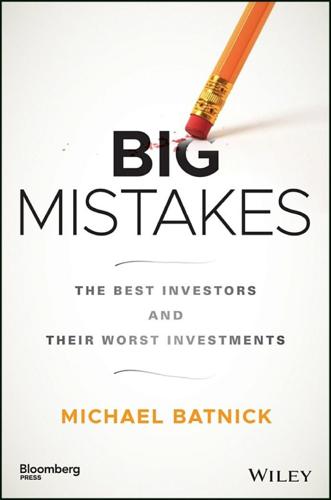
Big Mistakes: The Best Investors and Their Worst Investments
by
Michael Batnick
Published 21 May 2018
In the past 100 years, we've experienced just a handful of truly awful markets; the Great Depression, the post‐go‐go years meltdown, the 1973–1974 bear, the dot‐com bubble bursting, and most recently, the great financial crisis. Selling every time stocks fall a little is no way to invest because you'd live in a constant state of regret, and regret is one of the most destructive emotions in the cognitive‐bias tool kit. Investors don't just exist in the present state, they carry past experiences with them. This is dangerous because it leads us to constantly draw parallels where none exist. Looking at each decision independent of previous ones would be beneficial because investors are overly reliant on past experiences when thinking about future scenarios.
…
So, for example, if the S&P 500 falls 1% in day, there are bull and bear ETFs that will fall or gain 3% alongside it. It's a legal gambling on steroids. My process was as follows: I would pick one of these products, my weapon of choice was FAZ (bearish banks), buy it, watch the price, and hope it went up. I thought that by trading a lot, I could control my destiny. I would later find out that this cognitive bias is so common that there's a name for it; it's called “the illusion of control.” By buying and selling within minutes or hours of each other, I wouldn't be held hostage to the market. It's hard to put into words the level of dumb this line of thinking is. Overtrading is probably the most common mistake that novice investors make, and I was no exception.
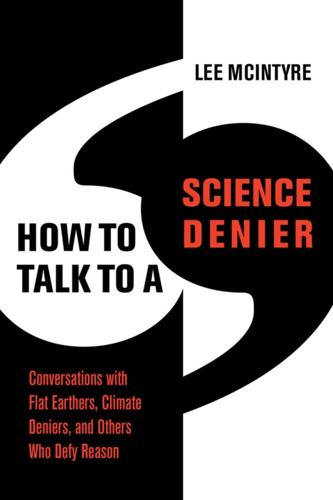
How to Talk to a Science Denier: Conversations With Flat Earthers, Climate Deniers, and Others Who Defy Reason
by
Lee McIntyre
Published 14 Sep 2021
Shermer favorably quotes psychologist Ashley Landrum, who explains that “people with more knowledge only accept science when it doesn’t conflict with their preexisting beliefs and values. Otherwise, they use that knowledge to more strongly justify their own positions.”11 We already know from Daniel Kahneman’s work on cognitive bias that all of us—Democrat and Republican, liberal and conservative—have the same cognitive biases that evolved through the process of natural selection over hundreds of thousands of years. Just because someone is left-wing doesn’t mean they are immune to the influence of something like confirmation bias or motivated reasoning.
…
Remember Dan Kahan’s experiment cited in chapter 2, where liberals who were good at math were unable to come up with the right conclusion from a data set when the topic was gun control? But now to the essential question: is it true to say that there are some areas of liberal science denial? In several of his many works on the topic of conspiracy theories, cognitive bias, and the reasons that people reject science, Stephan Lewandowsky has made the case that there is “little or no evidence for left-wing science denial”12 and that distrust in science “appears to be concentrated primarily among the political right.”13 The stakes of even considering this question are high, so it is important to be clear what it might mean to say that liberal science denial exists.
…
From scientific topics like climate change to political ones like election fraud, the problem of denialism now seems to have metastasized from the corporate to the ideological realm, from science to our larger culture. That said, there remain deeply entrenched interests around coal, oil, and other resources where some people stand to make a profit from the manufacture of doubt. And, of course, ignorance, cognitive bias, and the amplification of false ideas on social media are not going anywhere soon. Science denial didn’t start with Trump, though he certainly made it worse. It has been around at least since Galileo, and probably before that. But if science denial existed before Trump, it will likely exist after him too.
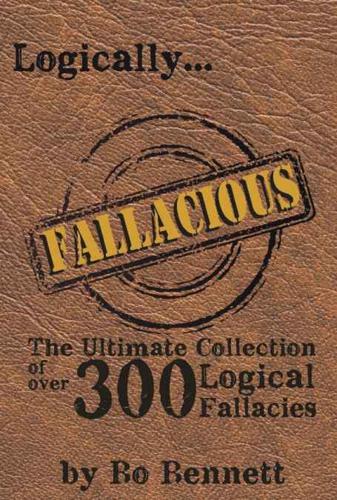
Logically Fallacious: The Ultimate Collection of Over 300 Logical Fallacies (Academic Edition)
by
Bo Bennett
Published 29 May 2017
Exception: When the claim being made is about the popularity or some related attribute that is a direct result of its popularity. People seem to love the movie, The Shawshank Redemption. In fact, it is currently ranked #1 at IMDB.com, based on viewer ratings. Tip: Avoid this fallacy like you avoid a kiss from your great aunt with the big cold sore on her lip. Variation: The bandwagon effect is a related cognitive bias that demonstrates people tend to believe and do things because many other people do as well. This is also referred to as “herd behavior” and “groupthink”. Appeal to Possibility (also known as: appeal to probability) Description: When a conclusion is assumed not because it is probably true, but because it is possible that it is true, no matter how improbable.
…
Exception: Refusing to reason with a non-reasonable person would be an exception, but it is also a contradiction. Wishful Thinking (also known as: appeal to consequences [form of]) Description: When the desire for something to be true is used in place of/or as evidence for the truthfulness of the claim. Wishful thinking, more as a cognitive bias than a logical fallacy, can also cause one to evaluate evidence very differently based on the desired outcome. Logical Form: I wish X were true. Therefore, it is true. Example #1: I know in my heart of hearts that our home team will win the World Series. Explanation: No, you don’t know that.

The Moral Landscape: How Science Can Determine Human Values
by
Sam Harris
Published 5 Oct 2010
Will this mean that liberals have become religious conservatives pining for the beehive? Or is the liberal notion of avoiding harm flexible enough to encompass the need for order and differences between in-group and out-group? There is also the question of whether conservatism contains an extra measure of cognitive bias—or outright hypocrisy—as the moral convictions of social conservatives are so regularly belied by their louche behavior. The most conservative regions of the United States tend to have the highest rates of divorce and teenage pregnancy, as well as the greatest appetite for pornography.59 Of course, it could be argued that social conservatism is the consequence of so much ambient sinning.
…
Evans, 2005; Kahneman, 2003; Kahneman, Krueger, Schkade, Schwarz, & Stone, 2006; Kahneman, Slovic, & Tversky, 1982; Kahneman & Tversky, 1996; Stanovich & West, 2000; Tversky & Kahneman, 1974. 37. Stanovich & West, 2000. 38. Fong et al., 1986/07. Once again, asking whether something is rationally or morally normative is distinct from asking whether it has been evolutionarily adaptive. Some psychologists have sought to minimize the significance of the research on cognitive bias by suggesting that subjects make decisions using heuristics that conferred adaptive fitness on our ancestors. As Stanovich and West (2000) observe, what serves the genes does not necessarily advance the interests of the individual. We could also add that what serves the individual in one context may not serve him in another.
…
See also religion children: callousness/unemotional trait in, 99, 213n78 care about other people’s children, 40 corporal punishment of, 3, 214n88 decision to have children, 187–88 disgust felt by, 224n34 early experience of, 9–10 hospital care of, 76–77 infants’ ability to follow a person’s gaze, 57 infants’ perception of aggressors, 206n35 in Israeli kibbutzim, 73 kindness for, 38 murder of infant by religious conservatives, 158 neglect and abuse of, 9, 35, 95–96, 107–8, 199–201n14 in orphanages, 9, 200n14 parents’ attachment to, 73 religion and, 151 self-regulation of, 223n23 sexual abuse scandal in Catholic Church, 35, 199–201n14 China, 67 Christianity. See religion Churchland, Patricia, 68, 101–2, 196n18, 210n49 cingulotomy, 226n35 Cleckley, H. M., 214n87 Clinton, Bill, 133 cognitive bias. See bias Cohen, Jonathan, 217–18n111 Cohen, Mark, 152, 229n62, 232n19 Collins, Francis, 160–74, 235n69, 236n77 colonoscopies, 77, 184 common sense dualists, 151 communication. See language compatibilism, 217n111 computational theory, 220n17 conduct disorder, 213n76 confirmation bias, 223n26 consciousness, 32–33, 41–42, 62, 108–9, 158–59, 221–22n18, 235n66 consensus, 31–32, 34, 198, 198n6 consequentialism, 62, 67–73, 207n12, 208n20, 210–11n50 conservatives.
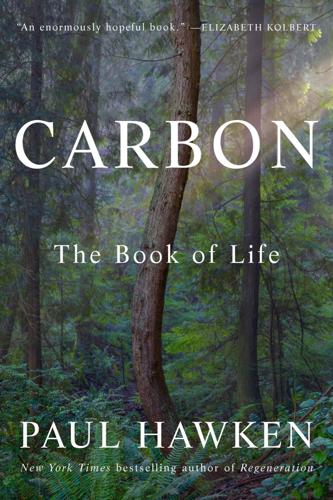
Carbon: The Book of Life
by
Paul Hawken
Published 17 Mar 2025
Flowering plants with dormant seeds emerged several years later when the darkening clouds lifted. No single event is killing off today’s forests. Losses are caused by fire, mining, roads, cultivation of palm oil, logging, and the eradication of Indigenous inhabitants and native animals, an overall rate of disintegration unseen since the meteorite. We have a cognitive bias, dismissing plants and trees as inferior to other life-forms. According to Sarah Kaplan, this results in fewer resources being “devoted to the organisms that supply Earth’s oxygen, feed its animals, and store more carbon than humanity will emit in 10 years.” One in six trees, the largest and longest-lived organisms on the planet, is facing extinction, including the California coastal redwood, the tallest tree in the world.
…
GO TO NOTE REFERENCE IN TEXT Flowering plants with dormant seeds: Daniel Immerwahr, “Mother Trees and Socialist Forests: Is the ‘Wood-Wide Web’ a Fantasy?,” The Guardian, April 23, 2024, theguardian.com/environment/2024/apr/23/mother-trees-and-socialist-forests-is-the-wood-wide-web-a-fantasy. GO TO NOTE REFERENCE IN TEXT We have a cognitive bias: Sarah Kaplan, “As Many as One in Six U.S. Tree Species Is Threatened with Extinction,” The Washington Post, August 23, 2022, washingtonpost.com/climate-environment/2022/08/23/extinct-tree-species-sequoias. GO TO NOTE REFERENCE IN TEXT One in six trees: Jayne Dowle, “Scientists Issue Stark Warning about the Threat to US Native Trees,” September 24, 2022, Gardeningetc.com, gardeningetc.com/news/us-native-trees-threat.
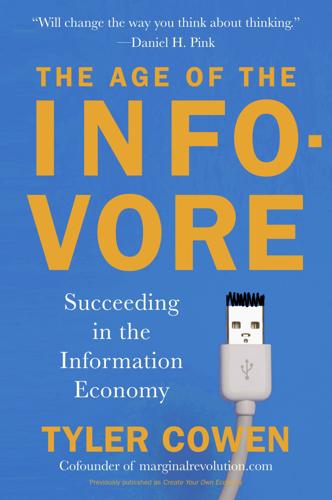
The Age of the Infovore: Succeeding in the Information Economy
by
Tyler Cowen
Published 25 May 2010
A recent study showed that parents of autistic children were less likely to socialize and that those same parents were also less likely to make eye contact and more likely to read other people’s intentions by watching their mouths rather than their eyes, a common autistic trait. There’s also evidence that the parents of autistic children are more likely to have a cognitive bias toward the local processing of small bits of information, as we find among autistics. We’re again back to the idea that autistic cognitive strengths and weaknesses pervade our world in many ways, often unobserved. One recent population study suggests that autistic traits are distributed across the entire population in a smooth and normal fashion, rather than into two distinct and clumped groups of “autistic” and “non-autistic.”
…
CNN is of course a popular outlet and thus the story is presented in a way that many people can relate to or remember, and that means some oversimplification. In other words, the shallowness of many commonly told and commonly held stories is part of the price of our sociability and the need to share so much with so many other people. Sometimes that oversimplification is a price worth paying. But let’s recognize it for what it is, namely a cognitive bias that plagues how many people think about the world. PROBLEM #2: STORIES END UP SERVING DUAL AND CONFLICTING FUNCTIONS Part of what a focal point means is that you can’t fit too many stories, ideas, and data points into your head at once. Only some of them will stick out and be obvious or memorable.
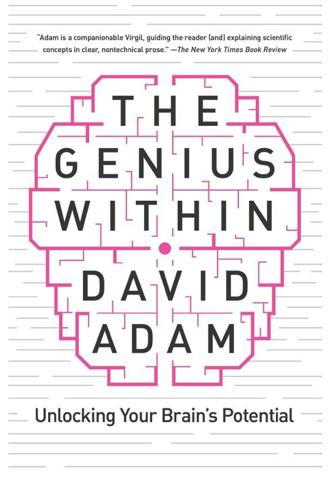
The Genius Within: Unlocking Your Brain's Potential
by
David Adam
Published 6 Feb 2018
An unusually light brain of a great man was excused, and said to be down to the degradation of ageing, or because bits must have been left behind when a clumsy technician scooped it from his great head. The too-heavy brain of a lesser individual was blamed on disease or the chemicals used to preserve it. The data were massaged to fit the pattern and the world order the scientists believed in. This form of cognitive bias is a common trap for scientists, and the early anthropologists were far from the first, or last, to fall into it as they pursued the mystery of intelligence. Spitzka Junior’s own studies of executed criminals helped convince him an unusually heavy brain in the less gifted could be explained by disease or abnormality.
…
To act according to beliefs to achieve goals, however irrational those beliefs might be, demands intelligence. If Stanovich is wrong and intelligence and rationality do overlap, this is good news for our efforts to enhance intelligence. For rationality can be increased. Rational thought can be encouraged by making people aware of the types of cognitive bias that constantly seek to undermine it. No clever neuroscience necessary. Just thinking about circumstances in a different way, reframing the question, can usually help. Example: a guaranteed way to double your chance of winning on the national lottery exists. Want to know what it is? Buy a second ticket with different numbers.

Our Final Invention: Artificial Intelligence and the End of the Human Era
by
James Barrat
Published 30 Sep 2013
Because vampires have provided so much fun, it’d take time for the guffawing to stop, and the wooden stakes to come out. Maybe we’re in that period right now with AI, and only an accident or a near-death experience will jar us awake. Another reason AI and human extinction do not often receive serious consideration may be due to one of our psychological blind spots—a cognitive bias. Cognitive biases are open manholes on the avenues of our thinking. Israeli American psychologists Amos Tversky and Daniel Kahneman began developing the science of cognitive biases in 1972. Their basic idea is that we humans make decisions in irrational ways. That observation alone won’t earn you a Nobel Prize (Kahneman received one in 2002); the stunner is that we are irrational in scientifically verifiable patterns.
…
brain augmentation of, see intelligence augmentation basal ganglia in cerebral cortex in neurons in reverse engineering of synapses in uploading into computer Brautigan, Richard Brazil Brooks, Rodney Busy Child scenario Butler, Samuel CALO (Cognitive Assistant that Learns and Organizes) Carr, Nicholas cave diving Center for Applied Rationality (CFAR) Chandrashekar, Ashok chatbots chess-playing computers Deep Blue China Chinese Room Argument Cho, Seung-Hui Church, Alonso Churchill, Winston Church-Turing hypothesis Clarke, Arthur C. climate change cloud computing cognitive architectures OpenCog cognitive bias Cognitive Computing Coherent Extrapolated Volition (CEV) Colossus “Coming Technological Singularity, The” (Vinge) computational neuroscience computers, computing cloud detrimental effects from exponential growth in power of see also programming; software computer science consciousness creativity cybercrime Cyc Cycle Computing Cycorp DARPA (Defense Advanced Research Projects Agency) Darwin Machine Deep Blue de Garis, Hugo Dennett, Daniel Dijkstra, Edger DNA-related research Dongarra, Jack Drake, Francis drives creativity efficiency resource acquisition self-preservation Dugan, Regina Duqu Dyson, George ecophagy efficiency Einstein, Albert emotions energy grid Enigma Enron Eurisko evil extropians Fastow, Andrew Ferrucci, David financial scandals financial system Flame Foreign Affairs Freidenfelds, Jason Friendly AI Coherent Extrapolated Volition and definition of intelligence explosion and SyNAPSE and Future of Humanity Institute genetic algorithms genetic engineering genetic programming George, Dileep global warming Global Workspace Theory Goertzel, Benjamin Golden Rule Good, I.

Exponential Organizations: Why New Organizations Are Ten Times Better, Faster, and Cheaper Than Yours (And What to Do About It)
by
Salim Ismail
and
Yuri van Geest
Published 17 Oct 2014
Over time, these tools can also be applied to Staff on Demand (e.g., Tongal) and Community & Crowd. DNA/neuro recruitment and team formation Recruitment and team formations based on DNA profiling (suitability for the job based on particular hormones, neurotransmitters and health risks) and neuro profiling (right attitude, emotions, focus, truth-telling, passion, avoiding cognitive bias). AIs will recommend which people should work together and how to form teams for different tasks. Peer learning and coaching Programming software schools such as MIT and France’s Ecole 42 have no faculty, relying instead on peer learning; such institutions are highly cost-effective. HR will copy these models for better knowledge-creation and skills-transfer between employees.
…
Quantified Employee/teams Employee and team health monitoring provides actionable insights based on body health (fatigue, concentration, movement, rest and relaxation), thus helping to avoid mistakes, stress, productivity loss and burnout. Employee DNA, biome and biomarkers used to minimize health risks, resistance to flu, etc. Neuroenhancement Neurotechnology used to improve mood, employee capabilities (accelerated learning, focus, reading, sleep, mental state, avoiding cognitive bias) and help combat social phobias (nervousness and fear of contact or connection). Tools and services that help with the mental well-being of employees, such as Happify and ThriveOn. Combined with sensors, these tools teach wellness, resilience and other core life skills; they also measure their impact.
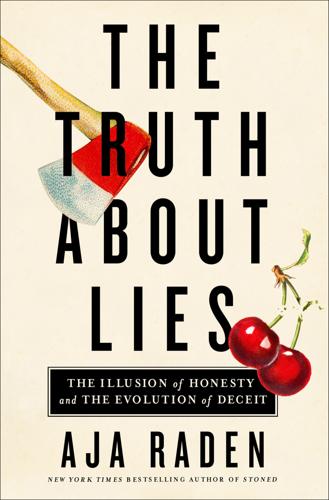
The Truth About Lies: The Illusion of Honesty and the Evolution of Deceit
by
Aja Raden
Published 10 May 2021
Both the royalty and the aristocrats of London accepted all he had to say about Poyais remarkably quickly and easily.7 And once London’s most privileged class had signaled that they believed MacGregor’s claims, the rest of English society quickly joined them, followed in turn by the commoners of England and Scotland, each stratum of society’s trust enhanced by the faith of the one above. There are a lot of funny quirks in our minds that explain, both neurologically and psychologically, why this sort of cascading failure of basic reason would occur. First and foremost, there’s that pesky honesty bias. But another cognitive bias, called authority bias, describes the way in which we tend to trust and are predisposed to believe the people who we see as having any kind of authority (including mere social stature) greater than our own. We’re wired to believe and trust our “betters,” essentially. Authority bias is also a primary factor in why we act in accordance with or follow orders from perceived authority figures—even when we feel like those authority figures might be in the wrong.
…
See credit-default swap central nervous system (CNS) regulating drugs Chabris, Christopher change blindness Change Raising con Chaplin, Charlie Chaudron, Yves Chinese Great Wall Hoax Chinese traditional snake oil medicine CNS. See central nervous system Coca-Cola, cocaine in cocaine, pharmaceutical marketing of cognitive bias. See also specific bias authority bias as cognitive dissonance lie belief and Rasputin and collective intelligence, honesty bias advantage of confirmation bias conflicting beliefs contagiousness, of facts counterfeit, in Forgery credit-default swap (CDS) critical mass Cups and Balls magic trick Da Vinci, Leonardo dangerous drugs, in patent medicines Dawkins, Richard De Beer’s diamond cartel diamond glut and deception Alaska telegraph wire Fox on Spiritualism delusion, of novelty dental surgery study, placebo effect and diamonds, Long Con of directives deference, in authority bias disbelief, Big Lie theory of mind and Dostoyevsky, Fyodor Doyle, Arthur Conan Eiffel Tower, Lustig sale of expectation, in placebo effect facts contagiousness of truth compared to faith belief relationship with televangelists and faith healers, false-memory effect and fake news, in Hoax false-memory effect memory adjustment method in mystical experiences FDA.
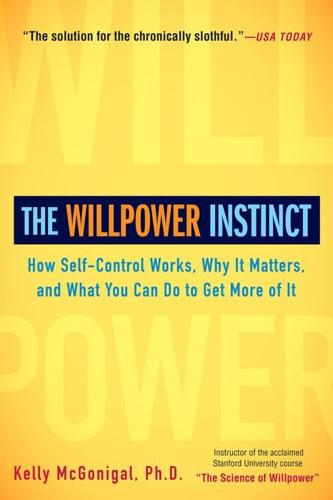
The Willpower Instinct: How Self-Control Works, Why It Matters, and What You Can Doto Get More of It
by
Kelly McGonigal
Published 1 Dec 2011
This leads to a second problem: When you try to push a thought away, and it keeps coming back to your mind, you are more likely to assume that it must be true. Why else would the thought keep resurfacing? We trust that our thoughts are important sources of information. When a thought becomes more frequent and harder to pull yourself away from, you will naturally assume that it is an urgent message that you should pay attention to. This cognitive bias seems to be hardwired in the human brain. We estimate how likely or true something is by the ease with which we can bring it to mind. This can have unsettling consequences when we try to push a worry or desire out of our minds. For example, because it’s easy to remember news stories about plane crashes (especially if you are a fearful flier handing over your boarding pass), we tend to overestimate the likelihood of being in a crash.
…
putting the future on sale time to wait, time to give in value of precommitment Willpower Experiment Lower Your Discount Rate Meet Your Future Self Precommit Your Future Self Wait Ten Minutes internal conflict ironic rebound avoiding I want, I will, I won’t neuroscience of “I want” power frustrated mom finds her want power “I won’t” power avoiding ironic rebound chocoholic takes inspiration from Hershey’s Kisses cognitive bias daughter makes peace with her anger inner acceptance, outer control Under the Microscope Investigating Ironic Rebound What’s on Your Most-Wanted List? no-dieting diet no smoking power of acceptance social anxiety disorder surfing urge to complain thought suppression dieting negativity thought suppression doesn’t work “white bears,” Willpower Experiment Accept Those Cravings—Just Don’t Act on Them Feel What You Feel, But Don’t Believe Everything You Think Surf the Urge Turn Your “I Won’t” Into “I Will,” Kivetz, Ran know thyself Knutson, Brian Kotchen, Matthew J.

The Rationalist's Guide to the Galaxy: Superintelligent AI and the Geeks Who Are Trying to Save Humanity's Future
by
Tom Chivers
Published 12 Jun 2019
Your estimates won’t be incorrect on average, and the more you learn, the smaller your error will tend to be.’1 But now, he says, imagine that the white balls are heavier than the red ones. They tend to sink to the bottom. ‘Then your sample may be unrepresentative in a consistent direction’, says Bensinger. Acquiring more data may not help you get it right. It may even make you more wrong. Cognitive biases work in a comparable way. A cognitive bias ‘is a systematic error in how we think, as opposed to a random error or one that’s merely caused by our ignorance. Whereas statistical bias skews a sample so that it less closely resembles a larger population, cognitive biases skew our beliefs so that they less accurately represent the facts, and they skew our decision-making so that it less reliably achieves our goals.’2 He gives the example of someone who has an optimism bias, and is told that the red balls can treat a disease that is killing that person’s brother.
…
When I was living in a dorm it would have been fine, but going back to that kind of life . . .’ But even just online, the Yudkowskian project has nonetheless had a profound impact on his life. For one thing, he steered his career towards it: he teaches about the economics of the far future, talks in his classes about cognitive bias, and has written a book on the potential rise of AGI, called Singularity Rising. ‘Before [LessWrong], I was a traditional economist,’ he said. ‘Not assuming that rationality is perfect, but thinking it’s a pretty good model and we don’t need to go beyond that. The LessWrong stuff convinced me that economists should be looking at cognitive biases.’

You Are Now Less Dumb: How to Conquer Mob Mentality, How to Buy Happiness, and All the Other Ways to Outsmart Yourself
by
David McRaney
Published 29 Jul 2013
Your narrative bias is bolstered when you are presented with an abundance of information. The more info you get about a statement, the more likely you are to believe that statement. The classic example of the conjunction fallacy comes from the work of psychologists Amos Tversky and Daniel Kahneman, the great pioneers of cognitive bias research, who in 1982 presented a puzzle I will showcase here in story form: Linda grew up in San Francisco, and while other girls played with dolls, she read philosophy books. She was always the kind of child who would stomp and snort when she didn’t get her way, and her parents had a hard time teaching her not to talk back.
…
Randall, Jack Block, and David C. Funder. “Overly Positive Self-evaluations and Personality: Negative Implications for Mental Health.” Journal of Personality and Social Psychology 68, no. 6 (1995): 1152–62. Cummins, Robert A., and Helen Nistico. “Maintaining Life Satisfaction: The Role of Positive Cognitive Bias.” Journal of Happiness Studies 3, no. 1 (2002): 37–69. Dahl, Melissa. “Most of Us Think We’re Hotter Than Average, Survey Says 60 Percent Satisfied with Appearance in a New Survey from Msnbc.com, ELLE.” MSNBC, Sept. 8, 2010. Web: July 2012, www.msnbc.msn.com/id/39044399/ns/health-skin_and_beauty/t/most-us-think-were-hotter-average-survey-says/.

The Big Nine: How the Tech Titans and Their Thinking Machines Could Warp Humanity
by
Amy Webb
Published 5 Mar 2019
The Royal Dutch Shell company popularized scenario planning when it revealed that scenarios had led managers to anticipate the global energy crisis (1973 and 1979) and the collapse of the market in 1986 and to mitigate risk in advance of their competition.8 Scenarios are such a powerful tool that Shell still, 45 years later, employs a large, dedicated team to researching and writing them. I’ve prepared risk and opportunity scenarios for the future of AI across many industries and fields and for a varied group of organizations. Scenarios are a tool to help us cope with a cognitive bias behavioral economics and legal scholar Cass Sunstein calls “probability neglect.”9 Our human brains are bad at assessing risk and peril. We assume that common activities are safer than novel or uncommon activities. For example, most of us feel completely safe driving our cars compared to flying on a commercial airline, yet air travel is the safest mode of transportation.
…
See also Dartmouth Workshop Royal Dutch Shell company, 141–142 Rubin, Andy, 55 Rus, Daniela, 65 Russell, Bertrand: Principia Mathematica, 30–31 Ryder, Jon, 41 Safety issues, AI: robots, 58; self-driving cars, 58. See also Accidents and mistakes, AI Safety standards, AI: establishment of global, 251 Salieri, Antonio, 16 Scenario planning, 141; Royal Dutch Shell company use of, 141–142. See also Scenarios Scenarios, 141; as cognitive bias behavioral economics coping tool, 142; preferred outcomes and, 141; probability neglect and, 142; purpose of, 143. See also Future and AI, catastrophic scenario of; Future and AI, optimistic scenario of; Future and AI, pragmatic scenario of Schmidt, Eric, 211–212 Self-driving taxi services, catastrophic scenario of future and: Amazon riders, 218–219; Google riders, 219 SenseTime, 5 Sentinel AIs, need for, 241 Shannon, Claude, 24, 25, 29, 31; “A Symbolic Analysis of Switching Relay Circuits,” 24.
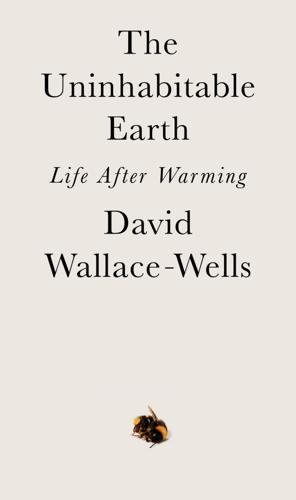
The Uninhabitable Earth: Life After Warming
by
David Wallace-Wells
Published 19 Feb 2019
We have an illusion of control, the behavioral economists tell us, and also suffer from overconfidence and an optimism bias. We also have a pessimism bias, not that it compensates—instead it pushes us to see challenges as predetermined defeats and to hear alarm, perhaps especially on climate, as cries of fatalism. The opposite of a cognitive bias, in other words, is not clear thinking but another cognitive bias. We can’t see anything but through cataracts of self-deception. Many of these insights may feel as intuitive and familiar as folk wisdom, which in some cases they are, dressed up in academic language. Behavioral economics is unusual as a contrarian intellectual movement in that it overturns beliefs—namely, in the perfectly rational human actor—that perhaps only its proponents ever truly believed, and maybe even only as economics undergraduates.

Mindf*ck: Cambridge Analytica and the Plot to Break America
by
Christopher Wylie
Published 8 Oct 2019
They tested for five letters (k, l, n, r, and v) like this. It is easier for people to think of words by first letter because we are taught to organize (or alphabetize) words by their first letter. However, people conflate this ease of recall with frequency or probability, even when this is far from the truth. This cognitive bias is called the availability heuristic, and is just one of many biases that affect our thinking. The bias is why, for example, people who see more news reports of violent murders on the news tend to think that society is becoming more violent when in fact global murder rates have been declining overall during the last quarter century.
…
After the Facebook data was collected, CA began exploring ways of taking this further by pulling photos of daughters of white men in order to pair them with photos of black men—to show white men what political correctness “really looked like.” Cambridge Analytica’s research panels also identified that there were relationships between target attitudes and a psychological effect called the just-world hypothesis (JWH). This is a cognitive bias where some people rely on a presumption of a fair world: The world is a fair place where bad things “happen for a reason” or will be offset by some sort of “moral balancing” in the universe. We found that people who displayed the JWH bias were, for example, more prone to victim-blaming in hypothetical scenarios of sexual assault.

The Art of Execution: How the World's Best Investors Get It Wrong and Still Make Millions
by
Lee Freeman-Shor
Published 8 Sep 2015
If the first time we are introduced to an investing idea we look at a price chart and see that it has consistently declined for the past ten years, we are likely to classify it as a ‘baddy’ (a ‘dog’ as the investment pros would call it). Thereafter this taints our view even when the underlying facts might have changed profoundly for the better. So there can be perfectly good companies shunned for no good reason. Committed value investors will not find this too surprising! 3. Anchor away A closely related cognitive bias to primacy error is anchoring – dropping our intellectual anchor and letting it sink deep into a view and being unwilling to accept new findings that suggest we are wrong and should haul it up and sail the hell out of there. If a Rabbit did eventually change his mind, it was always an achingly slow process.
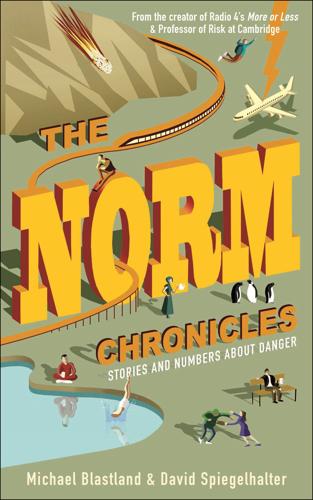
The Norm Chronicles
by
Michael Blastland
Published 14 Oct 2013
Meanwhile, the lift in his seven-floor block was out of order for long stretches. There were 634 deaths on stairs that year. Norm’s story is in a long, absurdist tradition with just enough evidence to make it almost plausible. In popular demonology, Health-and-Safety-Man might as well be a villain on Doctor Who. Psychologists talk of a cognitive bias for zero-risk, a preference for the certain elimination of a small risk over the probable reduction of a greater one. After all, what is safety but the absence of danger? So if you believe in a safer world, picking on risks you think you can cut out altogether may seem to make a kind of sense, almost whatever it takes.
…
† – or to a few incidents of the same kind of crime close together – ‘all those knife attacks’ – and we take special notice of personal experience – anything really, that stands out, any alarm large and small to trigger our attention and help us to a quick judgement. The psychologist Daniel Kahneman describes the brain as a machine for jumping to conclusions, working according to a law of least effort. This is especially true about fear.4 If there’s something frightening about, it pays not to hang around. Kahneman says this mental habit is a cognitive bias, and crime stories would seem to appeal to it perfectly. Paul Slovic, a colleague of Kahneman’s in the 1970s, also showed that vivid events are recalled not merely more vividly but in the belief that there are more of them (see also Chapter 4). And crime is often vivid. The power of the single example over the mass of data is well studied.
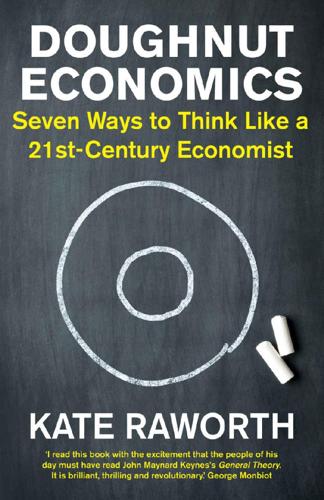
Doughnut Economics: Seven Ways to Think Like a 21st-Century Economist
by
Kate Raworth
Published 22 Mar 2017
That much has been agreed upon since the 1950s when Herbert Simon broke rank with his fellow economists and started to study how people actually behaved, finding their rationality to be severely ‘bounded’. His findings, augmented by those of psychologists Daniel Kahneman and Amos Tversky in the 1970s, gave birth to the field now known as behavioural economics, which studies the many kinds of ‘cognitive bias’ that systematically cause humans to deviate from the ideal model of rationality. Examples abound. We (the WEIRD ones, at least) typically exhibit: availability bias – making decisions on the basis of more recent and more accessible information; loss aversion – the strong preference to avoid a loss rather than to make an equivalent gain; selective cognition – taking on board facts and arguments that fit with our existing frames; and risk bias – underestimating the likelihood of extreme events, while overestimating our ability to cope with them.
…
Page numbers in italics denote illustrations A Aalborg, Denmark, 290 Abbott, Anthony ‘Tony’, 31 ABCD group, 148 Abramovitz, Moses, 262 absolute decoupling, 260–61 Acemoglu, Daron, 86 advertising, 58, 106–7, 112, 281 Agbodjinou, Sénamé, 231 agriculture, 5, 46, 72–3, 148, 155, 178, 181, 183 Alaska, 9 Alaska Permanent Fund, 194 Alperovitz, Gar, 177 alternative enterprise designs, 190–91 altruism, 100, 104 Amazon, 192, 196, 276 Amazon rainforest, 105–6, 253 American Economic Association, 3 American Enterprise Institute, 67 American Tobacco Corporation, 107 Andes, 54 animal spirits, 110 Anthropocene epoch, 48, 253 anthropocentrism, 115 Apertuso, 230 Apple, 85, 192 Archer Daniels Midland (ADM), 148 Arendt, Hannah, 115–16 Argentina, 55, 274 Aristotle, 32, 272 Arrow, Kenneth, 134 Articles of Association and Memoranda, 233 Arusha, Tanzania, 202 Asia Wage Floor Alliance, 177 Asian financial crisis (1997), 90 Asknature.org, 232 Athens, 57 austerity, 163 Australia, 31, 103, 177, 180, 211, 224–6, 255, 260 Austria, 263, 274 availability bias, 112 AXIOM, 230 Axtell, Robert, 150 Ayres, Robert, 263 B B Corp, 241 Babylon, 13 Baker, Josephine, 157 balancing feedback loops, 138–41, 155, 271 Ballmer, Steve, 231 Bangla Pesa, 185–6, 293 Bangladesh, 10, 226 Bank for International Settlements, 256 Bank of America, 149 Bank of England, 145, 147, 256 banking, see under finance Barnes, Peter, 201 Barroso, José Manuel, 41 Bartlett, Albert Allen ‘Al’, 247 basic income, 177, 194, 199–201 basic personal values, 107–9 Basle, Switzerland, 80 Bauwens, Michel, 197 Beckerman, Wilfred, 258 Beckham, David, 171 Beech-Nut Packing Company, 107 behavioural economics, 11, 111–14 behavioural psychology, 103, 128 Beinhocker, Eric, 158 Belgium, 236, 252 Bentham, Jeremy, 98 Benyus, Janine, 116, 218, 223–4, 227, 232, 237, 241 Berger, John, 12, 281 Berlin Wall, 141 Bermuda, 277 Bernanke, Ben, 146 Bernays, Edward, 107, 112, 281–3 Bhopal gas disaster (1984), 9 Bible, 19, 114, 151 Big Bang (1986), 87 billionaires, 171, 200, 289 biodiversity, 10, 46, 48–9, 52, 85, 115, 155, 208, 210, 242, 299 as common pool resource, 201 and land conversion, 49 and inequality, 172 and reforesting, 50 biomass, 73, 118, 210, 212, 221 biomimicry, 116, 218, 227, 229 bioplastic, 224, 293 Birmingham, West Midlands, 10 Black, Fischer, 100–101 Blair, Anthony ‘Tony’, 171 Blockchain, 187, 192 blood donation, 104, 118 Body Shop, The, 232–4 Bogotá, Colombia, 119 Bolivia, 54 Boston, Massachusetts, 3 Bowen, Alex, 261 Bowles, Sam, 104 Box, George, 22 Boyce, James, 209 Brasselberg, Jacob, 187 Brazil, 124, 226, 281, 290 bread riots, 89 Brisbane, Australia, 31 Brown, Gordon, 146 Brynjolfsson, Erik, 193, 194, 258 Buddhism, 54 buen vivir, 54 Bullitt Center, Seattle, 217 Bunge, 148 Burkina Faso, 89 Burmark, Lynell, 13 business, 36, 43, 68, 88–9 automation, 191–5, 237, 258, 278 boom and bust, 246 and circular economy, 212, 215–19, 220, 224, 227–30, 232–4, 292 and complementary currencies, 184–5, 292 and core economy, 80 and creative destruction, 142 and feedback loops, 148 and finance, 183, 184 and green growth, 261, 265, 269 and households, 63, 68 living metrics, 241 and market, 68, 88 micro-businesses, 9 and neoliberalism, 67, 87 ownership, 190–91 and political funding, 91–2, 171–2 and taxation, 23, 276–7 workers’ rights, 88, 91, 269 butterfly economy, 220–42 C C–ROADS (Climate Rapid Overview and Decision Support), 153 C40 network, 280 calculating man, 98 California, United States, 213, 224, 293 Cambodia, 254 Cameron, David, 41 Canada, 196, 255, 260, 281, 282 cancer, 124, 159, 196 Capital Institute, 236 carbon emissions, 49–50, 59, 75 and decoupling, 260, 266 and forests, 50, 52 and inequality, 58 reduction of, 184, 201, 213, 216–18, 223–7, 239–41, 260, 266 stock–flow dynamics, 152–4 taxation, 201, 213 Cargill, 148 Carney, Mark, 256 Caterpillar, 228 Catholic Church, 15, 19 Cato Institute, 67 Celts, 54 central banks, 6, 87, 145, 146, 147, 183, 184, 256 Chang, Ha-Joon, 82, 86, 90 Chaplin, Charlie, 157 Chiapas, Mexico, 121–2 Chicago Board Options Exchange (CBOE), 100–101 Chicago School, 34, 99 Chile, 7, 42 China, 1, 7, 48, 154, 289–90 automation, 193 billionaires, 200, 289 greenhouse gas emissions, 153 inequality, 164 Lake Erhai doughnut analysis, 56 open-source design, 196 poverty reduction, 151, 198 renewable energy, 239 tiered pricing, 213 Chinese Development Bank, 239 chrematistics, 32, 273 Christianity, 15, 19, 114, 151 cigarettes, 107, 124 circular economy, 220–42, 257 Circular Flow diagram, 19–20, 28, 62–7, 64, 70, 78, 87, 91, 92, 93, 262 Citigroup, 149 Citizen Reaction Study, 102 civil rights movement, 77 Cleveland, Ohio, 190 climate change, 1, 3, 5, 29, 41, 45–53, 63, 74, 75–6, 91, 141, 144, 201 circular economy, 239, 241–2 dynamics of, 152–5 and G20, 31 and GDP growth, 255, 256, 260, 280 and heuristics, 114 and human rights, 10 and values, 126 climate positive cities, 239 closed systems, 74 coffee, 221 cognitive bias, 112–14 Colander, David, 137 Colombia, 119 common-pool resources, 82–3, 181, 201–2 commons, 69, 82–4, 287 collaborative, 78, 83, 191, 195, 196, 264, 292 cultural, 83 digital, 82, 83, 192, 197, 281 and distribution, 164, 180, 181–2, 205, 267 Embedded Economy, 71, 73, 77–8, 82–4, 85, 92 knowledge, 197, 201–2, 204, 229, 231, 292 commons and money creation, see complementary currencies natural, 82, 83, 180, 181–2, 201, 265 and regeneration, 229, 242, 267, 292 and state, 85, 93, 197, 237 and systems, 160 tragedy of, 28, 62, 69, 82, 181 triumph of, 83 and values, 106, 108 Commons Trusts, 201 complementary currencies, 158, 182–8, 236, 292 complex systems, 28, 129–62 complexity science, 136–7 Consumer Reaction Study, 102 consumerism, 58, 102, 121, 280–84 cooking, 45, 80, 186 Coote, Anna, 278 Copenhagen, Denmark, 124 Copernicus, Nicolaus, 14–15 copyright, 195, 197, 204 core economy, 79–80 Corporate To Do List, 215–19 Costa Rica, 172 Council of Economic Advisers, US, 6, 37 Cox, Jo, 117 cradle to cradle, 224 creative destruction, 142 Cree, 282 Crompton, Tom, 125–6 cross-border flows, 89–90 crowdsourcing, 204 cuckoos, 32, 35, 36, 38, 40, 54, 60, 159, 244, 256, 271 currencies, 182–8, 236, 274, 292 D da Vinci, Leonardo, 13, 94–5 Dallas, Texas, 120 Daly, Herman, 74, 143, 271 Danish Nudging Network, 124 Darwin, Charles, 14 Debreu, Gerard, 134 debt, 37, 146–7, 172–3, 182–5, 247, 255, 269 decoupling, 193, 210, 258–62, 273 defeat device software, 216 deforestation, 49–50, 74, 208, 210 degenerative linear economy, 211–19, 222–3, 237 degrowth, 244 DeMartino, George, 161 democracy, 77, 171–2, 258 demurrage, 274 Denmark, 180, 275, 290 deregulation, 82, 87, 269 derivatives, 100–101, 149 Devas, Charles Stanton, 97 Dey, Suchitra, 178 Diamond, Jared, 154 diarrhoea, 5 differential calculus, 131, 132 digital revolution, 191–2, 264 diversify–select–amplify, 158 double spiral, 54 Doughnut model, 10–11, 11, 23–5, 44, 51 and aspiration, 58–9, 280–84 big picture, 28, 42, 61–93 distribution, 29, 52, 57, 58, 76, 93, 158, 163–205 ecological ceiling, 10, 11, 44, 45, 46, 49, 51, 218, 254, 295, 298 goal, 25–8, 31–60 and governance, 57, 59 growth agnosticism, 29–30, 243–85 human nature, 28–9, 94–128 and population, 57–8 regeneration, 29, 158, 206–42 social foundation, 10, 11, 44, 45, 49, 51, 58, 77, 174, 200, 254, 295–6 systems, 28, 129–62 and technology, 57, 59 Douglas, Margaret, 78–9 Dreyfus, Louis, 148 ‘Dumb and Dumber in Macroeconomics’ (Solow), 135 Durban, South Africa, 214 E Earning by Learning, 120 Earth-system science, 44–53, 115, 216, 288, 298 Easter Island, 154 Easterlin, Richard, 265–6 eBay, 105, 192 eco-literacy, 115 ecological ceiling, 10, 11, 44, 45, 46, 49, 51, 218, 254, 295, 298 Ecological Performance Standards, 241 Econ 101 course, 8, 77 Economics (Lewis), 114 Economics (Samuelson), 19–20, 63–7, 70, 74, 78, 86, 91, 92, 93, 262 Economy for the Common Good, 241 ecosystem services, 7, 116, 269 Ecuador, 54 education, 9, 43, 45, 50–52, 85, 169–70, 176, 200, 249, 279 economic, 8, 11, 18, 22, 24, 36, 287–93 environmental, 115, 239–40 girls’, 57, 124, 178, 198 online, 83, 197, 264, 290 pricing, 118–19 efficient market hypothesis, 28, 62, 68, 87 Egypt, 48, 89 Eisenstein, Charles, 116 electricity, 9, 45, 236, 240 and Bangla Pesa, 186 cars, 231 Ethereum, 187–8 and MONIAC, 75, 262 pricing, 118, 213 see also renewable energy Elizabeth II, Queen of the United Kingdom, 145 Ellen MacArthur Foundation, 220 Embedded Economy, 71–93, 263 business, 88–9 commons, 82–4 Earth, 72–6 economy, 77–8 finance, 86–8 household, 78–81 market, 81–2 power, 91–92 society, 76–7 state, 84–6 trade, 89–90 employment, 36, 37, 51, 142, 176 automation, 191–5, 237, 258, 278 labour ownership, 188–91 workers’ rights, 88, 90, 269 Empty World, 74 Engels, Friedrich, 88 environment and circular economy, 220–42, 257 conservation, 121–2 and degenerative linear economy, 211–19, 222–3 degradation, 5, 9, 10, 29, 44–53, 74, 154, 172, 196, 206–42 education on, 115, 239–40 externalities, 152 fair share, 216–17 and finance, 234–7 generosity, 218–19, 223–7 green growth, 41, 210, 243–85 nudging, 123–5 taxation and quotas, 213–14, 215 zero impact, 217–18, 238, 241 Environmental Dashboard, 240–41 environmental economics, 7, 11, 114–16 Environmental Kuznets Curve, 207–11, 241 environmental space, 54 Epstein, Joshua, 150 equilibrium theory, 134–62 Ethereum, 187–8 ethics, 160–62 Ethiopia, 9, 226, 254 Etsy, 105 Euclid, 13, 15 European Central Bank, 145, 275 European Commission, 41 European Union (EU), 92, 153, 210, 222, 255, 258 Evergreen Cooperatives, 190 Evergreen Direct Investing (EDI), 273 exogenous shocks, 141 exponential growth, 39, 246–85 externalities, 143, 152, 213 Exxon Valdez oil spill (1989), 9 F Facebook, 192 fair share, 216–17 Fama, Eugene, 68, 87 fascism, 234, 277 Federal Reserve, US, 87, 145, 146, 271, 282 feedback loops, 138–41, 143, 148, 155, 250, 271 feminist economics, 11, 78–81, 160 Ferguson, Thomas, 91–2 finance animal spirits, 110 bank runs, 139 Black–Scholes model, 100–101 boom and bust, 28–9, 110, 144–7 and Circular Flow, 63–4, 87 and complex systems, 134, 138, 139, 140, 141, 145–7 cross-border flows, 89 deregulation, 87 derivatives, 100–101, 149 and distribution, 169, 170, 173, 182–4, 198–9, 201 and efficient market hypothesis, 63, 68 and Embedded Economy, 71, 86–8 and financial-instability hypothesis, 87, 146 and GDP growth, 38 and media, 7–8 mobile banking, 199–200 and money creation, 87, 182–5 and regeneration, 227, 229, 234–7 in service to life, 159, 234–7 stakeholder finance, 190 and sustainability, 216, 235–6, 239 financial crisis (2008), 1–4, 5, 40, 63, 86, 141, 144, 278, 290 and efficient market hypothesis, 87 and equilibrium theory, 134, 145 and financial-instability hypothesis, 87 and inequality, 90, 170, 172, 175 and money creation, 182 and worker’s rights, 278 financial flows, 89 Financial Times, 183, 266, 289 financial-instability hypothesis, 87, 146 First Green Bank, 236 First World War (1914–18), 166, 170 Fisher, Irving, 183 fluid values, 102, 106–9 food, 3, 43, 45, 50, 54, 58, 59, 89, 198 food banks, 165 food price crisis (2007–8), 89, 90, 180 Ford, 277–8 foreign direct investment, 89 forest conservation, 121–2 fossil fuels, 59, 73, 75, 92, 212, 260, 263 Foundations of Economic Analysis (Samuelson), 17–18 Foxconn, 193 framing, 22–3 France, 43, 165, 196, 238, 254, 256, 281, 290 Frank, Robert, 100 free market, 33, 37, 67, 68, 70, 81–2, 86, 90 free open-source hardware (FOSH), 196–7 free open-source software (FOSS), 196 free trade, 70, 90 Freeman, Ralph, 18–19 freshwater cycle, 48–9 Freud, Sigmund, 107, 281 Friedman, Benjamin, 258 Friedman, Milton, 34, 62, 66–9, 84–5, 88, 99, 183, 232 Friends of the Earth, 54 Full World, 75 Fuller, Buckminster, 4 Fullerton, John, 234–6, 273 G G20, 31, 56, 276, 279–80 G77, 55 Gal, Orit, 141 Gandhi, Mohandas, 42, 293 Gangnam Style, 145 Gardens of Democracy, The (Liu & Hanauer), 158 gender equality, 45, 51–2, 57, 78–9, 85, 88, 118–19, 124, 171, 198 generosity, 218–19, 223–9 geometry, 13, 15 George, Henry, 149, 179 Georgescu-Roegen, Nicholas, 252 geothermal energy, 221 Gerhardt, Sue, 283 Germany, 2, 41, 100, 118, 165, 189, 211, 213, 254, 256, 260, 274 Gessel, Silvio, 274 Ghent, Belgium, 236 Gift Relationship, The (Titmuss), 118–19 Gigerenzer, Gerd, 112–14 Gintis, Herb, 104 GiveDirectly, 200 Glass–Steagall Act (1933), 87 Glennon, Roger, 214 Global Alliance for Tax Justice, 277 global material footprints, 210–11 Global Village Construction Set, 196 globalisation, 89 Goerner, Sally, 175–6 Goffmann, Erving, 22 Going for Growth, 255 golden rule, 91 Goldman Sachs, 149, 170 Gómez-Baggethun, Erik, 122 Goodall, Chris, 211 Goodwin, Neva, 79 Goody, Jade, 124 Google, 192 Gore, Albert ‘Al’, 172 Gorgons, 244, 256, 257, 266 graffiti, 15, 25, 287 Great Acceleration, 46, 253–4 Great Depression (1929–39), 37, 70, 170, 173, 183, 275, 277, 278 Great Moderation, 146 Greece, Ancient, 4, 13, 32, 48, 54, 56–7, 160, 244 green growth, 41, 210, 243–85 Greenham, Tony, 185 greenhouse gas emissions, 31, 46, 50, 75–6, 141, 152–4 and decoupling, 260, 266 and Environmental Kuznets Curve, 208, 210 and forests, 50, 52 and G20, 31 and inequality, 58 reduction of, 184, 201–2, 213, 216–18, 223–7, 239–41, 256, 259–60, 266, 298 stock–flow dynamics, 152–4 and taxation, 201, 213 Greenland, 141, 154 Greenpeace, 9 Greenspan, Alan, 87 Greenwich, London, 290 Grenoble, France, 281 Griffiths, Brian, 170 gross domestic product (GDP), 25, 31–2, 35–43, 57, 60, 84, 164 as cuckoo, 32, 35, 36, 38, 40, 54, 60, 159, 244, 256, 271 and Environmental Kuznets Curve, 207–11 and exponential growth, 39, 53, 246–85 and growth agnosticism, 29–30, 240, 243–85 and inequality, 173 and Kuznets Curve, 167, 173, 188–9 gross national product (GNP), 36–40 Gross World Product, 248 Grossman, Gene, 207–8, 210 ‘grow now, clean up later’, 207 Guatemala, 196 H Haifa, Israel, 120 Haldane, Andrew, 146 Han Dynasty, 154 Hanauer, Nick, 158 Hansen, Pelle, 124 Happy Planet Index, 280 Hardin, Garrett, 69, 83, 181 Harvard University, 2, 271, 290 von Hayek, Friedrich, 7–8, 62, 66, 67, 143, 156, 158 healthcare, 43, 50, 57, 85, 123, 125, 170, 176, 200, 269, 279 Heilbroner, Robert, 53 Henry VIII, King of England and Ireland, 180 Hepburn, Cameron, 261 Herbert Simon, 111 heuristics, 113–14, 118, 123 high-income countries growth, 30, 244–5, 254–72, 282 inequality, 165, 168, 169, 171 labour, 177, 188–9, 278 overseas development assistance (ODA), 198–9 resource intensive lifestyles, 46, 210–11 trade, 90 Hippocrates, 160 History of Economic Analysis (Schumpeter), 21 HIV/AIDS, 123 Holocene epoch, 46–8, 75, 115, 253 Homo economicus, 94–103, 109, 127–8 Homo sapiens, 38, 104, 130 Hong Kong, 180 household, 78 housing, 45, 59, 176, 182–3, 269 Howe, Geoffrey, 67 Hudson, Michael, 183 Human Development Index, 9, 279 human nature, 28 human rights, 10, 25, 45, 49, 50, 95, 214, 233 humanistic economics, 42 hydropower, 118, 260, 263 I Illinois, United States, 179–80 Imago Mundi, 13 immigration, 82, 199, 236, 266 In Defense of Economic Growth (Beckerman), 258 Inclusive Wealth Index, 280 income, 51, 79–80, 82, 88, 176–8, 188–91, 194, 199–201 India, 2, 9, 10, 42, 124, 164, 178, 196, 206–7, 242, 290 Indonesia, 90, 105–6, 164, 168, 200 Indus Valley civilisation, 48 inequality, 1, 5, 25, 41, 63, 81, 88, 91, 148–52, 209 and consumerism, 111 and democracy, 171 and digital revolution, 191–5 and distribution, 163–205 and environmental degradation, 172 and GDP growth, 173 and greenhouse gas emissions, 58 and intellectual property, 195–8 and Kuznets Curve, 29, 166–70, 173–4 and labour ownership, 188–91 and land ownership, 178–82 and money creation, 182–8 and social welfare, 171 Success to the Successful, 148, 149, 151, 166 inflation, 36, 248, 256, 275 insect pollination services, 7 Institute of Economic Affairs, 67 institutional economics, 11 intellectual property rights, 195–8, 204 interest, 36, 177, 182, 184, 275–6 Intergovernmental Panel on Climate Change, 25 International Monetary Fund (IMF), 170, 172, 173, 183, 255, 258, 271 Internet, 83–4, 89, 105, 192, 202, 264 Ireland, 277 Iroquois Onondaga Nation, 116 Israel, 100, 103, 120 Italy, 165, 196, 254 J Jackson, Tim, 58 Jakubowski, Marcin, 196 Jalisco, Mexico, 217 Japan, 168, 180, 211, 222, 254, 256, 263, 275 Jevons, William Stanley, 16, 97–8, 131, 132, 137, 142 John Lewis Partnership, 190 Johnson, Lyndon Baines, 37 Johnson, Mark, 38 Johnson, Todd, 191 JPMorgan Chase, 149, 234 K Kahneman, Daniel, 111 Kamkwamba, William, 202, 204 Kasser, Tim, 125–6 Keen, Steve, 146, 147 Kelly, Marjorie, 190–91, 233 Kennedy, John Fitzgerald, 37, 250 Kennedy, Paul, 279 Kenya, 118, 123, 180, 185–6, 199–200, 226, 292 Keynes, John Maynard, 7–8, 22, 66, 69, 134, 184, 251, 277–8, 284, 288 Kick It Over movement, 3, 289 Kingston, London, 290 Knight, Frank, 66, 99 knowledge commons, 202–4, 229, 292 Kokstad, South Africa, 56 Kondratieff waves, 246 Korzybski, Alfred, 22 Krueger, Alan, 207–8, 210 Kuhn, Thomas, 22 Kumhof, Michael, 172 Kuwait, 255 Kuznets, Simon, 29, 36, 39–40, 166–70, 173, 174, 175, 204, 207 KwaZulu Natal, South Africa, 56 L labour ownership, 188–91 Lake Erhai, Yunnan, 56 Lakoff, George, 23, 38, 276 Lamelara, Indonesia, 105–6 land conversion, 49, 52, 299 land ownership, 178–82 land-value tax, 73, 149, 180 Landesa, 178 Landlord’s Game, The, 149 law of demand, 16 laws of motion, 13, 16–17, 34, 129, 131 Lehman Brothers, 141 Leopold, Aldo, 115 Lesotho, 118, 199 leverage points, 159 Lewis, Fay, 178 Lewis, Justin, 102 Lewis, William Arthur, 114, 167 Lietaer, Bernard, 175, 236 Limits to Growth, 40, 154, 258 Linux, 231 Liu, Eric, 158 living metrics, 240–42 living purpose, 233–4 Lomé, Togo, 231 London School of Economics (LSE), 2, 34, 65, 290 London Underground, 12 loss aversion, 112 low-income countries, 90, 164–5, 168, 173, 180, 199, 201, 209, 226, 254, 259 Lucas, Robert, 171 Lula da Silva, Luiz Inácio, 124 Luxembourg, 277 Lyle, John Tillman, 214 Lyons, Oren, 116 M M–PESA, 199–200 MacDonald, Tim, 273 Machiguenga, 105–6 MacKenzie, Donald, 101 macroeconomics, 36, 62–6, 76, 80, 134–5, 145, 147, 150, 244, 280 Magie, Elizabeth, 149, 153 Malala effect, 124 malaria, 5 Malawi, 118, 202, 204 Malaysia, 168 Mali, Taylor, 243 Malthus, Thomas, 252 Mamsera Rural Cooperative, 190 Manhattan, New York, 9, 41 Mani, Muthukumara, 206 Manitoba, 282 Mankiw, Gregory, 2, 34 Mannheim, Karl, 22 Maoris, 54 market, 81–2 and business, 88 circular flow, 64 and commons, 83, 93, 181, 200–201 efficiency of, 28, 62, 68, 87, 148, 181 and equilibrium theory, 131–5, 137, 143–7, 155, 156 free market, 33, 37, 67–70, 90, 208 and households, 63, 69, 78, 79 and maxi-max rule, 161 and pricing, 117–23, 131, 160 and rational economic man, 96, 100–101, 103, 104 and reciprocity, 105, 106 reflexivity of, 144–7 and society, 69–70 and state, 84–6, 200, 281 Marshall, Alfred, 17, 98, 133, 165, 253, 282 Marx, Karl, 88, 142, 165, 272 Massachusetts Institute of Technology (MIT), 17–20, 152–5 massive open online courses (MOOCs), 290 Matthew Effect, 151 Max-Neef, Manfred, 42 maxi-max rule, 161 maximum wage, 177 Maya civilisation, 48, 154 Mazzucato, Mariana, 85, 195, 238 McAfee, Andrew, 194, 258 McDonough, William, 217 Meadows, Donella, 40, 141, 159, 271, 292 Medusa, 244, 257, 266 Merkel, Angela, 41 Messerli, Elspeth, 187 Metaphors We Live By (Lakoff & Johnson), 38 Mexico, 121–2, 217 Michaels, Flora S., 6 micro-businesses, 9, 173, 178 microeconomics, 132–4 microgrids, 187–8 Micronesia, 153 Microsoft, 231 middle class, 6, 46, 58 middle-income countries, 90, 164, 168, 173, 180, 226, 254 migration, 82, 89–90, 166, 195, 199, 236, 266, 286 Milanovic, Branko, 171 Mill, John Stuart, 33–4, 73, 97, 250, 251, 283, 284, 288 Millo, Yuval, 101 minimum wage, 82, 88, 176 Minsky, Hyman, 87, 146 Mises, Ludwig von, 66 mission zero, 217 mobile banking, 199–200 mobile phones, 222 Model T revolution, 277–8 Moldova, 199 Mombasa, Kenya, 185–6 Mona Lisa (da Vinci), 94 money creation, 87, 164, 177, 182–8, 205 MONIAC (Monetary National Income Analogue Computer), 64–5, 75, 142, 262 Monoculture (Michaels), 6 Monopoly, 149 Mont Pelerin Society, 67, 93 Moral Consequences of Economic Growth, The (Friedman), 258 moral vacancy, 41 Morgan, Mary, 99 Morogoro, Tanzania, 121 Moyo, Dambisa, 258 Muirhead, Sam, 230, 231 MultiCapital Scorecard, 241 Murphy, David, 264 Murphy, Richard, 185 musical tastes, 110 Myriad Genetics, 196 N national basic income, 177 Native Americans, 115, 116, 282 natural capital, 7, 116, 269 Natural Economic Order, The (Gessel), 274 Nedbank, 216 negative externalities, 213 negative interest rates, 275–6 neoclassical economics, 134, 135 neoliberalism, 7, 62–3, 67–70, 81, 83, 84, 88, 93, 143, 170, 176 Nepal, 181, 199 Nestlé, 217 Netherlands, 211, 235, 224, 226, 238, 277 networks, 110–11, 117, 118, 123, 124–6, 174–6 neuroscience, 12–13 New Deal, 37 New Economics Foundation, 278, 283 New Year’s Day, 124 New York, United States, 9, 41, 55 Newlight Technologies, 224, 226, 293 Newton, Isaac, 13, 15–17, 32–3, 95, 97, 129, 131, 135–7, 142, 145, 162 Nicaragua, 196 Nigeria, 164 nitrogen, 49, 52, 212–13, 216, 218, 221, 226, 298 ‘no pain, no gain’, 163, 167, 173, 204, 209 Nobel Prize, 6–7, 43, 83, 101, 167 Norway, 281 nudging, 112, 113, 114, 123–6 O Obama, Barack, 41, 92 Oberlin, Ohio, 239, 240–41 Occupy movement, 40, 91 ocean acidification, 45, 46, 52, 155, 242, 298 Ohio, United States, 190, 239 Okun, Arthur, 37 onwards and upwards, 53 Open Building Institute, 196 Open Source Circular Economy (OSCE), 229–32 open systems, 74 open-source design, 158, 196–8, 265 open-source licensing, 204 Organisation for Economic Co-operation and Development (OECD), 38, 210, 255–6, 258 Origin of Species, The (Darwin), 14 Ormerod, Paul, 110, 111 Orr, David, 239 Ostrom, Elinor, 83, 84, 158, 160, 181–2 Ostry, Jonathan, 173 OSVehicle, 231 overseas development assistance (ODA), 198–200 ownership of wealth, 177–82 Oxfam, 9, 44 Oxford University, 1, 36 ozone layer, 9, 50, 115 P Pachamama, 54, 55 Pakistan, 124 Pareto, Vilfredo, 165–6, 175 Paris, France, 290 Park 20|20, Netherlands, 224, 226 Parker Brothers, 149 Patagonia, 56 patents, 195–6, 197, 204 patient capital, 235 Paypal, 192 Pearce, Joshua, 197, 203–4 peer-to-peer networks, 187, 192, 198, 203, 292 People’s QE, 184–5 Perseus, 244 Persia, 13 Peru, 2, 105–6 Phillips, Adam, 283 Phillips, William ‘Bill’, 64–6, 75, 142, 262 phosphorus, 49, 52, 212–13, 218, 298 Physiocrats, 73 Pickett, Kate, 171 pictures, 12–25 Piketty, Thomas, 169 Playfair, William, 16 Poincaré, Henri, 109, 127–8 Polanyi, Karl, 82, 272 political economy, 33–4, 42 political funding, 91–2, 171–2 political voice, 43, 45, 51–2, 77, 117 pollution, 29, 45, 52, 85, 143, 155, 206–17, 226, 238, 242, 254, 298 population, 5, 46, 57, 155, 199, 250, 252, 254 Portugal, 211 post-growth society, 250 poverty, 5, 9, 37, 41, 50, 88, 118, 148, 151 emotional, 283 and inequality, 164–5, 168–9, 178 and overseas development assistance (ODA), 198–200 and taxation, 277 power, 91–92 pre-analytic vision, 21–2 prescription medicines, 123 price-takers, 132 prices, 81, 118–23, 131, 160 Principles of Economics (Mankiw), 34 Principles of Economics (Marshall), 17, 98 Principles of Political Economy (Mill), 288 ProComposto, 226 Propaganda (Bernays), 107 public relations, 107, 281 public spending v. investment, 276 public–private patents, 195 Putnam, Robert, 76–7 Q quantitative easing (QE), 184–5 Quebec, 281 Quesnay, François, 16, 73 R Rabot, Ghent, 236 Rancière, Romain, 172 rating and review systems, 105 rational economic man, 94–103, 109, 111, 112, 126, 282 Reagan, Ronald, 67 reciprocity, 103–6, 117, 118, 123 reflexivity of markets, 144 reinforcing feedback loops, 138–41, 148, 250, 271 relative decoupling, 259 renewable energy biomass energy, 118, 221 and circular economy, 221, 224, 226, 235, 238–9, 274 and commons, 83, 85, 185, 187–8, 192, 203, 264 geothermal energy, 221 and green growth, 257, 260, 263, 264, 267 hydropower, 118, 260, 263 pricing, 118 solar energy, see solar energy wave energy, 221 wind energy, 75, 118, 196, 202–3, 221, 233, 239, 260, 263 rentier sector, 180, 183, 184 reregulation, 82, 87, 269 resource flows, 175 resource-intensive lifestyles, 46 Rethinking Economics, 289 Reynebeau, Guy, 237 Ricardo, David, 67, 68, 73, 89, 250 Richardson, Katherine, 53 Rifkin, Jeremy, 83, 264–5 Rise and Fall of the Great Powers, The (Kennedy), 279 risk, 112, 113–14 Robbins, Lionel, 34 Robinson, James, 86 Robinson, Joan, 142 robots, 191–5, 237, 258, 278 Rockefeller Foundation, 135 Rockford, Illinois, 179–80 Rockström, Johan, 48, 55 Roddick, Anita, 232–4 Rogoff, Kenneth, 271, 280 Roman Catholic Church, 15, 19 Rombo, Tanzania, 190 Rome, Ancient, 13, 48, 154 Romney, Mitt, 92 Roosevelt, Franklin Delano, 37 rooted membership, 190 Rostow, Walt, 248–50, 254, 257, 267–70, 284 Ruddick, Will, 185 rule of thumb, 113–14 Ruskin, John, 42, 223 Russia, 200 rust belt, 90, 239 S S curve, 251–6 Sainsbury’s, 56 Samuelson, Paul, 17–21, 24–5, 38, 62–7, 70, 74, 84, 91, 92, 93, 262, 290–91 Sandel, Michael, 41, 120–21 Sanergy, 226 sanitation, 5, 51, 59 Santa Fe, California, 213 Santinagar, West Bengal, 178 São Paolo, Brazil, 281 Sarkozy, Nicolas, 43 Saumweder, Philipp, 226 Scharmer, Otto, 115 Scholes, Myron, 100–101 Schumacher, Ernst Friedrich, 42, 142 Schumpeter, Joseph, 21 Schwartz, Shalom, 107–9 Schwarzenegger, Arnold, 163, 167, 204 ‘Science and Complexity’ (Weaver), 136 Scotland, 57 Seaman, David, 187 Seattle, Washington, 217 second machine age, 258 Second World War (1939–45), 18, 37, 70, 170 secular stagnation, 256 self-interest, 28, 68, 96–7, 99–100, 102–3 Selfish Society, The (Gerhardt), 283 Sen, Amartya, 43 Shakespeare, William, 61–3, 67, 93 shale gas, 264, 269 Shang Dynasty, 48 shareholders, 82, 88, 189, 191, 227, 234, 273, 292 sharing economy, 264 Sheraton Hotel, Boston, 3 Siegen, Germany, 290 Silicon Valley, 231 Simon, Julian, 70 Sinclair, Upton, 255 Sismondi, Jean, 42 slavery, 33, 77, 161 Slovenia, 177 Small Is Beautiful (Schumacher), 42 smart phones, 85 Smith, Adam, 33, 57, 67, 68, 73, 78–9, 81, 96–7, 103–4, 128, 133, 160, 181, 250 social capital, 76–7, 122, 125, 172 social contract, 120, 125 social foundation, 10, 11, 44, 45, 49, 51, 58, 77, 174, 200, 254, 295–6 social media, 83, 281 Social Progress Index, 280 social pyramid, 166 society, 76–7 solar energy, 59, 75, 111, 118, 187–8, 190 circular economy, 221, 222, 223, 224, 226–7, 239 commons, 203 zero-energy buildings, 217 zero-marginal-cost revolution, 84 Solow, Robert, 135, 150, 262–3 Soros, George, 144 South Africa, 56, 177, 214, 216 South Korea, 90, 168 South Sea Bubble (1720), 145 Soviet Union (1922–91), 37, 67, 161, 279 Spain, 211, 238, 256 Spirit Level, The (Wilkinson & Pickett), 171 Sraffa, Piero, 148 St Gallen, Switzerland, 186 Stages of Economic Growth, The (Rostow), 248–50, 254 stakeholder finance, 190 Standish, Russell, 147 state, 28, 33, 69–70, 78, 82, 160, 176, 180, 182–4, 188 and commons, 85, 93, 197, 237 and market, 84–6, 200, 281 partner state, 197, 237–9 and robots, 195 stationary state, 250 Steffen, Will, 46, 48 Sterman, John, 66, 143, 152–4 Steuart, James, 33 Stiglitz, Joseph, 43, 111, 196 stocks and flows, 138–41, 143, 144, 152 sub-prime mortgages, 141 Success to the Successful, 148, 149, 151, 166 Sugarscape, 150–51 Summers, Larry, 256 Sumner, Andy, 165 Sundrop Farms, 224–6 Sunstein, Cass, 112 supply and demand, 28, 132–6, 143, 253 supply chains, 10 Sweden, 6, 255, 275, 281 swishing, 264 Switzerland, 42, 66, 80, 131, 186–7, 275 T Tableau économique (Quesnay), 16 tabula rasa, 20, 25, 63, 291 takarangi, 54 Tanzania, 121, 190, 202 tar sands, 264, 269 taxation, 78, 111, 165, 170, 176, 177, 237–8, 276–9 annual wealth tax, 200 environment, 213–14, 215 global carbon tax, 201 global financial transactions tax, 201, 235 land-value tax, 73, 149, 180 non-renewable resources, 193, 237–8, 278–9 People’s QE, 185 tax relief v. tax justice, 23, 276–7 TED (Technology, Entertainment, Design), 202, 258 Tempest, The (Shakespeare), 61, 63, 93 Texas, United States, 120 Thailand, 90, 200 Thaler, Richard, 112 Thatcher, Margaret, 67, 69, 76 Theory of Moral Sentiments (Smith), 96 Thompson, Edward Palmer, 180 3D printing, 83–4, 192, 198, 231, 264 thriving-in-balance, 54–7, 62 tiered pricing, 213–14 Tigray, Ethiopia, 226 time banking, 186 Titmuss, Richard, 118–19 Toffler, Alvin, 12, 80 Togo, 231, 292 Torekes, 236–7 Torras, Mariano, 209 Torvalds, Linus, 231 trade, 62, 68–9, 70, 89–90 trade unions, 82, 176, 189 trademarks, 195, 204 Transatlantic Trade and Investment Partnership (TTIP), 92 transport, 59 trickle-down economics, 111, 170 Triodos, 235 Turkey, 200 Tversky, Amos, 111 Twain, Mark, 178–9 U Uganda, 118, 125 Ulanowicz, Robert, 175 Ultimatum Game, 105, 117 unemployment, 36, 37, 276, 277–9 United Kingdom Big Bang (1986), 87 blood donation, 118 carbon dioxide emissions, 260 free trade, 90 global material footprints, 211 money creation, 182 MONIAC (Monetary National Income Analogue Computer), 64–5, 75, 142, 262 New Economics Foundation, 278, 283 poverty, 165, 166 prescription medicines, 123 wages, 188 United Nations, 55, 198, 204, 255, 258, 279 G77 bloc, 55 Human Development Index, 9, 279 Sustainable Development Goals, 24, 45 United States American Economic Association meeting (2015), 3 blood donation, 118 carbon dioxide emissions, 260 Congress, 36 Council of Economic Advisers, 6, 37 Earning by Learning, 120 Econ 101 course, 8, 77 Exxon Valdez oil spill (1989), 9 Federal Reserve, 87, 145, 146, 271, 282 free trade, 90 Glass–Steagall Act (1933), 87 greenhouse gas emissions, 153 global material footprint, 211 gross national product (GNP), 36–40 inequality, 170, 171 land-value tax, 73, 149, 180 political funding, 91–2, 171 poverty, 165, 166 productivity and employment, 193 rust belt, 90, 239 Transatlantic Trade and Investment Partnership (TTIP), 92 wages, 188 universal basic income, 200 University of Berkeley, 116 University of Denver, 160 urbanisation, 58–9 utility, 35, 98, 133 V values, 6, 23, 34, 35, 42, 117, 118, 121, 123–6 altruism, 100, 104 anthropocentric, 115 extrinsic, 115 fluid, 28, 102, 106–9 and networks, 110–11, 117, 118, 123, 124–6 and nudging, 112, 113, 114, 123–6 and pricing, 81, 120–23 Veblen, Thorstein, 82, 109, 111, 142 Venice, 195 verbal framing, 23 Verhulst, Pierre, 252 Victor, Peter, 270 Viner, Jacob, 34 virtuous cycles, 138, 148 visual framing, 23 Vitruvian Man, 13–14 Volkswagen, 215–16 W Wacharia, John, 186 Wall Street, 149, 234, 273 Wallich, Henry, 282 Walras, Léon, 131, 132, 133–4, 137 Ward, Barbara, 53 Warr, Benjamin, 263 water, 5, 9, 45, 46, 51, 54, 59, 79, 213–14 wave energy, 221 Ways of Seeing (Berger), 12, 281 Wealth of Nations, The (Smith), 74, 78, 96, 104 wealth ownership, 177–82 Weaver, Warren, 135–6 weightless economy, 261–2 WEIRD (Western, educated, industrialised, rich, democratic), 103–5, 110, 112, 115, 117, 282 West Bengal, India, 124, 178 West, Darrell, 171–2 wetlands, 7 whale hunting, 106 Wiedmann, Tommy, 210 Wikipedia, 82, 223 Wilkinson, Richard, 171 win–win trade, 62, 68, 89 wind energy, 75, 118, 196, 202–3, 221, 233, 239, 260, 263 Wizard of Oz, The, 241 Woelab, 231, 293 Wolf, Martin, 183, 266 women’s rights, 33, 57, 107, 160, 201 and core economy, 69, 79–81 education, 57, 124, 178, 198 and land ownership, 178 see also gender equality workers’ rights, 88, 91, 269 World 3 model, 154–5 World Bank, 6, 41, 119, 164, 168, 171, 206, 255, 258 World No Tobacco Day, 124 World Trade Organization, 6, 89 worldview, 22, 54, 115 X xenophobia, 266, 277, 286 Xenophon, 4, 32, 56–7, 160 Y Yandle, Bruce, 208 Yang, Yuan, 1–3, 289–90 yin yang, 54 Yousafzai, Malala, 124 YouTube, 192 Yunnan, China, 56 Z Zambia, 10 Zanzibar, 9 Zara, 276 Zeitvorsoge, 186–7 zero environmental impact, 217–18, 238, 241 zero-hour contracts, 88 zero-humans-required production, 192 zero-interest loans, 183 zero-marginal-cost revolution, 84, 191, 264 zero-waste manufacturing, 227 Zinn, Howard, 77 PICTURE ACKNOWLEDGEMENTS Illustrations are reproduced by kind permission of: archive.org
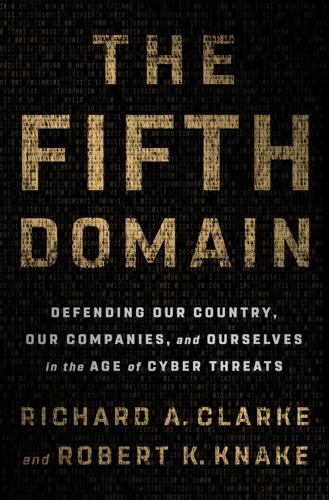
The Fifth Domain: Defending Our Country, Our Companies, and Ourselves in the Age of Cyber Threats
by
Richard A. Clarke
and
Robert K. Knake
Published 15 Jul 2019
Like many who worked in the Clinton campaign, Rosenberger thought then, and even more so now, that the Obama administration should have done more to say what the U.S. government knew about Russian interference before the American people voted. Clinton herself has tried to understand why there were few alarms sounding, and has written about Initial Occurrence Syndrome, citing Dick Clarke’s 2017 book Warnings. The first time a phenomenon occurs, there is a cognitive bias against believing it is true, or as significant as the data indicates. For Rosenberger, as for us, the day after the election gave her a very brief insight into what clinical depression might feel like. “I don’t even know how to describe what recovery was like. I was trying to fall off the face of the earth for a while.”
…
We find it more useful to begin by cautioning the newcomer to quantum that the laws of physics that you know, or have implicitly grasped by observation, do not apply at the level of the smallest elements of matter. Once we know or are told about the way things work at the very tiny quantum level, most of us intuitively reject it. It just does not make sense. To overcome your cognitive bias to what we are about to discuss, think about Dick’s grandparents or Rob’s great-grandparents, people born in the nineteenth century. If they were brought back to life with the knowledge they had as teenagers and were shown an Airbus A380, a metal object weighing six hundred tons, they would not believe for a second that it could fly.
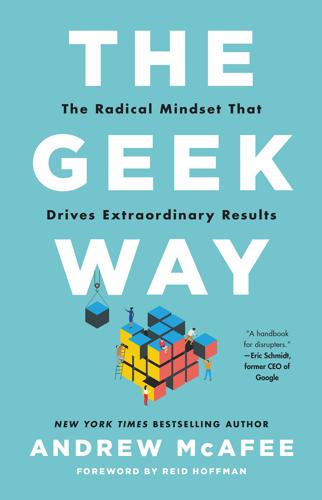
The Geek Way: The Radical Mindset That Drives Extraordinary Results
by
Andrew McAfee
Published 14 Nov 2023
It’s critical because we learn a lot from answering both types of questions about our behaviors. Take overconfidence, for example. Within the Homo sapiens perspective, it’s usually seen as a flaw in our generally excellent reasoning abilities. A lot of proximate research has investigated just how overconfident we are, and how this common cognitive bias can be elicited. This is valuable work. But it’s also valuable to ask, Why does overconfidence exist? What’s the function of overconfidence? Why, in other words, would evolution have designed humans to be overconfident? The Homo sapiens perspective doesn’t have many answers to these questions; it’s not great at explaining why a wise creature would also be so unwise.
…
To say the same thing a different way, overconfidence isn’t a flaw in the mental hardware of Homo sapiens. Instead, it actually has a function for us Homo ultrasocialis; it’s there for a reason. That reason can be hard to discern, though, because overconfidence causes so many harms. Textbook Cases of Cognitive Bias As psychologist Scott Plous puts it, “Overconfidence has been called the most ‘pervasive and potentially catastrophic’ of all the cognitive biases to which human beings fall victim. It has been blamed for lawsuits, strikes, wars, and stock market bubbles and crashes.” As we see with the examples of both Jeffrey Katzenberg at Quibi and Reed Hastings at Netflix, being an experienced and successful executive is no guarantee against overconfidence.

Machine, Platform, Crowd: Harnessing Our Digital Future
by
Andrew McAfee
and
Erik Brynjolfsson
Published 26 Jun 2017
abstract_id=1819486. 43 7.5 billion: Worldometers, “Current World Population,” accessed February 26, 2017, http://www.worldometers.info/world-population. 43 “Because System 1 operates automatically”: Kahneman, Thinking, Fast and Slow, p. 28. 44 “1. Information overload sucks”: Buster Benson, “Cognitive Bias Cheat Sheet,” Better Humans, September 1, 2016, https://betterhumans.coach.me/cognitive-bias-cheat-sheet-55a472476b18#.qtwg334q8. 45 “Judgment and justification are two separate processes”: Jonathan Haidt, “Moral Psychology and the Law: How Intuitions Drive Reasoning, Judgment, and the Search for Evidence,” Alabama Law Review 64, no. 4 (2013): 867–80, https://www.law.ua.edu/pubs/lrarticles/Volume%2064/Issue%204/4%20Haidt%20867-880.pdf. 45 “telling more than we can know”: Richard E.

More Everything Forever: AI Overlords, Space Empires, and Silicon Valley's Crusade to Control the Fate of Humanity
by
Adam Becker
Published 14 Jun 2025
We see intention everywhere we go and ascribe an inner life to the people around us, because that helps us understand their behavior and connect with them. But a willingness to attribute anything like consciousness or mind to LLMs on such thin evidence—much less see them as a sign of impending doom or paradise—is based on a simple cognitive bias. It’s a kind of pareidolia, the tendency to see patterns—especially human patterns, like faces or hands—where none exist. In 1976, NASA’s Viking 1 orbiter took a set of images of Cydonia, a region of varied, weather-beaten terrain in northern Mars, as part of a search for a landing site for Viking 2.
…
I had not thought, ever, about who I was, what I wanted, what was important to me, what my values were, what was worth doing,” writes Yuan. “Eliezer Yudkowsky was saying things that made more sense and captivated me more than I’d ever experienced.” Yudkowsky’s work, Yuan wrote, was “where I was first exposed to the concept of a *cognitive bias*. I remember being horrified by the idea that my brain could be systematically wrong about something. I needed my brain a lot! I depended on it for everything! So whatever ‘cognitive biases’ were, they were obviously the most important possible thing to understand.” Yuan now sees the rationalists as a cult.
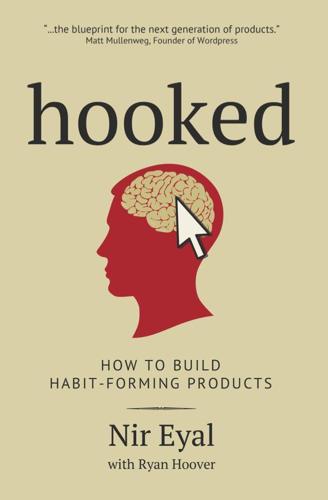
Hooked: How to Build Habit-Forming Products
by
Nir Eyal
Published 26 Dec 2013
Psychologists believe there are hundreds of cognitive biases that influence our behaviors; the four discussed here are just a few examples.12 For product designers building habit-forming technology, understanding and leveraging these methods for boosting motivation and ability can prove highly impactful. Stephen Anderson, author of Seductive Interaction Design, created a tool called Mental Notes to help designers build better products through heuristics.13 Each card in his deck of fifty contains a brief description of a cognitive bias and is intended to spark product team conversations around how they might utilize the principle. For example, team members might ask themselves how they could utilize the endowed progress effect or the scarcity effect to increase the likelihood of a desired user behavior. In this chapter we discovered how to take users from trigger to action.
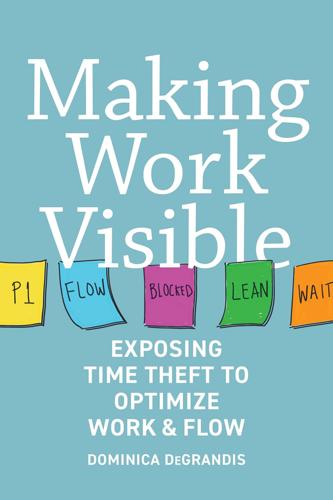
Making Work Visible: Exposing Time Theft to Optimize Workflow
by
Dominica Degrandis
and
Tonianne Demaria
Published 14 May 2017
Swinging back around to the LA IT Ops Engineering team that we opened the section with, notice how their prioritization approach evolved from, “Do all the things” to the lead engineer’s opinion of what was a priority to the VP’s or another executive’s opinion of what was a priority—the HiPPO approach. If the VP or other executive has sufficient knowledge and experience, it is possible that their prioritization can be good enough. But problems occur due to their cognitive bias, misaligned goals, or overconfidence. We are often confident even when we are wrong,1 and it can be hard for us to see when we are wrong. This is why making prioritization policies visible is vital—it drives the right conversations for delivering ideal outcomes. In Part 1, clues were provided for detecting when Thief Conflicting Priorities is stealing your time.
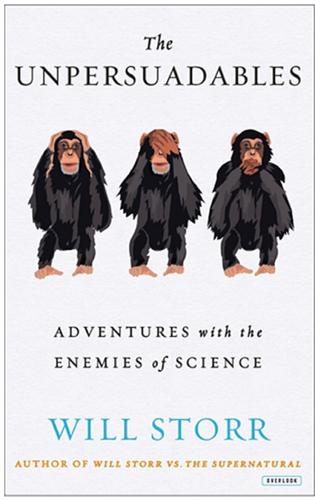
The Unpersuadables: Adventures With the Enemies of Science
by
Will Storr
Published 1 Jan 2013
Holman Foundation 118 chemotherapy 35, 93 Chibnall, Albert 256, 257 chick-sexers 186–87 childhood abuse 165–72, 173–75, 176–78, 179 sexual 145, 146, 156–57, 162, 180 children 75 China 83 Christ Church, Oxford 200, 201 Christians 4, 6, 7, 133, 134 condemnation of homosexuality 14–15, 18 morality 15–16, 122 see also creationists Churchill, Winston 208, 235, 249, 250 Clancy, Susan 50 climate-change sceptics 200, 203–204, 216 Clinic for Dissociative Studies 171 Clinton, Hilary 118 Coan, Chris 166–67 Coan, Jim 166–67 cochlear implants 78 cognitive bias 85, 87–88, 90–91, 103–104, 111, 183, 186, 244, 272 see also confirmation bias cognitive dissonance 84–87, 96, 102, 181 coin toss tests 262 Colapinto, John 312 cold war 149, 212, 215 Coleman, Ron 136–37, 141, 146, 148, 157, 162, 186, 306 colour, perception of 80 Committee for the Scientific Investigation of Claims of the Paranormal (CSICOP) 275 Communists 212, 222, 249–50 con artists 107 concentration camps 220–21, 224, 230, 245 confabulation 189–90, 192–96, 203, 207, 218, 253, 307, 315 confirmation bias 85, 87, 96, 181, 182, 188, 221, 243, 246, 312 consciousness 267–68 as Hero-Maker 306 conviction, unconscious 33 Conway, Martin 201 Cooper, Alice 275 Copenhagen Climate Conference 204 Copenhagen Treaty 2009 216 core beliefs 183 cows, sacred 40 Creation Research 5 Creation Science Foundation 12 creationists 2–10, 13–19, 20, 26, 30, 100, 162, 261, 308, 310 Crick, Francis 258, 268 CSICOP see Committee for the Scientific Investigation of Claims of the Paranormal culture, power of 211, 302 ‘culture heroes’ 311 ‘culture wars’ 30, 309 Daily Mail (newspaper) 225, 228, 232 Daily Telegraph (newspaper) 243–44, 263 Dali, Salvador 275 Darwin, Charles 2, 10, 11, 94 Davenas, Elisabeth 110–11 Dawkins, Richard 2, 6, 10, 19, 94, 142, 259, 261, 271, 272, 287, 290, 308 DDT 211 de-individuation 69 deafness 78, 82 decision-making 181, 267 and emotion 184–85, 189 dehumanization 69–70 delusions 103–104, 130, 178–79, 182, 272 finding evidence for 135 and Morgellons 120 of parasitosis (DOP) 120, 122, 124, 125, 129, 162 democracy, end of 216 Demon-Marker function 308–309 depression 33, 43, 45, 128, 141, 148 Dermatologic Therapy (journal) 128 development factors 183 Devil, Australia see Gympie Diagnostic and Statistical Manual of Mental Disorders (DSM) 143, 144 dialogue-ing 149, 151–52 Diana, Princess of Wales 286 diazepam (Valium) 42 dinosaurs 13, 19 Dog World (magazine) 293–94 dogma 106–107, 258 domestic abusers 89 DOP (delusions of parasitosis) 120, 122, 124, 125, 129, 162 dopamine 155, 196 doubt 133, 257 sensitivity to 261 dragons 13 dreaming 193, 195 lucid 76 drunkenness, cultural determinants of 83–84 DSM see Diagnostic and Statistical Manual of Mental Disorders Eagleman, David 74, 79, 80, 185, 186, 192, 193, 268–69 eccentricity 310 Economist, The (weekly publications) 312 Eden 14 Eden, Anthony 208 Edward V111 208 ‘effectance motive’ 184 ego 224 dream 195 ego-bolstering, unconscious 96, 103, 181 egoists 88, 196 Eichmann, Adolf 245 Einstein, Albert 201, 285 Eliade, Mircea 302 emotions 183, 184–85, 187, 194, 305 and beliefs 188, 189, 196–97 culturally unique 83 and decision-making 184, 185, 187 see also anger; happiness energy clean 25 Enfield Gazette (newspaper) 280 Enfield Poltergeist case 280 Enlightenment 255 envy 218 epinephrine 189–90 Epley, Nicholas 88 escapology 273–74 ESP see extrasensory perception Ethics Committee of the Federal Australian Medical Association 39 European Union (EU) 212 European Union Parliament House 234 Evans, Dylan 83 Evans, Richard 224 Eve 5, 12 Eve, Mitochondrial 73 Everett, Daniel 312 evidence, denial of 221, 261 evil psychology of 69–70, 307–308 ‘supremely good’ motivations for 89 evolution 73 arguments against 2–7, 10–13 arguments for 19–20, 100–101 experimental psychology 88, 101, 142, 316 extrasensory perception (ESP) 255, 266, 274, 294 alien 24 sense of ‘being stared at’ 254–55, 258, 262 facts and belief 183 inefficiency 26 fairies 83 faith, as journey 21, 134 false memories 156, 165–70, 173–74, 178, 194 familiar, the, attraction to 183 ‘fan death’ 83 Fate magazine 281 fear 203, 205, 206 Feinberg, Todd E. 82 Felstead, Anthony 160, 164 Felstead, David 159–60, 164, 171, 175, 176 Felstead, Joan 164 Felstead, Joseph 160, 161, 164, 165 Felstead, Kevin 160, 161, 164 Felstead, Richard 159–160, 164, 176–77 Felstead family 163, 165, 166, 168, 170, 176 Festinger, Leon 85, 188 Financial Service Act 214 First World War 231 Fisher, Fleur 161, 163, 165, 166, 176, 307 Flim Flam (Randi, 1982) 271, 279, 288, 295 Flood, biblical 14 fMRI see Functional Magnetic Resonance Imaging foetal development 74 fossil record 10, 13–14, 19, 101 Fourth Annual Morgellons Conference 121–28 Fox, Kate 84 Franklin, Wilbur 282, 293 free will 193, 217, 307 as confabulation 193 French Assembly 204 French, Chris 50, 104, 108, 169, 173, 288, 315 French Revolution 204 Freud, Sigmund 171, 302 Frith, Chris 70, 77, 206, 315 Fromyhr, Liam 13 Functional Magnetic Resonance Imaging (fMRI) 71 fundamentalists 261 Garvey, James 203, 218 Gates, Bill 212 Gazzaniga, Michael 184, 190–92 Geertz, Clifford 75 Geller, Uri 99, 275, 280, 281, 287, 288, 290, 293 genes 221 genetic factors 205 and beliefs 221 and political attitude 205 and schizophrenia 145, 154 genome 205, 206 Genus Epidemicus 115 George, St, and the dragon 13 ghost-hunters 21 ghosts 104 Gilovich, Thomas 86 Gindis, Alec 277, 278 global financial crisis 213 global governance 216–217 global warming 203 gnomes 83 God 17, 202, 305 Catholic interpretations of 21 and creation 3, 4, 5–6, 10 creation of 26 Darwin’s arguments against the existence of 11 deference to 18 existence of as scientifically testable 11 knowableness of 11, 22 and morality 15 see also anti-God rhetoric Goebbels, Joseph 230, 232, 239, 245 Goenka, S.N. 57, 60, 61–63, 306 Goldacre, Ben 97 Göring, Hermann 232 Gottschall, Martin 25–26 Gottschall, Sheryl 26 governance, models of 217 Gray, Honourable Mr Justice 221, 223 Gray, John 81 Great Rift Valley 74 ‘greys’ (aliens) 23, 33 group psychology 69, 88, 197 conformity to group pressure 70, 72 and the production of evil 70 Guardian (newspaper) 6 Gururumba tribe 83 Gympie, Australia 2–7, 10, 14, 16, 22, 33–53 gympie-gympie tree 2, 19 Hahnemann, Samuel 96, 115 Haidt, Honathan 83, 184, 193, 194–95, 205, 216–17, 315 Hale, Rob 172 hallucinations 82 auditory 137, 139, 141, 144, 145 see also voice-hearing visual 152 halo effect 84 Ham, Ken 12 happiness, and religious belief 197 ‘hard problem, the’ 267 Harrow 209 Harvard University 28–29, 30, 50, 285 Hawthorne Effect 107 hearing, sense of 262 Hearing Voices Network (HVN) 137, 140–41, 154, 162 Hebard, Arthur 279, 280, 295 Hebb, Donald 266 herbal remedies 36 Hercules 302 hero, the, how your memory rebuilds you as 194, 231 hero narratives 302–303, 306–309, 311–13 parasite 307, 312 Hero-Maker 306–307, 310–311, 312, 314 Heydrich, Reinhard 245 Himmler, Heinrich 235 Himmler bunker 236, 245 Hitler, Adolf 228, 231, 238, 239, 242, 243, 244, 246, 247, 248, 151–52 Hitler Youth 204 Hitler’s bunker 238 HIV 207 see also AIDS HMS Edinburgh (ship) 231 Hoefkens, Gemma 92–95, 96–97, 115–16, 141, 142, 181, 310 Holocaust denial 155, 221, 226, 229–30, 243, 244 Homeopathic Research Institute 109 homeopathy 94–102, 105–107, 109–121, 134, 181, 269, 277, 278 evidence for 106–114, 121, 134, 269 ‘overdose’ protest against 96, 99, 105, 108–109 ‘radionic’ method 115 Homerton Hospital 132 hominins 74 Homo sapiens 73 homophobia 188 homosexuality 137 Christian condemnation of 14–15, 18 Horsey, Richard 186 Horst Wessel Song (Nazi Party anthem) 239 House of Commons Science and Technology Committee 94 Hrab, George 108 Hume, David 203 Humphrey, Nicholas 43 Huntington’s disease testing 197 HVN see Hearing Voices Network hypnotherapy and false memory generation 166 and past-life regression 44–45, 47 hypnotism 189 ‘I’, sense of 194, 196, 258 IBS seeirritable bowel syndrome Iceland 83 identity 203 ideology 272 Illuminati 286–87, 288, 304 imitation 206 immigration 206, 223 Mexican 223 in-groups 84, 133 incest 168 information field 257, 266 INSERM 200 110 intelligence, and cognitive bias 224 Intergovernmental Panel on Climate Change (IPCC) 216 International Academy of Classical Homeopathy 277 Internet 112 intuition 187, 216, 238 irritable bowel syndrome (IBS) 43 Irving, David 269, 307, 308, 209, 333–335, 344, 345 Irving, John 219, 221, 238, 244 Irving, Nicholas 243 itch disorders 117–119 see also Morgellons Jackson, Peter 312 James, William 106 James Randi Educational Foundation (JREF) 99, 260, 275, 276, 290, 294 jealousy, sexual 64, 66, 104 Jesus 142 knowableness of 11 Jewish Chronicle (newspaper) 230 Jews 221, 230, 231, 244–51, 253, 309 see also Holocaust denial Josefstadt Prison, Vienna 220 Journal of the American Medical Association 41 Journal of Clinical Epidemiology 113–114 Journal of Philosophical Studies 182 JREF see James Randi Educational Foundation Jutland, Battle of 231 Kahneman, Daniel 184, 303 Kaku, Michio 27 Kaptchuk, Ted 43 Keegan, Sir John 243–44 Keen, Montague 284 Keen, Veronica 283–88, 304 Kerry, John 87 KGB 212, 215 Kilstein, Vered 44–51, 53, 168, 305–306 King’s Cross station 136 ‘koro’ 83 Krepel, Scott 78 Krippner, Stanley 288–89, 295 Krupp 233 Kuhn, Deanna 86 Los Angeles LA Times (newspaper) 118 LaBerge, Stephen 76, 195 Labour Party 210 Lancet (journal) 109, 113 Langham, Chris 171 Lawrence, Stephen 236 Lebanese people 223 left, political 204–207, 211, 215 Leitao, Mary 118 Leitao’s Morgellons Research Foundation 118 Lemoine, Patrick 42 Lennon, John 49 Letwin, Oliver 214 Leuchter, Fred 229 Leviticus 14 Lewis, Andy 109, 114 Lipstadt, Deborah 221, 224, 243, 246, 309 Literary and Scientific Institutions Act 1854 210 Lo, Nathan 19–20, 22, 30, 100, 308 Loftus, Elizabeth 166, 173 love 44, 59 memories of 63, 133 Lucifer 4 see also Satan McCain, John 118 McCullock, Kay 23–25 McDonald’s 67–68, 84 Mack, John E. 28–30, 51, 102–103, 142, 145, 272, 284–85 Mackay, Glennys 22–23, 30, 33 Mackay, John 1, 4–6, 1–11, 15–20, 30, 33, 53, 91, 100, 109, 182, 305, 306, 308 MacLeish, Eric 29 Maddox, Sir John 271, 287 magic-makers 7 magnetometers 279 Majdanek concentration camp 224, 230 Mameli, Matteo 182 manic depression 141 Mann, Nick 130–31, 134, 162 Marianna, Dame of Malta 208 Marshall, Michael ‘Marsh’ 105–109 Marxists 210 ‘matchbox sign’ 124 materialism 256, 257–58, 259, 260–1, 266, 268–69 May, Rufus 148–49, 156, 182, 196, 304 meditation, Buddhist 52–53, 62, 182, 196 Meffert, Jeffrey 120 Mein Kampf (Hitler) 232, 233, 242 memory autobiographical 194 fallibility of 201 see also false memories; recovered- memory therapy mental illness 137, 141, 146, 147, 165 as continuum 147 depression 33, 42–43, 45, 89, 100, 120, 148, 197 manic depression 141 multiple personality disorder 165, 171, 173–74 obsessive compulsive disorder 128 sectioning 137, 140, 161 see also psychosis; schizophrenia mental models 76, 85, 87, 90, 102, 133, 142, 147, 183, 302, 303, 316 meta-analysis 112, 146, 157, 262, 267 Metzinger, Thomas 195 Mexican immigration 223 micro-stories 206 Milgram, Stanley 70–71 mind and the brain 255, 257–58, 266–67 as ‘out there’ 267 theory of 303 miners’ strike (mid-1980s) 212, 214–15 Mitchell, Joni 118 mites, tropical rat 132, 135 ‘Mitochondrial Eve’ 73 Moll, Albert 189 Monckton, Christopher Walter, 3rd Viscount Monckton of Brenchley 200, 203–205, 207–16, 218, 304, 305, 309, 310 Monckton, Major General Gilbert, 2nd Viscount Monckton of Brenchley 208 morality 193, 202 Christian 15 Morgellons 118–35, 162, 307 see also Fourth Annual Morgellons Conference, Austin, Texas morphine 41 Mosley, Sir Oswald 232 Mragowo 233 multiple personality disorder 165, 171, 173–74 murder, past-life 44, 48 murderers 89 Murray, Robin 183 Myers (formerly Felstead), Carole 159–61, 163–66, 168, 171–73, 176–80, 307 myoclonic jerk 195 myth 302, 304, 312–313 narratives hero 302–303, 306–14 master 206 nation state, end of 216 National Front 234, 305 National Health Service (NHS) 94, 148, 171 National Secular Society 5 National Union of Teachers 5 Native Americal tradition 186 Natural History Museum 132 natural selection 10 Nature (journal) 110–11, 257, 271, 287, 304 Nazi Party (German) 220, 239 Nazis 48, 89, 231, 239 Neanderthals 26 necrophilia 12, 18 neurological studies 87 neurons 74–75, 220, 253, 267 neuroscience 142 New Guinea 83 New Science of Life, A (Sheldrake) 256–57 New Scientist (journal) 257–266 New York Times (newspaper) 72, 120, 271, 272 New Yorker (magazine) 268, 312 Nix, Walte, Jr. 68 Noah 3, 5, 13, 14 Novella, Steven 107, 112, 120, 135, 272, 287, 309 Oaklander, Anne Louise 129–130 Oatley, Keith 303 Obama, Barack 118, 286 obedience studies 84 Observer (newspaper) 222, 257 obsessive compulsive disorder (OCD) 128, 147 Oedipus 302 Offer, Daniel 194 Ogborn, Louise 67–68, 70, 84 Olsen, Clarence W. 82 openness 205 Origin of Species, The (Darwin) 2, 4 original sin 3 Orkney 166 ‘other people’, judgement of 67 out-groups 69, 105 Oxford Union 203, 207, 218 paedophilia 15 pain perception of 41 and the placebo effect 41, 42–43 palm reading 105 paranoia 30, 64, 150, 154, 178, 180 parapsychology 261–62, 265–67, 269, 279, 280, 287 past-life regression (PLR) 44–45, 47, 53, 168, 170 Patanjali Yog Peeth Trust 31 Paul McKenna Show, The (TV show) 263 Pearson, Michele 119 penis ‘koro’ effect 83 phantom 82 Penn and Teller 271, 290 perception and the brain 72, 76 of pain 41 and the placebo effect 41, 42, 43 of reality 27, 72, 76–77, 80, 81 see also extra-sensory perception peripeteia 303 Perkins, David 244 personality disorder 165 see also multiple personality disorder pesticides 211 Peter March’s Traveling Circus 274 Peters, Maarten 50 ‘phantom limbs’ 82 ‘Pagasus’ awards 260, 276, 288 Pirahã tribe 312 placebo effect 41–43, 45–46, 50–51, 53, 72, 107, 113, 134 and homeopathy 107, 113, 134 Playfair, Guy Lyon 280–82, 287, 293 political affiliation 205 political beliefs, and self-interest 217 political left 204, 206, 210, 211 political right 204, 205 Polonia Palace Hotel, Warsaw 219 poltergeists 280 Popoff, Peter 288 power, leftwing 211–12 Power, Joe 105, 106 ‘Pranayama’ (breath control) 32–36, 38, 40, 41, 45, 56, 134, 196 prefrontal cortex 73 prejudice 29, 53, 84, 86, 90, 100, 181, 248, 305 Pressman, Zev 280–82, 286, 288, 295 prophets 307 Prozac 42 psi phenomena 265–66 see also parapsychology psychiatry 28–29, 42, 71, 120, 130, 136, 137, 140–41, 142–43, 145–46, 150, 152, 162, 183, 189 psychic powers 253 animals with 258, 260, 261, 265, 266 testing 253, 258, 260, 263, 274, 279–80 psychics 98, 104 psychology of evil 69–70, 105, 243, 307 experimental 88, 101, 142, 316 parapsychology 261–62, 265, 266, 267, 269, 280, 287 situational 69 see also schizophrenia 157, 180, 310 Puthoff, Harold 279, 280 racism 104, 221, 223, 229, 305 radiotherapy 35, 401 Ramachandran, V.S. 75, 81, 82 Ramdev, Swami 31–41, 43, 134, 182, 306 Randi, Angela 291 Randi, James 98–99, 107, 108, 109–110, 112, 260–61, 269, 270, 271–98, 306, 309, 310, 312, 313 blindness to his own cognitive biases 272 childhood 273 death threats 275, 306 early adult life 274 emotional problems 292 homosexuality 292 interview with the author 291–98 psychic challenge prize 99, 260, 272, 276, 277, 278, 289 social Darwinism 296, 297 views on drug users 296–97 see also James Randi Educational Foundation Rank, Otto 302 Rasputin study 88, 103 rationalists, radicalised 9 reality, perceptions of 27, 72, 76–77, 80, 81, 91 ‘reality monitoring’, errors in 50 reason 26 inefficacy of 26–27 as not enough 309 recovered-memory therapy (RMT) 166, 170, 173, 176 Rees, Laurence 311 ‘regression to the mean’ 45 religious belief, and happiness 197 religious conversion mechanisms of 8 repression 169 right, political 204–207 Robertson, Shorty Jangala 300 robots, alien 23, 33 Rogo, Scott 279 Romme, Marius 137, 140, 143–45, 148, 154, 155 Rosenbaum, Ron 245 Royal College of Psychiatry 154 Royal Free Hospital, Camden 136, 139 Royal Institute of Philosophy 203 Royal Society 5 saccades 79 sacredness, irrationality surrounding 217 Sagan, Carl 266 Santayana, George 209 Satan 18 see also Lucifer santanic abuse 165–66, 168–70, 174–75, 177, 180 Saucer Smear magazine 281 Savely, Ginger 126, 127, 130 Schizophrenia 51, 136–37, 140, 141, 143, 145, 148, 150, 154, 162, 169, 178, 183, 309 as salience disorder 183 Schlitz, Marilyn 262 Schmidt, Stefan 262, 265 Schwartz, Gary 287, 188–89 science 8–9, 95–96, 255–59, 268, 273, 310 scientific method 305 Scientologists 155 sectioning 137, 140 Secular Student Alliance 290 Seeman, Mary 120 Segal, Stanley S. 172 self ideal 148, 313 multiple selves model 147 senses 77–91, 190, 196, 258 sensory deprivation 78 sexism, unconscious 86 sexual abuse 145, 146, 156–57, 162, 180 sexual assault 145–46 sexual jeaoulsy 64, 66, 104, 212 Shang, Aijing 112, 113–14 Sheldrake, Rupert 255–61, 262–70, 272–73, 276–77, 287, 289, 293–94, 307 Shermer, Michael 102 Silent Spring, The (Carson) 211 sin 17–18, 61, 66, 189 original 2 Sinason, David 171, 175, 179 Sinason, Valerie 170, 171, 178, 180, 304 Singer, Peter 304 situational psychology 69 Skeptic, The (magazine) 104, 108, 169, 271, 288 Skeptics 9, 95–112, 115, 120–21, 134, 142, 162, 260, 265, 271–73, 276–79, 290–91, 298, 309–310, 313–14 and Morgellons 134 and psi phenomenon 265–66, 279 and Sheldrake 260 ‘The Amazing Meeting’ of 290 see also Randi, James sleep 195 smell, sense of 184 Smith, Greg 122, 124, 130, 131 social Darwinism 296, 297 social roles, and the production of evil 69–70, 105 socialism 212 Sorel, George 304 ‘source-monitoring error’ 50 South Koreans 83 Soviet Union 212 sprinal tumours 129 spirituality 26 ‘split-brain’ patients 190–92 spoon-benders 98 spotlight effect 89 Stalin, Joseph 234 Stanford Prison Experiment 69–70 Stern Review 310 Stipe, Catherine 6 storytelling 183, 188, 189, 192, 194, 302, 206, 207, 312 see also confabulation; narratives ‘strip-search scams’ 68–69, 84 stroke patients 82 suicidal ideation 147 suicide 144 and voice-hearing 151, 154 Summers, Donna 67 survival of the fittest 3, 296–97 taboo violation scenarios, harmless 194 Targ, Russel 279, 280 Tavris, Carol 84, 88, 194, 243 Tea Party movement 204204 telepathy 257–59, 266, 269, 280 terrorism 9 Thatcher, Margaret 174, 204, 208, 212, 215 theft 66, 104 theory of mind 303 therapy 45, 169 group 133 placebo effect 45 This American Life (US radio show) 78 Thyssen 233 Time magazine 102 Times, The (newspaper) 263 ‘tjukurpas’ (Aboriginal stories) 275 Toronto Evening Telegram (newspaper) 274 Toronto Star (newspaper) 293 totalitarianism 216 Tournier, Alexander 109, 112, 113 traumatic experience repression 166 and voice-hearing 137, 139–41, 143–45, 148–49, 150–58 tribalism 84–85, 133, 171, 196, 217 truth 218 coherence theory of 218 and group pressure 44–45 and storytelling 312–13 Turing, Alan 266 Turner, Trevor 154–57, 162, 169, 178 twin studies 205 UFOs 22–27, 29–30, 272, 308 UK Independence Party (UKIP) 204 Ullman, Dana 107, 112, 309 Ultimate Psychic Challenges, The (TV Show) 284 unconscious 33, 44, 58–59, 60, 41–42, 183–88, 194, 269–70, 304 United Nations (UN) 216, 304 US Armed Forces Institute of Pathology 119 Vipassana Meditation Centre 52–53, 55, 57, 70 vision 79–80, 92–93, 96 Vithoulkas, George 99, 277–79, 295–96 voice-hearing 136–45, 148–59, 162, 169, 180 Wade, Kimberly 168–69 Warren, Jeff 76 Washington Post (newspaper) 120, 328, 344 water dreaming 300 Watson, Rebecca 107 ‘we mode’ 70 Wegner, Daniel 193, 331 welfare state 209–10 Western, Drew 87, 204, 206–7 Western medicine, disillusionment with 36, 39–40, 182, 306 Wexler, Bruce E. 75, 183, 185, 303 ‘wild pig, being a’ 83 Wilson, David Sloan 304 Wilson, Timothy D. 81 Wired (magazine) 271 Wiseman, Richard 259–66, 271–72, 287, 290, 335–37 Wolpert, Lewis 183–84, 189, 259, 313 Wootton, David 42 wormholes 27 Wymore, Randy 121–22, 124, 126, 128 yoga 31–39 Yuendumu 299–300 Zimbardo, Philip 68–70, 72, 104 WILL STORR is a novelist and longform journalist.
…
Holman Foundation 118 chemotherapy 35, 93 Chibnall, Albert 256, 257 chick-sexers 186–87 childhood abuse 165–72, 173–75, 176–78, 179 sexual 145, 146, 156–57, 162, 180 children 75 China 83 Christ Church, Oxford 200, 201 Christians 4, 6, 7, 133, 134 condemnation of homosexuality 14–15, 18 morality 15–16, 122 see also creationists Churchill, Winston 208, 235, 249, 250 Clancy, Susan 50 climate-change sceptics 200, 203–204, 216 Clinic for Dissociative Studies 171 Clinton, Hilary 118 Coan, Chris 166–67 Coan, Jim 166–67 cochlear implants 78 cognitive bias 85, 87–88, 90–91, 103–104, 111, 183, 186, 244, 272 see also confirmation bias cognitive dissonance 84–87, 96, 102, 181 coin toss tests 262 Colapinto, John 312 cold war 149, 212, 215 Coleman, Ron 136–37, 141, 146, 148, 157, 162, 186, 306 colour, perception of 80 Committee for the Scientific Investigation of Claims of the Paranormal (CSICOP) 275 Communists 212, 222, 249–50 con artists 107 concentration camps 220–21, 224, 230, 245 confabulation 189–90, 192–96, 203, 207, 218, 253, 307, 315 confirmation bias 85, 87, 96, 181, 182, 188, 221, 243, 246, 312 consciousness 267–68 as Hero-Maker 306 conviction, unconscious 33 Conway, Martin 201 Cooper, Alice 275 Copenhagen Climate Conference 204 Copenhagen Treaty 2009 216 core beliefs 183 cows, sacred 40 Creation Research 5 Creation Science Foundation 12 creationists 2–10, 13–19, 20, 26, 30, 100, 162, 261, 308, 310 Crick, Francis 258, 268 CSICOP see Committee for the Scientific Investigation of Claims of the Paranormal culture, power of 211, 302 ‘culture heroes’ 311 ‘culture wars’ 30, 309 Daily Mail (newspaper) 225, 228, 232 Daily Telegraph (newspaper) 243–44, 263 Dali, Salvador 275 Darwin, Charles 2, 10, 11, 94 Davenas, Elisabeth 110–11 Dawkins, Richard 2, 6, 10, 19, 94, 142, 259, 261, 271, 272, 287, 290, 308 DDT 211 de-individuation 69 deafness 78, 82 decision-making 181, 267 and emotion 184–85, 189 dehumanization 69–70 delusions 103–104, 130, 178–79, 182, 272 finding evidence for 135 and Morgellons 120 of parasitosis (DOP) 120, 122, 124, 125, 129, 162 democracy, end of 216 Demon-Marker function 308–309 depression 33, 43, 45, 128, 141, 148 Dermatologic Therapy (journal) 128 development factors 183 Devil, Australia see Gympie Diagnostic and Statistical Manual of Mental Disorders (DSM) 143, 144 dialogue-ing 149, 151–52 Diana, Princess of Wales 286 diazepam (Valium) 42 dinosaurs 13, 19 Dog World (magazine) 293–94 dogma 106–107, 258 domestic abusers 89 DOP (delusions of parasitosis) 120, 122, 124, 125, 129, 162 dopamine 155, 196 doubt 133, 257 sensitivity to 261 dragons 13 dreaming 193, 195 lucid 76 drunkenness, cultural determinants of 83–84 DSM see Diagnostic and Statistical Manual of Mental Disorders Eagleman, David 74, 79, 80, 185, 186, 192, 193, 268–69 eccentricity 310 Economist, The (weekly publications) 312 Eden 14 Eden, Anthony 208 Edward V111 208 ‘effectance motive’ 184 ego 224 dream 195 ego-bolstering, unconscious 96, 103, 181 egoists 88, 196 Eichmann, Adolf 245 Einstein, Albert 201, 285 Eliade, Mircea 302 emotions 183, 184–85, 187, 194, 305 and beliefs 188, 189, 196–97 culturally unique 83 and decision-making 184, 185, 187 see also anger; happiness energy clean 25 Enfield Gazette (newspaper) 280 Enfield Poltergeist case 280 Enlightenment 255 envy 218 epinephrine 189–90 Epley, Nicholas 88 escapology 273–74 ESP see extrasensory perception Ethics Committee of the Federal Australian Medical Association 39 European Union (EU) 212 European Union Parliament House 234 Evans, Dylan 83 Evans, Richard 224 Eve 5, 12 Eve, Mitochondrial 73 Everett, Daniel 312 evidence, denial of 221, 261 evil psychology of 69–70, 307–308 ‘supremely good’ motivations for 89 evolution 73 arguments against 2–7, 10–13 arguments for 19–20, 100–101 experimental psychology 88, 101, 142, 316 extrasensory perception (ESP) 255, 266, 274, 294 alien 24 sense of ‘being stared at’ 254–55, 258, 262 facts and belief 183 inefficiency 26 fairies 83 faith, as journey 21, 134 false memories 156, 165–70, 173–74, 178, 194 familiar, the, attraction to 183 ‘fan death’ 83 Fate magazine 281 fear 203, 205, 206 Feinberg, Todd E. 82 Felstead, Anthony 160, 164 Felstead, David 159–60, 164, 171, 175, 176 Felstead, Joan 164 Felstead, Joseph 160, 161, 164, 165 Felstead, Kevin 160, 161, 164 Felstead, Richard 159–160, 164, 176–77 Felstead family 163, 165, 166, 168, 170, 176 Festinger, Leon 85, 188 Financial Service Act 214 First World War 231 Fisher, Fleur 161, 163, 165, 166, 176, 307 Flim Flam (Randi, 1982) 271, 279, 288, 295 Flood, biblical 14 fMRI see Functional Magnetic Resonance Imaging foetal development 74 fossil record 10, 13–14, 19, 101 Fourth Annual Morgellons Conference 121–28 Fox, Kate 84 Franklin, Wilbur 282, 293 free will 193, 217, 307 as confabulation 193 French Assembly 204 French, Chris 50, 104, 108, 169, 173, 288, 315 French Revolution 204 Freud, Sigmund 171, 302 Frith, Chris 70, 77, 206, 315 Fromyhr, Liam 13 Functional Magnetic Resonance Imaging (fMRI) 71 fundamentalists 261 Garvey, James 203, 218 Gates, Bill 212 Gazzaniga, Michael 184, 190–92 Geertz, Clifford 75 Geller, Uri 99, 275, 280, 281, 287, 288, 290, 293 genes 221 genetic factors 205 and beliefs 221 and political attitude 205 and schizophrenia 145, 154 genome 205, 206 Genus Epidemicus 115 George, St, and the dragon 13 ghost-hunters 21 ghosts 104 Gilovich, Thomas 86 Gindis, Alec 277, 278 global financial crisis 213 global governance 216–217 global warming 203 gnomes 83 God 17, 202, 305 Catholic interpretations of 21 and creation 3, 4, 5–6, 10 creation of 26 Darwin’s arguments against the existence of 11 deference to 18 existence of as scientifically testable 11 knowableness of 11, 22 and morality 15 see also anti-God rhetoric Goebbels, Joseph 230, 232, 239, 245 Goenka, S.N. 57, 60, 61–63, 306 Goldacre, Ben 97 Göring, Hermann 232 Gottschall, Martin 25–26 Gottschall, Sheryl 26 governance, models of 217 Gray, Honourable Mr Justice 221, 223 Gray, John 81 Great Rift Valley 74 ‘greys’ (aliens) 23, 33 group psychology 69, 88, 197 conformity to group pressure 70, 72 and the production of evil 70 Guardian (newspaper) 6 Gururumba tribe 83 Gympie, Australia 2–7, 10, 14, 16, 22, 33–53 gympie-gympie tree 2, 19 Hahnemann, Samuel 96, 115 Haidt, Honathan 83, 184, 193, 194–95, 205, 216–17, 315 Hale, Rob 172 hallucinations 82 auditory 137, 139, 141, 144, 145 see also voice-hearing visual 152 halo effect 84 Ham, Ken 12 happiness, and religious belief 197 ‘hard problem, the’ 267 Harrow 209 Harvard University 28–29, 30, 50, 285 Hawthorne Effect 107 hearing, sense of 262 Hearing Voices Network (HVN) 137, 140–41, 154, 162 Hebard, Arthur 279, 280, 295 Hebb, Donald 266 herbal remedies 36 Hercules 302 hero, the, how your memory rebuilds you as 194, 231 hero narratives 302–303, 306–309, 311–13 parasite 307, 312 Hero-Maker 306–307, 310–311, 312, 314 Heydrich, Reinhard 245 Himmler, Heinrich 235 Himmler bunker 236, 245 Hitler, Adolf 228, 231, 238, 239, 242, 243, 244, 246, 247, 248, 151–52 Hitler Youth 204 Hitler’s bunker 238 HIV 207 see also AIDS HMS Edinburgh (ship) 231 Hoefkens, Gemma 92–95, 96–97, 115–16, 141, 142, 181, 310 Holocaust denial 155, 221, 226, 229–30, 243, 244 Homeopathic Research Institute 109 homeopathy 94–102, 105–107, 109–121, 134, 181, 269, 277, 278 evidence for 106–114, 121, 134, 269 ‘overdose’ protest against 96, 99, 105, 108–109 ‘radionic’ method 115 Homerton Hospital 132 hominins 74 Homo sapiens 73 homophobia 188 homosexuality 137 Christian condemnation of 14–15, 18 Horsey, Richard 186 Horst Wessel Song (Nazi Party anthem) 239 House of Commons Science and Technology Committee 94 Hrab, George 108 Hume, David 203 Humphrey, Nicholas 43 Huntington’s disease testing 197 HVN see Hearing Voices Network hypnotherapy and false memory generation 166 and past-life regression 44–45, 47 hypnotism 189 ‘I’, sense of 194, 196, 258 IBS seeirritable bowel syndrome Iceland 83 identity 203 ideology 272 Illuminati 286–87, 288, 304 imitation 206 immigration 206, 223 Mexican 223 in-groups 84, 133 incest 168 information field 257, 266 INSERM 200 110 intelligence, and cognitive bias 224 Intergovernmental Panel on Climate Change (IPCC) 216 International Academy of Classical Homeopathy 277 Internet 112 intuition 187, 216, 238 irritable bowel syndrome (IBS) 43 Irving, David 269, 307, 308, 209, 333–335, 344, 345 Irving, John 219, 221, 238, 244 Irving, Nicholas 243 itch disorders 117–119 see also Morgellons Jackson, Peter 312 James, William 106 James Randi Educational Foundation (JREF) 99, 260, 275, 276, 290, 294 jealousy, sexual 64, 66, 104 Jesus 142 knowableness of 11 Jewish Chronicle (newspaper) 230 Jews 221, 230, 231, 244–51, 253, 309 see also Holocaust denial Josefstadt Prison, Vienna 220 Journal of the American Medical Association 41 Journal of Clinical Epidemiology 113–114 Journal of Philosophical Studies 182 JREF see James Randi Educational Foundation Jutland, Battle of 231 Kahneman, Daniel 184, 303 Kaku, Michio 27 Kaptchuk, Ted 43 Keegan, Sir John 243–44 Keen, Montague 284 Keen, Veronica 283–88, 304 Kerry, John 87 KGB 212, 215 Kilstein, Vered 44–51, 53, 168, 305–306 King’s Cross station 136 ‘koro’ 83 Krepel, Scott 78 Krippner, Stanley 288–89, 295 Krupp 233 Kuhn, Deanna 86 Los Angeles LA Times (newspaper) 118 LaBerge, Stephen 76, 195 Labour Party 210 Lancet (journal) 109, 113 Langham, Chris 171 Lawrence, Stephen 236 Lebanese people 223 left, political 204–207, 211, 215 Leitao, Mary 118 Leitao’s Morgellons Research Foundation 118 Lemoine, Patrick 42 Lennon, John 49 Letwin, Oliver 214 Leuchter, Fred 229 Leviticus 14 Lewis, Andy 109, 114 Lipstadt, Deborah 221, 224, 243, 246, 309 Literary and Scientific Institutions Act 1854 210 Lo, Nathan 19–20, 22, 30, 100, 308 Loftus, Elizabeth 166, 173 love 44, 59 memories of 63, 133 Lucifer 4 see also Satan McCain, John 118 McCullock, Kay 23–25 McDonald’s 67–68, 84 Mack, John E. 28–30, 51, 102–103, 142, 145, 272, 284–85 Mackay, Glennys 22–23, 30, 33 Mackay, John 1, 4–6, 1–11, 15–20, 30, 33, 53, 91, 100, 109, 182, 305, 306, 308 MacLeish, Eric 29 Maddox, Sir John 271, 287 magic-makers 7 magnetometers 279 Majdanek concentration camp 224, 230 Mameli, Matteo 182 manic depression 141 Mann, Nick 130–31, 134, 162 Marianna, Dame of Malta 208 Marshall, Michael ‘Marsh’ 105–109 Marxists 210 ‘matchbox sign’ 124 materialism 256, 257–58, 259, 260–1, 266, 268–69 May, Rufus 148–49, 156, 182, 196, 304 meditation, Buddhist 52–53, 62, 182, 196 Meffert, Jeffrey 120 Mein Kampf (Hitler) 232, 233, 242 memory autobiographical 194 fallibility of 201 see also false memories; recovered- memory therapy mental illness 137, 141, 146, 147, 165 as continuum 147 depression 33, 42–43, 45, 89, 100, 120, 148, 197 manic depression 141 multiple personality disorder 165, 171, 173–74 obsessive compulsive disorder 128 sectioning 137, 140, 161 see also psychosis; schizophrenia mental models 76, 85, 87, 90, 102, 133, 142, 147, 183, 302, 303, 316 meta-analysis 112, 146, 157, 262, 267 Metzinger, Thomas 195 Mexican immigration 223 micro-stories 206 Milgram, Stanley 70–71 mind and the brain 255, 257–58, 266–67 as ‘out there’ 267 theory of 303 miners’ strike (mid-1980s) 212, 214–15 Mitchell, Joni 118 mites, tropical rat 132, 135 ‘Mitochondrial Eve’ 73 Moll, Albert 189 Monckton, Christopher Walter, 3rd Viscount Monckton of Brenchley 200, 203–205, 207–16, 218, 304, 305, 309, 310 Monckton, Major General Gilbert, 2nd Viscount Monckton of Brenchley 208 morality 193, 202 Christian 15 Morgellons 118–35, 162, 307 see also Fourth Annual Morgellons Conference, Austin, Texas morphine 41 Mosley, Sir Oswald 232 Mragowo 233 multiple personality disorder 165, 171, 173–74 murder, past-life 44, 48 murderers 89 Murray, Robin 183 Myers (formerly Felstead), Carole 159–61, 163–66, 168, 171–73, 176–80, 307 myoclonic jerk 195 myth 302, 304, 312–313 narratives hero 302–303, 306–14 master 206 nation state, end of 216 National Front 234, 305 National Health Service (NHS) 94, 148, 171 National Secular Society 5 National Union of Teachers 5 Native Americal tradition 186 Natural History Museum 132 natural selection 10 Nature (journal) 110–11, 257, 271, 287, 304 Nazi Party (German) 220, 239 Nazis 48, 89, 231, 239 Neanderthals 26 necrophilia 12, 18 neurological studies 87 neurons 74–75, 220, 253, 267 neuroscience 142 New Guinea 83 New Science of Life, A (Sheldrake) 256–57 New Scientist (journal) 257–266 New York Times (newspaper) 72, 120, 271, 272 New Yorker (magazine) 268, 312 Nix, Walte, Jr. 68 Noah 3, 5, 13, 14 Novella, Steven 107, 112, 120, 135, 272, 287, 309 Oaklander, Anne Louise 129–130 Oatley, Keith 303 Obama, Barack 118, 286 obedience studies 84 Observer (newspaper) 222, 257 obsessive compulsive disorder (OCD) 128, 147 Oedipus 302 Offer, Daniel 194 Ogborn, Louise 67–68, 70, 84 Olsen, Clarence W. 82 openness 205 Origin of Species, The (Darwin) 2, 4 original sin 3 Orkney 166 ‘other people’, judgement of 67 out-groups 69, 105 Oxford Union 203, 207, 218 paedophilia 15 pain perception of 41 and the placebo effect 41, 42–43 palm reading 105 paranoia 30, 64, 150, 154, 178, 180 parapsychology 261–62, 265–67, 269, 279, 280, 287 past-life regression (PLR) 44–45, 47, 53, 168, 170 Patanjali Yog Peeth Trust 31 Paul McKenna Show, The (TV show) 263 Pearson, Michele 119 penis ‘koro’ effect 83 phantom 82 Penn and Teller 271, 290 perception and the brain 72, 76 of pain 41 and the placebo effect 41, 42, 43 of reality 27, 72, 76–77, 80, 81 see also extra-sensory perception peripeteia 303 Perkins, David 244 personality disorder 165 see also multiple personality disorder pesticides 211 Peter March’s Traveling Circus 274 Peters, Maarten 50 ‘phantom limbs’ 82 ‘Pagasus’ awards 260, 276, 288 Pirahã tribe 312 placebo effect 41–43, 45–46, 50–51, 53, 72, 107, 113, 134 and homeopathy 107, 113, 134 Playfair, Guy Lyon 280–82, 287, 293 political affiliation 205 political beliefs, and self-interest 217 political left 204, 206, 210, 211 political right 204, 205 Polonia Palace Hotel, Warsaw 219 poltergeists 280 Popoff, Peter 288 power, leftwing 211–12 Power, Joe 105, 106 ‘Pranayama’ (breath control) 32–36, 38, 40, 41, 45, 56, 134, 196 prefrontal cortex 73 prejudice 29, 53, 84, 86, 90, 100, 181, 248, 305 Pressman, Zev 280–82, 286, 288, 295 prophets 307 Prozac 42 psi phenomena 265–66 see also parapsychology psychiatry 28–29, 42, 71, 120, 130, 136, 137, 140–41, 142–43, 145–46, 150, 152, 162, 183, 189 psychic powers 253 animals with 258, 260, 261, 265, 266 testing 253, 258, 260, 263, 274, 279–80 psychics 98, 104 psychology of evil 69–70, 105, 243, 307 experimental 88, 101, 142, 316 parapsychology 261–62, 265, 266, 267, 269, 280, 287 situational 69 see also schizophrenia 157, 180, 310 Puthoff, Harold 279, 280 racism 104, 221, 223, 229, 305 radiotherapy 35, 401 Ramachandran, V.S. 75, 81, 82 Ramdev, Swami 31–41, 43, 134, 182, 306 Randi, Angela 291 Randi, James 98–99, 107, 108, 109–110, 112, 260–61, 269, 270, 271–98, 306, 309, 310, 312, 313 blindness to his own cognitive biases 272 childhood 273 death threats 275, 306 early adult life 274 emotional problems 292 homosexuality 292 interview with the author 291–98 psychic challenge prize 99, 260, 272, 276, 277, 278, 289 social Darwinism 296, 297 views on drug users 296–97 see also James Randi Educational Foundation Rank, Otto 302 Rasputin study 88, 103 rationalists, radicalised 9 reality, perceptions of 27, 72, 76–77, 80, 81, 91 ‘reality monitoring’, errors in 50 reason 26 inefficacy of 26–27 as not enough 309 recovered-memory therapy (RMT) 166, 170, 173, 176 Rees, Laurence 311 ‘regression to the mean’ 45 religious belief, and happiness 197 religious conversion mechanisms of 8 repression 169 right, political 204–207 Robertson, Shorty Jangala 300 robots, alien 23, 33 Rogo, Scott 279 Romme, Marius 137, 140, 143–45, 148, 154, 155 Rosenbaum, Ron 245 Royal College of Psychiatry 154 Royal Free Hospital, Camden 136, 139 Royal Institute of Philosophy 203 Royal Society 5 saccades 79 sacredness, irrationality surrounding 217 Sagan, Carl 266 Santayana, George 209 Satan 18 see also Lucifer santanic abuse 165–66, 168–70, 174–75, 177, 180 Saucer Smear magazine 281 Savely, Ginger 126, 127, 130 Schizophrenia 51, 136–37, 140, 141, 143, 145, 148, 150, 154, 162, 169, 178, 183, 309 as salience disorder 183 Schlitz, Marilyn 262 Schmidt, Stefan 262, 265 Schwartz, Gary 287, 188–89 science 8–9, 95–96, 255–59, 268, 273, 310 scientific method 305 Scientologists 155 sectioning 137, 140 Secular Student Alliance 290 Seeman, Mary 120 Segal, Stanley S. 172 self ideal 148, 313 multiple selves model 147 senses 77–91, 190, 196, 258 sensory deprivation 78 sexism, unconscious 86 sexual abuse 145, 146, 156–57, 162, 180 sexual assault 145–46 sexual jeaoulsy 64, 66, 104, 212 Shang, Aijing 112, 113–14 Sheldrake, Rupert 255–61, 262–70, 272–73, 276–77, 287, 289, 293–94, 307 Shermer, Michael 102 Silent Spring, The (Carson) 211 sin 17–18, 61, 66, 189 original 2 Sinason, David 171, 175, 179 Sinason, Valerie 170, 171, 178, 180, 304 Singer, Peter 304 situational psychology 69 Skeptic, The (magazine) 104, 108, 169, 271, 288 Skeptics 9, 95–112, 115, 120–21, 134, 142, 162, 260, 265, 271–73, 276–79, 290–91, 298, 309–310, 313–14 and Morgellons 134 and psi phenomenon 265–66, 279 and Sheldrake 260 ‘The Amazing Meeting’ of 290 see also Randi, James sleep 195 smell, sense of 184 Smith, Greg 122, 124, 130, 131 social Darwinism 296, 297 social roles, and the production of evil 69–70, 105 socialism 212 Sorel, George 304 ‘source-monitoring error’ 50 South Koreans 83 Soviet Union 212 sprinal tumours 129 spirituality 26 ‘split-brain’ patients 190–92 spoon-benders 98 spotlight effect 89 Stalin, Joseph 234 Stanford Prison Experiment 69–70 Stern Review 310 Stipe, Catherine 6 storytelling 183, 188, 189, 192, 194, 302, 206, 207, 312 see also confabulation; narratives ‘strip-search scams’ 68–69, 84 stroke patients 82 suicidal ideation 147 suicide 144 and voice-hearing 151, 154 Summers, Donna 67 survival of the fittest 3, 296–97 taboo violation scenarios, harmless 194 Targ, Russel 279, 280 Tavris, Carol 84, 88, 194, 243 Tea Party movement 204204 telepathy 257–59, 266, 269, 280 terrorism 9 Thatcher, Margaret 174, 204, 208, 212, 215 theft 66, 104 theory of mind 303 therapy 45, 169 group 133 placebo effect 45 This American Life (US radio show) 78 Thyssen 233 Time magazine 102 Times, The (newspaper) 263 ‘tjukurpas’ (Aboriginal stories) 275 Toronto Evening Telegram (newspaper) 274 Toronto Star (newspaper) 293 totalitarianism 216 Tournier, Alexander 109, 112, 113 traumatic experience repression 166 and voice-hearing 137, 139–41, 143–45, 148–49, 150–58 tribalism 84–85, 133, 171, 196, 217 truth 218 coherence theory of 218 and group pressure 44–45 and storytelling 312–13 Turing, Alan 266 Turner, Trevor 154–57, 162, 169, 178 twin studies 205 UFOs 22–27, 29–30, 272, 308 UK Independence Party (UKIP) 204 Ullman, Dana 107, 112, 309 Ultimate Psychic Challenges, The (TV Show) 284 unconscious 33, 44, 58–59, 60, 41–42, 183–88, 194, 269–70, 304 United Nations (UN) 216, 304 US Armed Forces Institute of Pathology 119 Vipassana Meditation Centre 52–53, 55, 57, 70 vision 79–80, 92–93, 96 Vithoulkas, George 99, 277–79, 295–96 voice-hearing 136–45, 148–59, 162, 169, 180 Wade, Kimberly 168–69 Warren, Jeff 76 Washington Post (newspaper) 120, 328, 344 water dreaming 300 Watson, Rebecca 107 ‘we mode’ 70 Wegner, Daniel 193, 331 welfare state 209–10 Western, Drew 87, 204, 206–7 Western medicine, disillusionment with 36, 39–40, 182, 306 Wexler, Bruce E. 75, 183, 185, 303 ‘wild pig, being a’ 83 Wilson, David Sloan 304 Wilson, Timothy D. 81 Wired (magazine) 271 Wiseman, Richard 259–66, 271–72, 287, 290, 335–37 Wolpert, Lewis 183–84, 189, 259, 313 Wootton, David 42 wormholes 27 Wymore, Randy 121–22, 124, 126, 128 yoga 31–39 Yuendumu 299–300 Zimbardo, Philip 68–70, 72, 104 WILL STORR is a novelist and longform journalist.
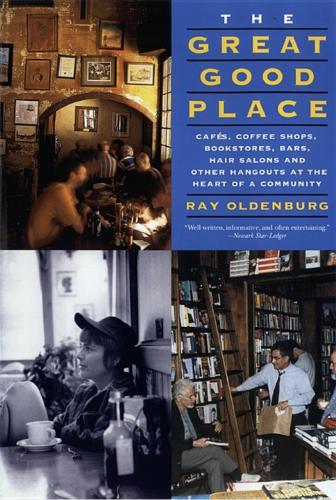
The Great Good Place: Cafes, Coffee Shops, Bookstores, Bars, Hair Salons, and Other Hangouts at the Heart of a Community
by
Ray Oldenburg
Published 17 Aug 1999
The casual environment meets many needs without incurring the effort, and, often, the inefficiency of rational planning; it also meets needs beyond the individual’s capacity to recognize them. Most individuals, particularly those cut off from community life, suffer what some psychologists call cognitive bias. The fundamental idea is that individuals, in their ignorance, think they know all their needs and how to satisfy them. This is not true. Life lived amid a variety of other people in a casual habitat supplies much of what people need without their ever being aware of it. I gave a specific illustration earlier in the discussion of friends “by the set.”
…
California, Santa Barbara, 28–29 Canadian beer taverns, 82 Card games, 157 Carlin, George, 77 Carmichael, Harry, 62 Charles II (King), 188–189 Chicken, recent history of, 210 Children, 262–283 communities planned without regard for, 264–267 containing and monitoring, adults’ efforts at, 277–281 depression in, 271 errands run by, importance of, 288 ethnic communities, 272–275 fleecing of, 223 in the modern community, study of, 267–269 networks and, 266 overscheduling of, 270–272 quality time spent with, 257 recreation areas, 279–280 schools for, 278 use of “new towns” in West Germany, study of, 278 Welwyn study of habits of, 278–279 Churchill, Winston, 295 Ciborowski, Adolf, 218 Clay, Grady, 83 Cleef, Eugene van, 118 Clergy, 73–74, 100 Cleveland, Grover, 68–69 Clinard, Marshall, 47 Club, 21, 26 Cocktail lounges, 259 Cocktail parties, 59–60 Coffee, 226 caffeine’s effects on behavior, 184 espresso, 160–161 Coffee breaks, 12 Coffeehouses, 183–199 afternoon tea (Viennese), 194–195 A Proclamation for the Suppression of Coffeehouses, 188–189 Arabian, 193 business and cultural life in, 189, 197 described (Viennese), 193–194 English, 32, 184–193 English Rules and Orders, 186–187 Herr Ober, 195–196 individual liberty, role in establishment of, 189 journalism in, 190–191 leveling effect of, 186 literary circles in, 189–190 meals served in, 197 newspapers’ effect, 196–197 patrons, 197–198 Penny University, 185 waiters (Viennese), 195 women’s exclusion from, 187–188 Women’s Petition Against Coffee, 187 Coffee klatch, 237 Cognitive bias, 289 Cohen-Portheim, Paul, 145 College students, 130–131, 176–177 Community, elements of, 215 Community Builders Handbook, 208–209 Community life, lack of, 3, 5–6 Consumerism, 10–12 Continental Sundays, 99–100 Convenience, need for, 286–291 Conversation, 26–31, 46–47, 48 talking/drinking synergism, 167–168 topics of, 174 typical voice levels, 173–174 Conzen, Kathleen, 94 Core settings, 15 Corporations as purveyors of nonplaces, 205–206 Couples, 256–260 Cribbage, 31 Crime, 45 Cromwell, 188 Crosby, Norm, 223–224 Customers.

The Fast Diet: Revised and Updated: Lose Weight, Stay Healthy, Live Longer
by
Mimi Spencer
Published 18 Dec 2014
When you experience a compulsion to eat too much, or to break a fast, it’s time to face it head on. You are a rational being and you are making a specific, time-sensitive decision to eat that sandwich or pour that glass of wine. You really do have the power to choose, at each incremental, individual moment. Once you appreciate this power, it is possible to overcome the cognitive bias that leads to impulsive snacking and compulsive eating – certainly for long enough to get you through a Fast Day. Recognise – before it happens – when your self-control is likely to dissolve. Try to install a behaviour – not for ever, just for that precise moment – which alters your established route.

The Portable Atheist: Essential Readings for the Nonbeliever
by
Christopher Hitchens
Published 14 Jun 2007
So, if the event was good for people, they assumed that God willed it out of love for them; if it was bad, they assumed that God willed it out of anger at them. This mode of explanation is universally observed among people who lack scientific understanding of natural events. It appears to be a deeply rooted cognitive bias of humans to reject the thought of meaningless suffering. If we are suffering, someone must be responsible for it! Why did these representations of God as cruel and unjust not make God repugnant to the authors of Scripture and their followers? They were too busy trembling in their sandals to question what they took to be God’s will.
…
The spiritual world everywhere reflects the hopes and fears, loves and hatreds, aspirations and depravities of those who believe in it. This is just as we would expect if beliefs in the supernatural are, like Rorschach tests, projections of the mental states of believers, rather than based on independent evidence. The same cognitive bias that leads pagans to believe in witches and multiple gods leads theists to believe in God. Indeed, once the explanatory principle—to ascribe worldly events that bear on human well-being to the intentions and powers of unseen spirits, when no actual person is observed to have caused them—is admitted, it is hard to deny that the evidence for polytheism and spiritualism of all heretical varieties is exactly on a par with the evidence for theism.
…
First, the best explanation of extraordinary evidence—the only explanation that accounts for its tendency to commend heinous acts as well as good acts—shows it to reflect either our own hopes and feelings, whether these be loving or hateful, just or merciless, or else the stubborn and systematically erroneous cognitive bias of representing all events of consequence to our welfare as intended by some agent who cares about us, for good or for ill. Extraordinary evidence, in other words, is a projection of our own wishes, fears, and fantasies onto an imaginary deity. Second, all religions claim the same sorts of extraordinary evidence on their behalf.

On the Edge: The Art of Risking Everything
by
Nate Silver
Published 12 Aug 2024
Alpha: In finance, having an edge through skill or proprietary methods that allows you to achieve persistent above-market returns. Analysis, analytics: “Analysis” refers to the process of breaking down complex subjects into simpler components. Conversely, “analytics” refers to the use of statistical methods to analyze data, particularly in business or sports. Anchoring bias: The cognitive bias to be weighted down by information you learn early in your decision-making process, and then not adjust enough as new information is revealed. Often suggests a deviation from ideal Bayesian reasoning. Angle: In sports betting, an edge resulting from a specific proprietary insight, such as a statistical property that bookmakers are overlooking.
…
Closing line value: A case in which the betting consensus moved in the direction of your bet. If you bet the Dallas Cowboys at -3 and the line later moved to Cowboys -4, the market agreed with your bet and you got good closing line value. Consistently getting closing line value is a sign of a winning bettor. Cognitive bias: A systematic misconception that results in irrational behavior, often implying a failure of “common sense” or conventional reasoning. See also: confirmation bias, Gambler’s fallacy. Combo (poker): The permutations of a particular hand that are likely to be in a player’s range. For instance, there are four combos of AK suited (A♣K♣, A♦K♦, A♥K♥, A♥K♥).
…
See existential risk categorical imperative, 367–68 Cates, Daniel “Jungleman,” 130, 225, 226, 282, 284 chalk (sports betting), 481 Chan, Henry, 96 Chan, Johnny, 45, 98, 104 Chaos Monkeys (Martínez), 258 chase, 481 Chavez, Jacob “Rip,” 126–27, 512n, 513n cheating, 84, 85–86, 123–24, 126–28, 136, 512n check (poker), 481 check-raise (poker), 481 Chen, Austin, 370, 371, 373n, 374 chess, 60, 84, 433 Chesterton’s fence, 368n, 481 Chetty, Raj, 276 chop, (gambling) 481 Christensen, Clayton, 273–74n, 487 Christiano, Paul, 441 Clark, Jack, 415n, 456, 458, 541n classical statistics (frequentism), 481 Cleeton, K. L., 124 Clinton, Hillary, 267 closing line value, 205–6, 206, 481 Coates, John, 89–91, 99, 102, 116, 125 cognitive bias, 481 Collison, Patrick, 262, 263, 466, 494 combo (poker), 481 community cards (board) (poker), 41, 480, 481 competitiveness, 25–26 abuse and, 118 game theory and, 52, 66 lack of money drive and, 243 poker and, 112, 118, 120, 243 resentment and, 223, 277–78 River-Village conflict and, 28–29 sports betting and, 173 venture capital and, 249 compute (AI), 481 computer applications sports betting and, 172 See also AI; solvers Computer Group, 195–96 Confidence Game, The (Konnikova), 123–24, 309 confidence interval, 481 confirmation bias, 28, 264, 481 conformity, 286–87, 288, 318, 330–31n Conrad, Joseph, 253 conscientious contrarians, 481 consensus, 481 consequentialism, 359, 481, 533n See also utilitarianism Constantin, Sarah, 24 contrarianism AI existential risk and, 414 conscientious, 481 finance and, 240–42 founders and, 403 politics and, 242, 254n Silicon Valley and, 25, 254, 414 Trump and, 150 venture capital and, 249, 284–87 See also anti-authority attitude; independence cooler (poker), 482 coordinated cards (poker), 482 Coplan, Shayne, 370 corpus (AI), 482 correlation, 482 Cotra, Ajeya, 443, 455, 457, 458 courage, 222–24 cover (sports betting), 482 COVID-19, 6–9 Boredom Markets Hypothesis, 310, 480 casinos and, 7–8, 10, 10 cryptocurrency and, 6, 310, 312–13 effective altruism and, 360, 534n expertise and, 271 prisoner’s dilemma and, 507–8n probabilistic thinking and, 16 quantification and, 348–50 raise-or-fold attitude and, 230–31, 521n risk-taking behavior and, 6–7, 8–9, 10, 10 River-Village conflict and, 28, 29 societal institutions and, 456–57 Cowen, Tyler, 374n, 378, 402, 489, 494 credit card roulette, 482 Cromwell’s Rule, 415–16, 482 cryptocurrency anonymity and, 325 Archipelago and, 22, 310 bacchanalian atmosphere and, 306–7 bubble in, 306–7, 307, 310, 311–18, 317 business model of, 308–9 COVID-19 and, 6, 310, 312–13 defined, 482 focal points and, 329 fraud and, 124, 308 game theory and, 316–18, 317, 327 gender and, 312 history of, 322–24, 326 HODL, 308, 309, 310, 312, 317, 318, 487 meme creation of value and, 315–16 moral hazard and, 261 naïvete and, 310–11 poker and, 109 as Ponzi scheme, 309, 337 profitability for early adopters, 310 skill and, 308 See also Bankman-Fried, Sam; NFTs CryptoPunks, 311, 312, 325, 330, 332–33, 482 Cuban, Mark, 225 Cuban Missile Crisis, 424 cults of personality, 31, 338–39 culture wars, 29, 272–73, 341n, 377 D Damore, James, 273 DAOs (decentralized autonomous organizations), 307, 325 data science, 482 David, Larry, 313 Davidow, Matthew, 134–35 dealer (poker), 482 dealflow (venture capital), 482 decadence, 466 decels, 477 decentralized finance (DeFi), 324–25 deception, 58–59, 60, 63, 100, 206–7, 482 deception value, 60, 482 decision science, 427–28 decoupling, 24–25, 26, 27, 352, 482, 505n deductive reasoning, 482 Deeb, Shaun, 95 Deep Blue, 60 defect (game theory), 482 degens (gambling), 9, 114, 278–79, 482 Demis Hassabis, 416 Denton, Nick, 249–50n, 274 deontology, 359, 368, 481, 482 Designing Casinos to Dominate the Competition (Friedman), 162–63 determinism, 253–55, 264, 297, 482 deterrence, 483 See also mutually assured destruction DFS (Daily Fantasy Sports), 198, 199, 483 diminishing returns, 483 directionally correct, 483 Dirty Diaper (poker), 74–75, 483 discount rate, 483 disruptiveness, 257–58, 269–70 domain knowledge, 483 dominant strategies, 54–55, 483 DonBest, 483 donkbet (poker), 483 doomers, 483 See also AI existential risk doomsday machines, 425, 483 double down (blackjack), 483 Douthat, Ross, 466 Downriver, 21–22, 374, 483 See also casinos drawing dead, 483 Dresher, Melvin, 52, 494 drowning child parable, 357, 358, 359, 368, 483 Dr.
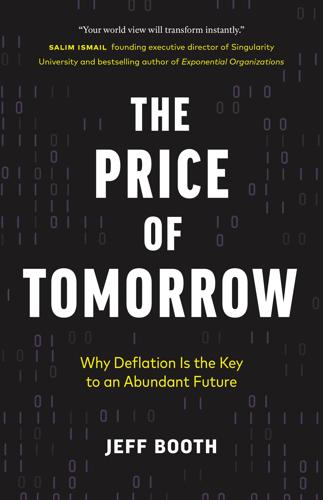
The Price of Tomorrow: Why Deflation Is the Key to an Abundant Future
by
Jeff Booth
Published 14 Jan 2020
If you need to borrow $1,000 from a friend, it is much easier to first ask for $5,000 and then say that you actually only need $1,000 than it is to ask for $500 and then increase it to $1,000. Even though the final request is the same, the later number is compared against the initial anchor in each case and it feels better when going from the large to the small in this case. This cognitive bias fools us often: in negotiations, where someone sets the initial anchor high, with sale prices, and even in our relationships. Sunk-cost bias happens when you continue to invest time or money into something because of the time or emotion you have already put in. As Kahneman points out, the potential of losses is a much more powerful motivator than potential for gains.
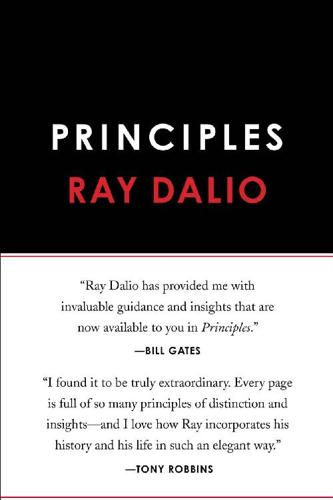
Principles: Life and Work
by
Ray Dalio
Published 18 Sep 2017
CREATING BASEBALL CARDS Even after we were armed with the Myers-Briggs data and other tests we’d taken, I found that we were still having a hard time connecting the dots between the outcomes that we were seeing and what we knew about the people producing them. Over and over again, the same people would walk into the same meetings, do things the same ways, and get the same results without seeking to understand why. (Recently I came across a study that revealed a cognitive bias in which people consistently overlook the evidence of one person being better than another at something and assume that both are equally good at a task. This was exactly what we were seeing.) For example, people who were known not to be creative were being assigned tasks that required creativity; people who didn’t pay attention to details were being assigned to detail-oriented jobs, and so on.
…
; “Are we going to try to convince each other that we are right or are we going to open-mindedly hear each other’s perspectives to try to figure out what’s true and what to do about it?”; or “Are you arguing with me or seeking to understand my perspective?” 27 Psychologist and science journalist Daniel Goleman originally coined this term in Emotional Intelligence. 28 Some of this may be a result of what is called the Dunning-Kruger effect, a cognitive bias in which low-ability individuals believe that they are in fact superior. 4 Understand That People Are Wired Very Differently Because of the different ways that our brains are wired, we all experience reality in different ways and any single way is essentially distorted. This is something that we need to acknowledge and deal with.

Spies, Lies, and Algorithms: The History and Future of American Intelligence
by
Amy B. Zegart
Published 6 Nov 2021
The short answer appears to be three sets of things: processes that nudge people to check their own biases and re-perceive what they see; formatting information in ways to increase understanding; and superforecasting training that includes practice and robust feedback. FIGURE 5.2 The Müller-Lyer Illusion Scenarios, Devils, and Other Re-Perceiving Tools Business leaders, military officers, and intelligence officials use many process tools to check cognitive bias and better anticipate the future. Scenario planning is one of the most popular and best known.98 A 2014 Bain & Company global survey found that 18 percent of businesses said they used scenario planning already and 60 percent said they expected to use it in the future.99 Developed by Ted Newland and Pierre Wack at Royal Dutch Shell in the 1970s, scenario planning is a systematic process that envisions three or four stories of alternative future worlds, each carefully researched to draw on diverse perspectives from a wide range of sources.
…
The advocatus diaboli served as the designated opponent to a sainthood candidate in an extensive process that often stretched over years, even decades.103 Today, devil’s advocates are designated in-house dissenters. Although real devils are better than designated ones (genuine dissent is more powerful than ritualized dissent), devil’s advocates can still play a useful role.104 For years, the Intelligence Community has used these and other process tools to confront cognitive bias. Together, these methods are called Structured Analytic Techniques (SATs).105 They include everything from simple checklists, designed to surface and validate implicit assumptions, to “alternative competing hypotheses,” a process that arrays each piece of evidence and every reasonable hypothesis in a matrix so that analysts can see whether pieces of information could be consistent (or inconsistent) with multiple hypotheses.
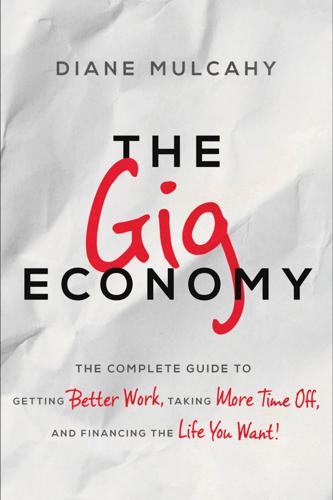
The Gig Economy: The Complete Guide to Getting Better Work, Taking More Time Off, and Financing the Life You Want
by
Diane Mulcahy
Published 8 Nov 2016
In that article, Christensen’s classmates fell prey to this short-term bias by persistently overinvesting in immediate career “wins” and achievements at the expense of the longer-term reward of lasting and loving family relationships. This is a misallocation of time if we’re striving to build a meaningful and happy life, since relationships, not our careers, are what deliver those rewards. This cognitive bias is called hyperbolic discounting. Christensen asserts that we need to resist the allure of shorter-term gratification and make an explicit effort to keep our longer-term priorities “front and center” so that we allocate sufficient time and energy toward them. Like the exercises you did previously in chapter 1, explicitly identifying our priorities and values and reminding ourselves of them can be an effective way to overcome this bias.
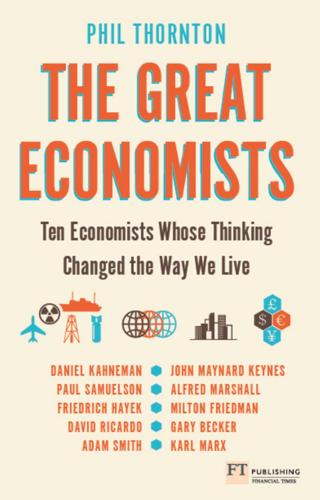
The Great Economists Ten Economists whose thinking changed the way we live-FT Publishing International (2014)
by
Phil Thornton
Published 7 May 2014
But there are some that have particularly affected the way that economists have looked at how people take financial decisions, which we will look at in more detail. Biases and errors in thinking affect the way that people make financial decisions. One is the optimism bias. In terms of its consequences for decisions, the optimistic bias may well be the most significant cognitive bias. This exploits the fact that most of us view the world as more benign than it really is, our own skills as more valuable than they truly are, and the targets we set as more achievable than they are likely to be. We also tend to exaggerate our ability to forecast the future, which in turn fosters overconfidence.

Think Like an Engineer: Use Systematic Thinking to Solve Everyday Challenges & Unlock the Inherent Values in Them
by
Mushtak Al-Atabi
Published 26 Aug 2014
If you wish to encourage the students to submit their work on time, which technique will be more effective in convincing more students to do so, giving those who hand in their work in time a bonus of 5 extra marks or imposing a penalty of deducting 5 marks for late submission? Test the validity of your answer by asking a group of students how they would respond. 8.4.3 Anchoring This cognitive bias refers to the effect of initial, sometimes arbitrary, information on decision-making. In an experiment that was repeated around the world, the audience were shown an arbitrary number, say either 20 or 180, and asked a question “how many countries are there in the world?” Those who were shown the smaller number, 20, gave on average a smaller answer compared to those who were shown the number 180.
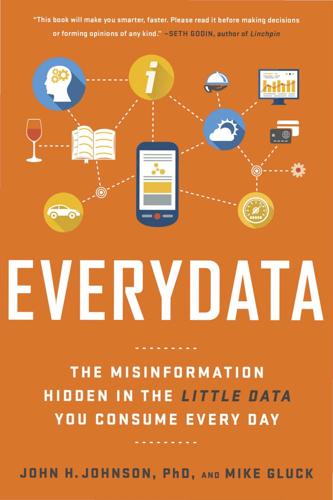
Everydata: The Misinformation Hidden in the Little Data You Consume Every Day
by
John H. Johnson
Published 27 Apr 2016
Would it surprise you if we told you that 55 percent of Americans think they are smarter than average,40 most think they are better looking than average,41 and in a recent study, 93 percent said they were more skillful than the average (median) driver.42 Perhaps Garrison Keillor had it right in his description of Lake Wobegon where “all the women are strong, all the men are good looking, and all the children are above average.”43 Statistically, it’s impossible for 93 percent of drivers to be better than the median. The median is—by definition—the middle value of your data set. But the study didn’t say that 93 percent of American drivers are more skillful. It said that 93 percent of them say they’re more skillful. What we’re likely seeing here is an example of illusory superiority—a type of cognitive bias that explains why most people think they’re better than others—hence, better than average.44 Why does this matter? If you think you’re a better than average driver, are you going to use your “skill” to justify speeding or taking other risks? If you think you’re a better than average gambler, are you going to stick around longer (and bet more) at the poker table?
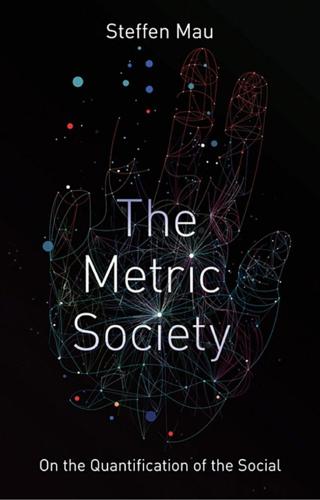
The Metric Society: On the Quantification of the Social
by
Steffen Mau
Published 12 Jun 2017
Especially critical, say detractors, is the selection bias, as students with strong views (whether positive or negative) are more likely to express them. Moreover, online platforms are presumably affected even more than classroom surveys by what is known in psychology as the halo effect, meaning a cognitive bias that emphasizes certain favourable characteristics of a person while glossing over others. In the case of online evaluations, there is also the added factor that other people's assessments can be viewed and read in advance, resulting in a tendency to be swayed by them. The traffic density of these websites suggests that they are well used by students, with the side-effect that highly rated university lecturers become more in demand, while those with lower ratings can look forward to an accordingly smaller workload.
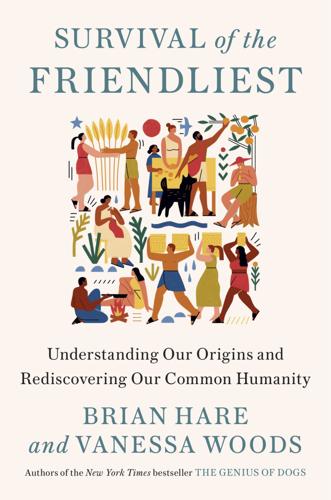
Survival of the Friendliest: Understanding Our Origins and Rediscovering Our Common Humanity
by
Brian Hare
and
Vanessa Woods
Published 13 Jul 2020
Leach, “Human Domestication Reconsidered,” Current Anthropology 44, 349–68 (2003). 48. N. K. Popova, “From Genes to Aggressive Behavior: The Role of the Serotonergic System,” Bioessays 28, 495–503 (2006). 49. H. V. Curran, H. Rees, T. Hoare, R. Hoshi, A. Bond, “Empathy and Aggression: Two Faces of Ecstasy? A Study of Interpretative Cognitive Bias and Mood Change in Ecstasy Users,” Psychopharmacology 173, 425–33 (2004). 50. E. F. Coccaro, L. J. Siever, H. M. Klar, G. Maurer, K. Cochrane, T. B. Cooper, R. C. Mohs, K. L. Davis, “Serotonergic Studies in Patients with Affective and Personality Disorders: Correlates with Suicidal and Impulsive Aggressive Behavior,” Archives of General Psychiatry 46, 587–99 (1989). 51.
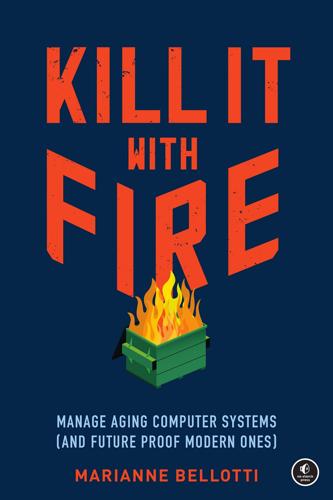
Kill It With Fire: Manage Aging Computer Systems
by
Marianne Bellotti
Published 17 Mar 2021
When we change something on them, it doesn’t always go smoothly, particularly if we’ve slipped up in our test coverage. The more problems we have making changes, the more we overestimate future failures. The more a system seems brittle, failure-prone, and just impossible to save, the more a full rewrite feels like an easier solution. Our perception of risk cues up another cognitive bias that makes rewrites more appealing than incremental improvements on a working system: whether we are trying to ensure success or avoid failure. When success seems certain, we gravitate toward more conservative, risk-averse solutions. When failure seems more likely, we switch mentalities completely.
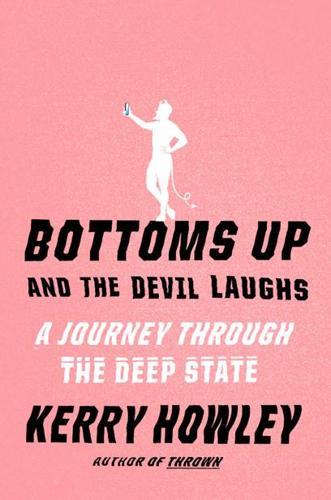
Bottoms Up and the Devil Laughs
by
Kerry Howley
Published 21 Mar 2023
It assumes a permanent single self, for one thing, a lumbering anchored persistence. Hume called the self “a bundle of different perceptions, which succeed each other with an inconceivable rapidity, in perpetual flux.” What connects us to our past selves? Not our cells, dead and replaced in the span of seven years, but unstable memories, colored by every conceivable cognitive bias. My memory is particularly bad, which is awkward at parties (“We have met many times,” the wife of a colleague recently told me at a faculty holiday event), but I ceased being sad about it when I realized the saddest people I knew had the most precise recall. They tend unwillingly toward trauma and grievance, too knowledgeable about the selves they last were, trapped in scenes of conflict they can too well reconstruct.
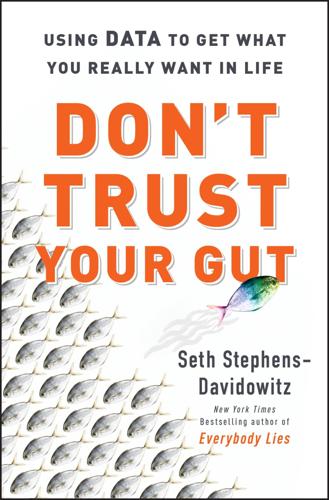
Don't Trust Your Gut: Using Data to Get What You Really Want in LIfe
by
Seth Stephens-Davidowitz
Published 9 May 2022
But a patient may not notice it—and may not report to a doctor an improvement. Due to duration neglect, many health scholars recommend patients carefully record the length of their symptoms before and after an intervention to see if they might be improving without the patients’ realizing it. Another cognitive bias that tricks us from making sense of our past experiences is the peak-end rule. We tend to judge past experiences not based on their overall pleasures and pains over the entire experience. Instead, we give undue weight to the peaks of the experience (how high the highs were or how low the lows were) and the ends of the experience (whether it ended on a high or low note).
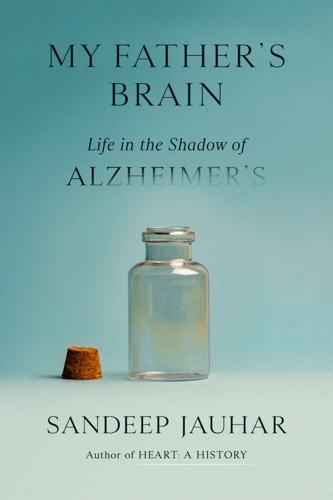
My Father's Brain: Life in the Shadow of Alzheimer's
by
Sandeep Jauhar
Published 11 Apr 2023
I wanted to believe that he could act with reason—and therefore could respond to reason—even when his actions were seemingly irrational and meaningless. A part of it, no doubt, was denial. Though as a medical professional I understood clearly what was happening, as a son I continued to hold out hope for some insight or recovery. Of course, I was trapped in a certain cognitive bias, too. Like most loved ones of the mentally ill, I had no clue how else to communicate except through rational argument. I picked up a yellow pad on the table. “Dad, where do you live?” I said with authority. “Where do I live?” he replied quietly. “Fargo.” “You live in Fargo? What is this place?”
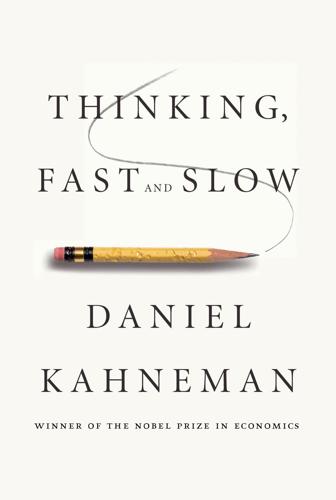
Thinking, Fast and Slow
by
Daniel Kahneman
Published 24 Oct 2011
The observation that “90% of drivers believe they are better than average” is a well-established psychological finding that has become part of the culture, and it often comes up as a prime example of a more general above-average effect. However, the interpretation of the finding has changed in recent years, from self-aggrandizement to a cognitive bias. Consider these two questions: Are you a good driver? Are you better than average as a driver? The first question is easy and the answer comes quickly: most drivers say yes. The second question is much harder and for most respondents almost impossible to answer seriously and correctly, because it requires an assessment of the average quality of drivers.
…
“value-destroying mergers”: Ulrike Malmendier and Geoffrey Tate, “Who Makes Acquisitions? CEO Overconfidence and the Market’s Reaction,” Journal of Financial Economics 89 (2008): 20–43. “engage in earnings management”: Ulrike Malmendier and Geoffrey Tate, “Superstar CEOs,” Quarterly Journal of Economics 24 (2009), 1593–1638. self-aggrandizement to a cognitive bias: Paul D. Windschitl, Jason P. Rose, Michael T. Stalk-fleet, and Andrew R. Smith, “Are People Excessive or Judicious in Their Egocentrism? A Modeling Approach to Understanding Bias and Accuracy in People’s Optimism,” Journal of Personality and Social Psychology 95 (2008): 252–73. average outcome is a loss: A form of competition neglect has also been observed in the time of day at which sellers on eBay choose to end their auctions.

Blindside: How to Anticipate Forcing Events and Wild Cards in Global Politics
by
Francis Fukuyama
Published 27 Aug 2007
Much of the reluctance to grapple with such game-changing issues stems from an unwillingness to face the consequences of taking different scenarios seriously. Those consequences might interfere with long-held mental models, organizational structures, or self- or business interests. Denial is a powerful form of cognitive bias and one of the most common reactions found in organizations of all sizes. Denial is the failure to believe or acknowledge that an organization is facing uncertainty and may need to make major changes to respond and adapt. Denial can stifle creativity and make companies and nations susceptible to strategic surprise.
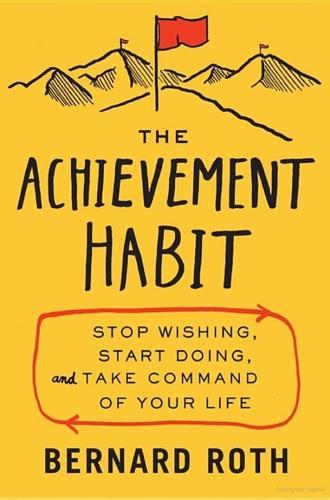
The Achievement Habit: Stop Wishing, Start Doing, and Take Command of Your Life
by
Bernard Roth
Published 6 Jul 2015
You are then to use those materials in whatever ways you want to solve the problem; however, there isn’t usually an obvious connection between the items and your problem. For instance, maybe you have to figure out how to create a communication device using a box of Cheerios, a hammer, tape, cotton balls, a hairbrush, and a bag of marbles. Most people have a cognitive bias called functional fixedness that causes them to see objects only in their normal context. The use of the materials and tools in their ordinary way will generally lead to no workable solutions or, at the very most, mundane ones. The really exciting solutions come from overcoming functional fixedness and using these everyday items in new ways.

Quantitative Value: A Practitioner's Guide to Automating Intelligent Investment and Eliminating Behavioral Errors
by
Wesley R. Gray
and
Tobias E. Carlisle
Published 29 Nov 2012
Yet within the world of value investing the quantitative approach continues to be uncommon. Where it does exist, says Montier, the practitioners tend to be “rocket scientist uber-geeks.” Why isn't quantitative value investing more common? According to Montier, the most likely answer is that old cognitive bias overconfidence. We think we know better than simple models, which have a known error rate, but prefer our own judgment, which has an unknown error rate: The most common response to these findings is to argue that surely a fund manager should be able to use quant as an input, with the flexibility to override the model when required.
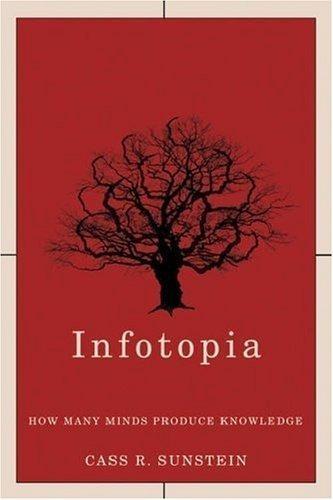
Infotopia: How Many Minds Produce Knowledge
by
Cass R. Sunstein
Published 23 Aug 2006
See Stasser and Dietz-Uhler, “Collective Choice, Judgment, and Problem Solving,” 49–50. Note that when the bias is not widely shared, it may be corrected through deliberation. See ibid. 9. MacCoun, “Comparing Micro and Macro Rationality,” 121–26 (showing amplification of jury bias). 10. Mark F. Stasson et al., “Group Consensus Approaches on Cognitive Bias Tasks: A Social Decision Scheme Approach,” Japanese Psychological Research Journal 30 (1988): 74–75. 11. See Kerr et al., “Bias in Judgment,” 693, 711–12. 12. See ibid., 692, Table 1 (noting study that found groups generally more confident than individuals); Janet A. Sniezek and Rebecca A. Henry, “Accuracy and Confidence in Group Judgment,” Organizational Behavior and Human Decision Processes 42 (1989): 24–27. 13.

Uncanny Valley: A Memoir
by
Anna Wiener
Published 14 Jan 2020
This made sense: religious institutions were eroding, corporations demanded near-spiritual commitments, information overwhelmed, and social connection had been outsourced to the internet—everyone was looking for something. But rationalism could also be a mode of historical disengagement that ignored or absolved massive power imbalances. A popular rationality podcast covered topics such as free will and moral responsibility; cognitive bias; the ethics of vote trading. When the podcast did an episode with an evolutionary psychologist who identified as a transhumanist, bivalvegan classical liberal, she and the host discussed designer babies optimized for attractiveness without once bringing up race or the history of eugenics. Arguing fervently about a world that was not actually the world struck me as vaguely immoral.

What's Wrong With Economics: A Primer for the Perplexed
by
Robert Skidelsky
Published 3 Mar 2020
In reply, others pointed out that there were sampling issues: the census bureau had recently made an effort to sample more black males, who tended to have low incomes, and the sample was too small not to be swayed by this. Borjas in turn accused his critics of bad faith.19 Far from clarifying the matter, econometrics had spun everyone around in circles. There are too many examples of studies whose econometrics were subsequently discredited, either by spreadsheet mistakes, or cognitive bias. These problems point to the fundamental weakness of econometric testing: that the conditions needed for its success arise only in controlled experimental situations. Most econometricians recognise that these conditions fail to hold strictly but proceed as if this wasn’t important. They fail to understand that the very act of writing papers in learned journals using these techniques gives authority to faulty procedure.
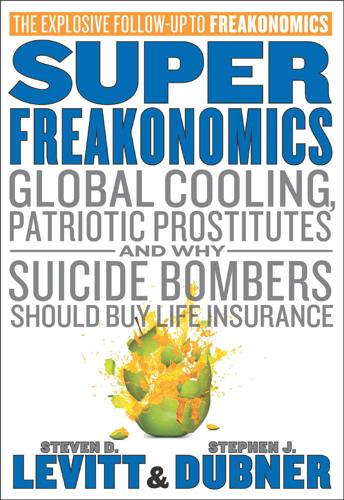
SuperFreakonomics
by
Steven D. Levitt
and
Stephen J. Dubner
Published 19 Oct 2009
They were built with open bays, divided by curtains, but if you have a SARS patient in Bed 4, there’s not a patient or doctor in the world who will want to go into Bed 5.” And don’t even get Feied started on all the hospital patients who die from a cause other than what brought them to the hospital: wrong diagnoses (the result of carelessness, hubris, or cognitive bias); medication errors (based, far too often, on sloppy handwriting); technical complications (reading an X-ray backward, for instance); and bacterial infections (the deadliest and most pervasive problem). “The state of current medical practice is so bad right now that there’s not very much worth protecting about the old ways of doing things,” Feied says.
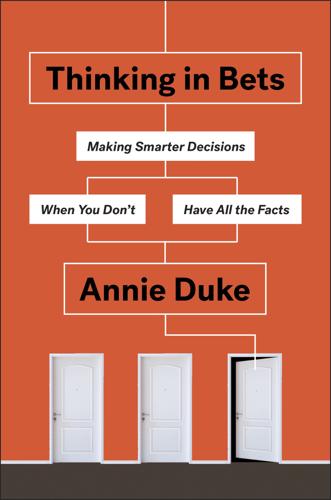
Thinking in Bets
by
Annie Duke
Published 6 Feb 2018
Lerner, Jennifer, and Philip Tetlock. “Accounting for the Effects of Accountability.” Psychological Bulletin 125, no. 2 (March 1999): 255–75. Lerner, Jennifer, and Philip Tetlock. “Bridging Individual, Interpersonal, and Institutional Approaches to Judgment and Decision Making: The Impact of Accountability on Cognitive Bias.” In Emerging Perspectives on Judgment and Decision Research, edited by Sandra Schneider and James Shanteau, 431–57. Cambridge: Cambridge University Press, 2003. Letterman, David. The Late Show with David Letterman. Season 16, Episode 30. Produced by Eric Stangel and Justin Stangel. Aired October 27, 2008, on CBS.

New Dark Age: Technology and the End of the Future
by
James Bridle
Published 18 Jun 2018
But Moore’s law, despite the name by which it came to be known (one which Moore himself wouldn’t use for two decades), is not a law. Rather, it’s a projection – in both senses of the word. It’s an extrapolation from the data but also a phantasm created by the restricted dimensionality of our imagination. It’s a confusion in the same manner as the cognitive bias that feeds our preference for heroic histories, but in the opposite direction. Where one bias leads us to see the inevitable march of progress through historical events to our present moment, the other sees this progress continuing inevitably into the future. And, as such projections do, it has the capability both to shape that future and to influence, in fundamental ways, other projections – regardless of the stability of its original premise.

Artificial Unintelligence: How Computers Misunderstand the World
by
Meredith Broussard
Published 19 Apr 2018
But until it happened, I didn’t have any way to predict that this particular tragedy would be something that I’d have to assimilate. We’re all the same in this regard. Programmers are no better than anyone else at anticipating unexpected, terrible situations. Social groups tend to have a collective blind spot when it comes to imagining the worst. It’s a kind of cognitive bias that sociologist Karen A. Cerulo calls “positive asymmetry” in her book Never Saw It Coming: Cultural Challenges to Envisioning the Worst. Positive asymmetry is a “tendency to emphasize only the best or most positive cases,” she writes. Cultures tend to reward those who focus on the positive and shun or punish those who bring up the downside.
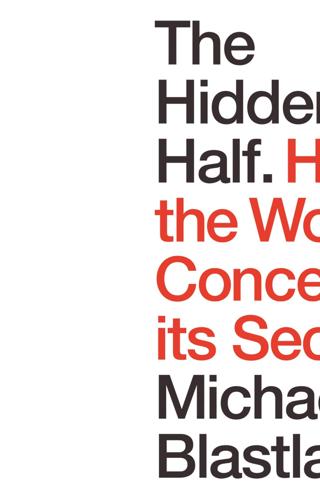
The Hidden Half: How the World Conceals Its Secrets
by
Michael Blastland
Published 3 Apr 2019
That’s partly because cognitive biases have already received much excellent attention. But I also have a mild doubt about the current emphasis on people’s cognitive limitations: that it might suggest all we need do to overcome them is become a little smarter – which if you’re a reader of books about cognitive bias of course you will be. Whereas if – as I argue – a large part of the problem is an obdurate property of the world at large, rather than (primarily) in other people’s psychology (not ours, we’ve read the books), then flattering ourselves about our own exceptional genius will get us nowhere. People do take mental shortcuts, and they do go wrong, and although this is undeniably a problem partly to do with our own thinking, one reason that we take shortcuts is the sheer complexity of what we’re grappling with.
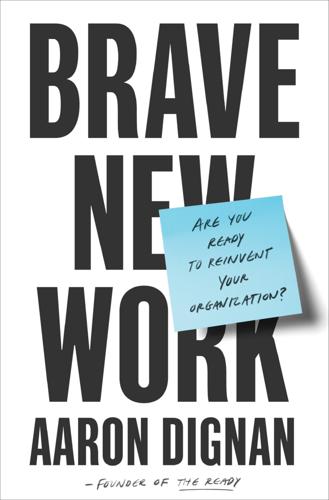
Brave New Work: Are You Ready to Reinvent Your Organization?
by
Aaron Dignan
Published 1 Feb 2019
The capacity to exercise a relatively high degree of imagination, ingenuity, and creativity in the solutions of organizational problems is widely, not narrowly, distributed in the population. Under the conditions of modern industrial life, the intellectual potentialities of the average human being are only partially utilized. These two lists force us to confront a cognitive bias that we hold about our exceptionality. As individuals, we each identify with Theory Y. I want to achieve great things. I am creative. I am responsible. But what about everyone else . . . our colleagues? It’s much easier to label them as Theory X. While we have direct access to our own thoughts and feelings, we have no such window into the minds of other people.
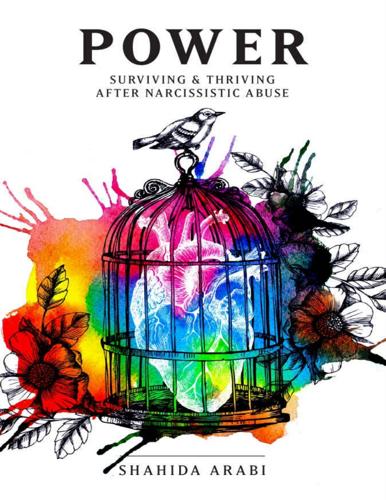
Power
by
Shahida Arabi
Published 11 Jan 2017
I’ve also found that by being grateful for certain things, I see those exact things amplified in my life in very little time—I basically get more of what I am grateful for, almost immediately. That’s just a nice bonus, but the real deal is the way you feel—and I feel much lighter, more alert, and more loving and compassionate after I say what I am grateful for. Whether you attribute that to a cognitive bias or miracle-making, the fact of the matter is, it works—so, why not do more of it? It’s no secret that trauma survivors can suffer from ruminations of what they’ve experienced, and that this pain can be unbearable. Gratitude or manifesting a new reality isn’t about sweeping that pain under the rug, holding your breath and hoping it’ll all go away.
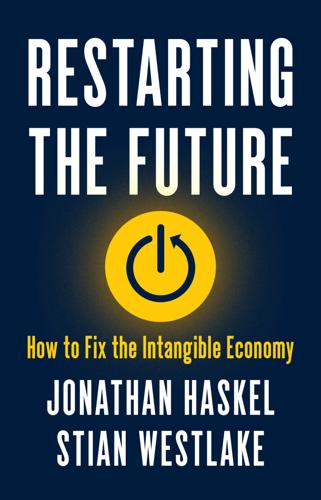
Restarting the Future: How to Fix the Intangible Economy
by
Jonathan Haskel
and
Stian Westlake
Published 4 Apr 2022
One source of such aversion might be attribution bias. It is often argued that individuals overweight their own contribution to their success and underweight the collective contribution—for example, bankers who credit their own stock-picking skills rather than the general rise in the market. If such a cognitive bias is widespread, there may be a natural preference against collective goods. How Steep Is the Trade-Off? Turning to the shape of the frontier, what determines its slope and position, and how do intangibles change it? Let’s start with the slope and use the example of a big science project.
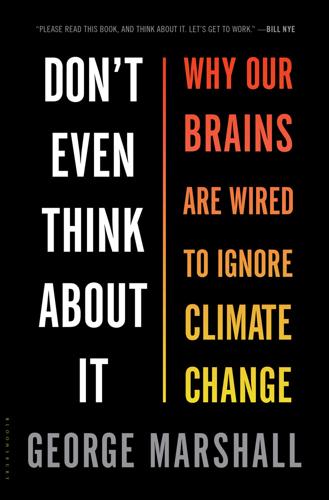
Don't Even Think About It: Why Our Brains Are Wired to Ignore Climate Change
by
George Marshall
Published 18 Aug 2014
To prove their point, the anthropologists showed that archetypal psychological experiments could generate very different results when repeated in different cultures and asked for “caution in addressing questions of human nature from this slice of humanity.” And even within WEIRD countries, a cultural disposition to long-term planning can readily overrule the cognitive bias toward temporal discounting. A team based at Copenhagen Business School found little evidence of any discounting among the cooperative Danes and, as their report charmingly put it, virtually no sign of “hyperbolicky” behavior. So in Denmark, a national culture that historically has seen a high degree of cooperation around common goals can overrule the disposition to short-term interests.

You Are Not So Smart
by
David McRaney
Published 20 Sep 2011
Would it surprise you to know those columns and sculptures were painted with a rainbow of colors that would be gaudy by today’s aesthetic standards? They were. Your schema is fast, but inaccurate. Schemas function as heuristics; the less you have to think about these concepts the faster you can process thoughts that involve them. When a schema leads to a stereotype, a prejudice, or a cognitive bias, you trade an acceptable level of inaccuracy for more speed. Back to the experiment. After the psychologists had the students list items they’d expect to find in various household locations, they brought in actors posing as a new batch of students and paired them up with the students who’d just made their lists.

Seeking SRE: Conversations About Running Production Systems at Scale
by
David N. Blank-Edelman
Published 16 Sep 2018
Smith’s Reliability, Maintainability, and Risk states a similar rate, 25%, for complicated tasks, and somewhat depressingly, a 50% error rate for “trivial” things such as noticing that valves are in the wrong position.22 In a paper on the subject,23Microsoft shows that middle-rank chess players double their chance of a serious blunder as they move from 10 seconds to 0 seconds left on their clock, and background error rates for programming — in the absence of any particular stressor — range between <1 and >13% in this comparison table. Any way you look at it, it is clear that to err is very definitely human. Another potentially large effect on on-call performance is cognitive bias, which (if you accept the overall psychological framework), strongly implies that human beings make errors in stressful situations in very systemic ways. A write-up goes into this in more detail here, but suffice to say that if you read Thinking, Fast and Slow and wonder if there’s any evidence SREs are affected by cognitive kinks of some kinds, there is indeed quite a lot of evidence to support it; for example, anchoring effects in the context of time-limited graph interpretation, closely matching the awkward constraints of on-call.
…
Aggressive hypothesizing, which is the technique of tossing out idea after idea about what’s going wrong, all as different as possible, can also be useful. This is particularly so when a number of things go wrong at the same time, due to the fact that increased stress narrows the mind. It also helps to correct for cognitive bias problems like anchoring. Finally, good discipline, such as always maintaining hand-off documents and following a well-drilled incident management procedure, is necessary to coping effectively with rapidly moving incidents; the “guide rails” provided by extensive drilling on a procedure helps you to react correctly in uncertain situations.

Richard Dawkins: How a Scientist Changed the Way We Think
by
Alan Grafen; Mark Ridley
Published 1 Jan 2006
But these facts about the social organization of information flow do not explain why some ideas are readily formulated and transmitted, and others are not. All selection depends on variation, and Dawkins’ cognoviral theory of religion is not a theory of variation. Sperber and Boyer do have a theory of variation. For this reason, we might see them as providing what we need to turn Richard’s image into a full explanation: a cognitive bias in favour of the transformed familiar + horizontal idea flow = cognitive disaster. I doubt that Sperber or Boyer would agree to this reconciliation, and in this they mirror an earlier debate between Stephen Jay Gould and Dawkins; a debate about the history of life as a whole. That debate was about the relative importance of selection and the supply of variation.
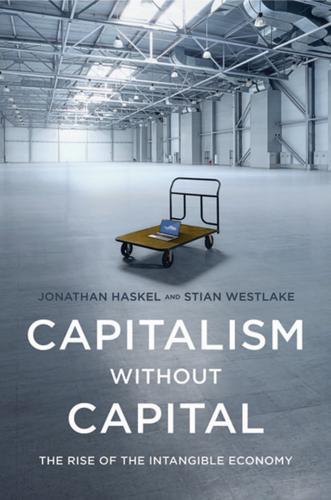
Capitalism Without Capital: The Rise of the Intangible Economy
by
Jonathan Haskel
and
Stian Westlake
Published 7 Nov 2017
What makes them different is in part their reputation, but also the very organization itself. So let us turn to the organization and, in particular, the role of management and leadership. Managing One reason for the celebrity status of managers is offered by the consistently fascinating blogger Chris Dillow,5 namely, the cognitive bias of “fundamental attribution error.” As we discussed in chapter 6, if people tend to relate the success of a company to its hero manager, rather than to general progress of technology or the state of the economy or the organizational capital embodied in the company itself, they may reward the manager too highly.
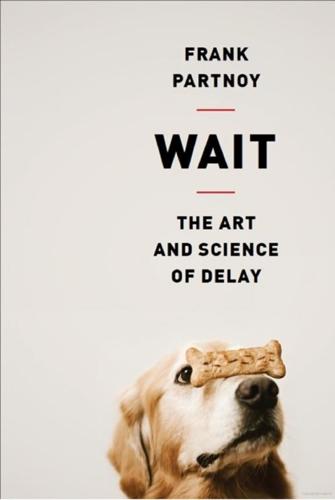
Wait: The Art and Science of Delay
by
Frank Partnoy
Published 15 Jan 2012
See Kaomi Goetz, “How 3M Gave Everyone Days Off and Created an Innovation Dynamo,” Co Design, February 1, 2011, http://www.fastcodesign.com/1663137/how-3m-gave-everyone-days-off-and-created-an-innovation-dynamo. 21. 3M, A Century of Innovation, p. 33. 22. Merim Bilalíc, Peter McLeod, and Fernand Gobet, “The Mechanism of the Einstellung (Set) Effect: A Pervasive Source of Cognitive Bias,” Current Directions in Psychological Science 19(2, 2010): 111–115. 23. Ibid., p. 115. 24. Ibid., p. 113. 25. John Maynard Keynes, The General Theory of Employment, Interest, and Money (Macmillan, 1973), p. xxiii. 26. Full disclosure: Charlie Graham, the founder and CEO of Shop It To Me, is my brother-in-law. 27. 3M, A Century of Innovation, pp. 38–39. 28.
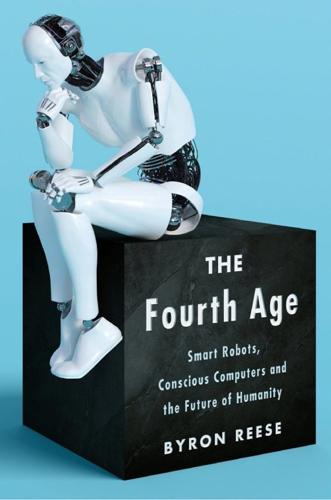
The Fourth Age: Smart Robots, Conscious Computers, and the Future of Humanity
by
Byron Reese
Published 23 Apr 2018
We intuitively know to step back from rattlesnakes, not vending machines, and despite decades of safe consumer aviation, we intuitively, and incorrectly, feel that driving is safer than flying. It is a predilection of humans to be overly cautious. For our ancestors, nervousness was a virtue. It was far better to mistake a rock for a bear and run away from it than to mistake a bear for a rock and stay put. A cognitive bias toward fear isn’t always a bad thing. So what are some of the things we have to worry about in the future? The most obvious challenges are in biology. There will be little to stop someone from bioengineering a pathogen. CRISPR genomic editing is so easy and inexpensive that $100 kits are available for elementary school students to modify yeast to turn it red.

The Success Equation: Untangling Skill and Luck in Business, Sports, and Investing
by
Michael J. Mauboussin
Published 14 Jul 2012
Once something has happened, our natural inclination is to come up with a cause to explain the effect. The problem is that we commonly twist, distort, or ignore the role that luck plays in our successes and failures. Thinking explicitly about how luck influences our lives can help offset that cognitive bias. Quantifying Luck's Role in the Success Equation The starting place for this book is to go beyond grasping the general idea that luck is important. Then we can begin to figure out the extent to which luck contributes to our achievements, successes, and failures. The ultimate goal is to determine how to deal with luck in making decisions.

Lost in Math: How Beauty Leads Physics Astray
by
Sabine Hossenfelder
Published 11 Jun 2018
James Watson, for example, recalls that Rosalind Franklin was convinced that DNA was structured as a double helix because it was “too pretty not to be true.”3 Biologists preferentially study pretty animals.4 And the mathematician David Orrell has argued that climate scientists favor elegant models to the detriment of accuracy.5 But chasing after beauty isn’t a theory of everything. If there isn’t a cognitive bias for trying to kill too many birds with one stone, there should be one, and I’ll try not to fall for it. I’ve noticed aesthetic bias in only a few scientific disciplines, and even in physics it’s dominant mainly in the areas I wrote about. Before I move on to the more general problem of social and cognitive biases, however, I want to highlight a case where the desire for elegant mathematics impacts our lives somewhat more than does quantum gravity: economics.
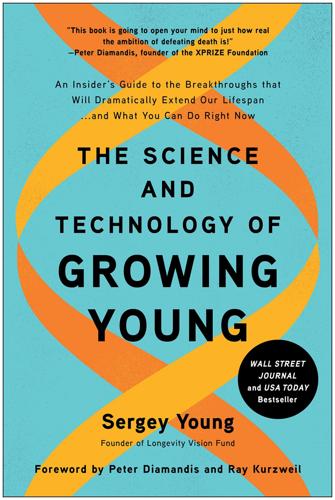
The Science and Technology of Growing Young: An Insider's Guide to the Breakthroughs That Will Dramatically Extend Our Lifespan . . . And What You Can Do Right Now
by
Sergey Young
Published 23 Aug 2021
Collectively, we can draw and redraw the red lines that define what is good and what is beyond the pale.”39 GROWING OLDER—AND WISER In the introduction to this chapter, I promised you that we can defeat aging, and I asked, Should we? My answer is, We should. But I’ll get back to that in a minute. Look—the environmental and moral hazards we face are daunting. Most humans act pretty selfishly and irresponsibly. It’s part of another cognitive bias called hyperbolic discounting. That’s the tendency of people to value a smaller, near-term reward over a larger, longer-term benefit. We chase after short-term gain as if we were mice on a wheel, frantically seeking to get ahead while not even caring about where we are truly going. Among ourselves we fight between race, class, gender, generation, political affiliation, and nationality.
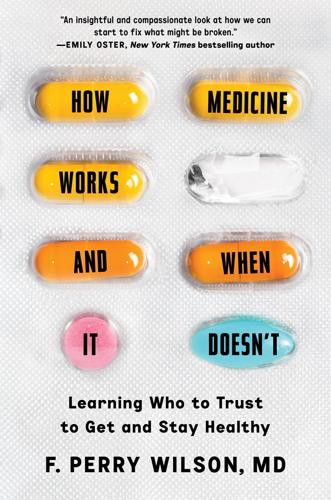
How Medicine Works and When It Doesn't: Learning Who to Trust to Get and Stay Healthy
by
F. Perry Wilson
Published 24 Jan 2023
For someone who feels a stigma surrounding their depression, tell them it is not their own brain, but an external toxin, that is wreaking havoc. To know who to trust with your health, you need to first know yourself. You need to know, deep down, what you want to be true. And be careful of those who tell you it is true. This skill, consciously avoiding the cognitive bias known as “motivated reasoning” (the tendency to interpret facts in a way that conforms with your desired outcome), is challenging for all of us—doctors included. But it is probably the most critical skill to have if you want to make the best, most rational choices about your health. The answer you are looking for might not be the right answer.
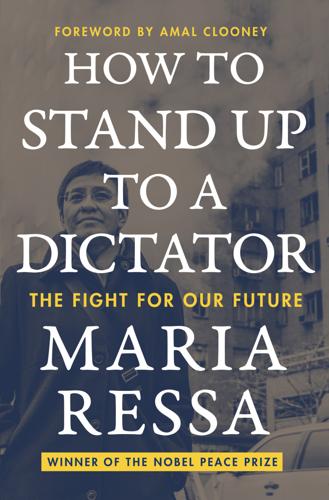
How to Stand Up to a Dictator
by
Maria Ressa
Published 19 Oct 2022
If you click on a borderline conspiracy theory, for example, the next content a platform serves you is even more radical because it keeps you scrolling.54 Groups like QAnon spread from the darkest corners of the web onto Twitter and Facebook (and have links to the Philippines), until they were suspended and banned.55 It took years to get to that ban. In the meantime, what happened to the people who were swayed to believe in the conspiracy theories? What about their cognitive bias, which may lead them to see the bans as yet another evidence of a conspiracy? Those technical decisions fed the surveillance capitalism model: increasing the companies’ growth with friends-of-friends recommendations and increasing the time you spend on a site by serving you ever more emotive, radical, and extremist content.
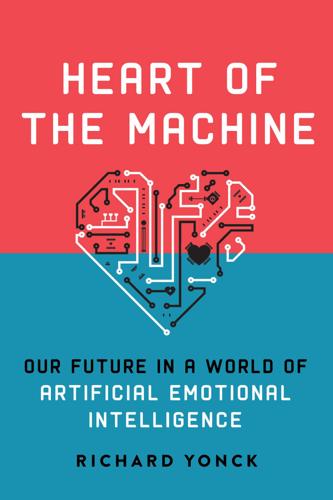
Heart of the Machine: Our Future in a World of Artificial Emotional Intelligence
by
Richard Yonck
Published 7 Mar 2017
Nature 413, 519–23 (October 4, 2001). 11. Enard W., Przeworski M., Fisher S.E., Lai C.S., Wiebe V., Kitano T., Monaco A.P., Pääbo S. “Molecular evolution of FOXP2, a gene involved in speech and language.” Nature 418, 869–872 (August 22, 2002). 12. Today we refer to such overconfidence as the Dunning-Kruger effect, a form of cognitive bias. https://en.wikipedia.org/wiki/Dunning–Kruger_effect. 13. Christiansen, M.H., Kirby, S. “Language evolution: consensus and controversies.” TRENDS in Cognitive Sciences, Vol.7 No.7. July 2003. 14. Philosophical Transactions of the Royal Society B. “The neural and cognitive correlates of aimed throwing in chimpanzees: a magnetic resonance image and behavioural study on a unique form of social tool use,” January 12, 2012, vol. 367 no. 1585 37–47. 15.

Singularity Rising: Surviving and Thriving in a Smarter, Richer, and More Dangerous World
by
James D. Miller
Published 14 Jun 2012
Hanson told me that we should be suspicious if a group of people with trait X argue that in the future trait X will be all-important because this group might be making predictions about the future to raise the status of people with trait X, or this group might have an irrationally high opinion of trait X. Lots of Singularitarians have extremely high measured intelligence. Hanson thinks that some futurists also have a cognitive bias toward expecting “an unrealistic degree of [self-sufficiency] or independence.” 348 For most of mankind’s existence, we lived in small, autonomous hunter-gatherer tribes. Evolutionary selection pressures haven’t had time to adjust our brains to the fact that we now live in an extraordinarily interconnected world in which no one small group of people can really do all that much to change the existing social order, especially over a short period of time.
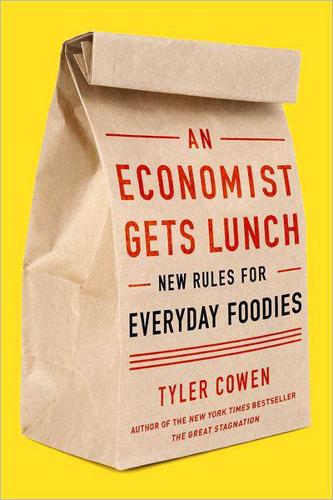
An Economist Gets Lunch: New Rules for Everyday Foodies
by
Tyler Cowen
Published 11 Apr 2012
There is a high return to having very good and very durable versions of what you use all the time. So take your five kitchen item “winners” and spend more money on them. That’s usually a better bet than trying new kitchen equipment, which will likely lie fallow and over time make you feel bad about having wasted your money. The cognitive bias here is a common one: new, shiny toys hold great appeal for us, because in some ways we are still kids. But we’re being tricked by the marketing and by the fun of the buying experience itself, so spend your money on what will turn out to be more reliable pleasures. We actually learn cooking by mastering how to use well-understood equipment, to make some specialized dishes of great interest to us, rather than by making new purchases or by having one of each item.
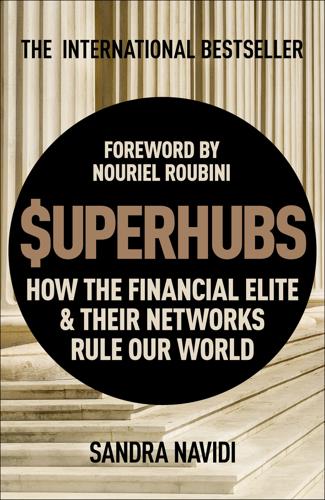
SUPERHUBS: How the Financial Elite and Their Networks Rule Our World
by
Sandra Navidi
Published 24 Jan 2017
Yet what might seem reputation-destroying to many of us sometimes appears not to matter much in the business world. Jamie Dimon, CEO of JPMorgan, oversaw the loss of $6.2 billion, yet his reputation as a competent leader in global finance did not suffer. A larger-than-life reputation tends to become self-sustaining due to a cognitive bias known as the “halo effect,”18 in which everything an individual does is viewed through the frame of his assumed excellence. In other words, once opinion leaders in the network deem someone to be extraordinary, the network assumes it as an eternal fact. Even in the event of a massive failure, the superhubs’ tight network connections often prevent peers from falling through the cracks.19 Loyalties and social capital are a strong base on which relationships are cemented, and most of the executives who lost their jobs during the financial crisis later resurfaced elsewhere.
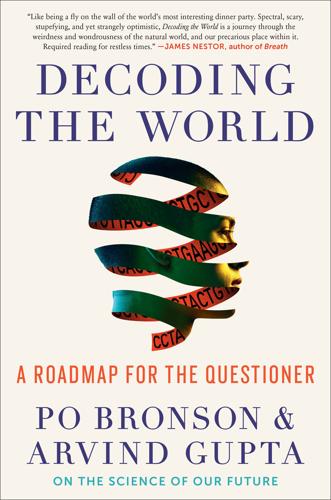
Decoding the World: A Roadmap for the Questioner
by
Po Bronson
Published 14 Jul 2020
The young man enters a zealous state, obsessed like Kubla Khan, convinced by a spell of his own making, positive he has stumbled onto the most important truth in our nature. In this phase, he is in the Forest of Resemblances. Of course, it does not explain everything. And as the man ages a few years, he suffers this sadness as the spell wears off, and his explanation is revealed to be just one tree, maybe a grove, but no forest. There is a well-known cognitive bias, called the Baader-Meinhof Phenomenon, or just Frequency Illusion. When you see something conspicuous and now are looking for it, suddenly you see it everywhere. The difference between a Frequency Illusion and the Forest of Resemblances is slight but critical. In a Frequency Illusion, you realize, “Woah, so many women are wearing little black backpacks these days,” or, “Seems like there’s a school shooting every month.”
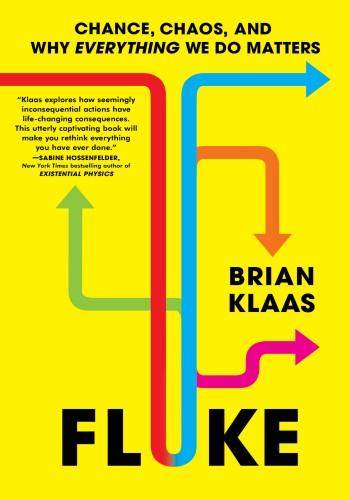
Fluke: Chance, Chaos, and Why Everything We Do Matters
by
Brian Klaas
Published 23 Jan 2024
Plenty of serious-seeming people in slick suits with eminent degrees and an abundance of charming confidence have repeatedly crashed the economy, dragged us into wars, and inflicted tremendous global suffering. So, it’s not just who says something, but how we perceive the person saying it. Contingency upon contingency upon contingency. We may refer to the messenger mattering as much as the message as the Cassandra problem, yet another cognitive bias that can change history in irrational, arbitrary ways. If we’re prone to these biases, then so, too, were other humans throughout history. For example, in April 1865, Charles Colchester warned Abraham Lincoln that his life was in danger just days before Lincoln was killed at Ford’s Theatre. Colchester, a “red-faced, blue-eyed Englishman with a large mustache,” had the trust of Lincoln’s wife, Mary Todd.

Enlightenment Now: The Case for Reason, Science, Humanism, and Progress
by
Steven Pinker
Published 13 Feb 2018
Believers, sympathizers, and skeptics: Why Americans are conflicted about climate change, environmental policy, and science. Washington: Public Religion Research Institute. Jussim, L., Krosnick, J., Vazire, S., Stevens, S., Anglin, S., et al. 2017. Political bias. Best Practices in Science. https://bps.stanford.edu/?page_id=3371. Kahan, D. M. 2012. Cognitive bias and the constitution of the liberal republic of science. Yale Law School, Public Law Working Paper 270. https://papers.ssrn.com/sol3/papers.cfm?abstract_id=2174032. Kahan, D. M. 2015. Climate-science communication and the measurement problem. Political Psychology, 36, 1–43. Kahan, D. M., Braman, D., Slovic, P., Gastil, J., & Cohen, G. 2009.
…
African AIDS relief policy of, 67 among know-nothings, 374–5 disdain for science and, 60, 387, 389 and nuclear weapons, 291, 319 prescription drug benefit of, 109 wealth creation malaprop, 81 Buturovic, Zeljka, 362 Cambodia, 78, 147, 161, 238 Cameroon, 162 Campbell, David, 432 Campbell, Joseph, 456n1 Camus, Albert, 446 Canada child mortality and, 56 depression and, 282 economic freedom in, 365, 483n39 education in, 237 emancipative values in, 225–7, 226, 227 and escape from poverty, 85 happiness and well-being, 438–9, 475n30 homicide rates in, 171 populism and, 341 secularization and, 436, 437, 438–9 social spending in, 108, 109, 365, 483n39 cancer, 61, 146 Cantril, Hadley, 266, 359 capitalism authoritarian, China and, 90, 201, 203–4, 343 as coexisting with regulations, 364, 365 as coexisting with social spending, 364, 365, 483nn39,42 and cultures, 85 and Great Escape from poverty, 90–91, 364 unbridled/unregulated/untrammeled, 364 See also commerce; economic inequality; economics capital punishment abolition of, 208–213, 209 cognitive bias study referencing, 359–60 homosexual behavior criminalized, 223 Capp, Al, 297 Caracas, Venezuela, 172 carbon tax, 139, 145–6, 149 Carey, John, 247 Caribbean countries, 89, 175, 201, 203 Carlson, Robert, 307 Carroll, Sean, 385 Carter Center, 65 Carter, Jimmy, 67 Carter, Richard, 63–4 Castro, Fidel, 376–7, 447, 484n79 Catholic Church, education and, 234 Catholic countries, emancipative values in, 227, 227 Catholics, 222, 437, 440 Central African Republic, 95, 162, 236 Central Asia, democratization and, 206 Chad, 160, 162 Chalk, Frank, 160–61 Chalmers, David, 425–6 Chamberlain, Houston Stewart, 398 Chaplin, Charlie, 186 charitable giving Effective Altruism, 381 as factor in happiness, 271 Charlie Hebdo massacre, 370 Chase, Chevy, 266 Chaucer, Geoffrey, 181 Chávez, Hugo, 91, 171, 447 Chekhov, Anton, 284, 387 Chenoweth, Erica, 405 Chernobyl disaster (1986), 146 child mortality, 55–7, 56, 58, 66–7, 66, 125 children, 228–30 abuse of, 229 bullying at school, 229 child labor, 230–32, 231 child marriage ban, 222 childrearing in emancipative values, 224 corporal punishment of, 229–30 negative media coverage of, 229 stunting due to undernourishment, 70–71, 71 trafficking in, 232 See also child mortality; education; teenagers Chile child mortality and, 56 earthquake (2010), 188 education and literacy in, 236, 238 GDP of, 85 military government of, 200 poverty in, 91 China An Lushan Rebellion, 484n77 authoritarian capitalism of, 90, 201, 203–4, 343 Axial Age and, 23 calories available per person in, 70, 70 capital punishment in, 209–210 carbon emissions of, 143, 143, 144 childhood stunting in, 71, 71 Chinese Civil War, 49, 158, 160, 199 Cultural Revolution (1966–75), 91, 161, 208 democratization and, 206 education in, 237, 237, 238 escape from poverty of, 85, 86, 90 famine in, 69, 72, 78 GDP of, 85 globalization and, 111 Great Leap Forward (1958–61), 78, 91 Great Recession and, 112 human rights in, 208, 208 mass killings (genocide deaths) in, 161 nuclear power and, 147, 150 nuclear weapons and, 313, 317, 318, 320 per capita income of, 86 perception of the world as getting better, 457n8 population-control program of, 74 quality of life and, 247 secularization and, 436 social spending in, 109 Tiananmen Square protests, 208 traffic death rates in, 178 and Universal Declaration of Human Rights, 419 China Syndrome, The (film), 147–8 chlorofluorocarbons ban (1987), 134 Chomsky, Noam, 443, 456n1 Christian militias, 162 Christians and Christianity humanist denominations, 412 killings by ISIS, 162 Nietzsche’s rejection of, 444 religiosity of nation-states in world wars, 429–30 theoconservatism, 448–9 wars of religion, 8, 10, 364, 450, 488n46 See also Bible; Evangelical Christians Churchill, Winston, 205, 341 Cicero, 397 Cipolla, Carlo, 79–80 cities.

Utopia Is Creepy: And Other Provocations
by
Nicholas Carr
Published 5 Sep 2016
,” 121 Cai Lun, 286–87, 291 candlelight, 229–30 capitalism, 83–85 Case against Perfection, The (Sandel), 340 Case of Emily V., The (Oatley), 248 cassette tape, 121, 124 CCTV cameras, 52 CDs (compact disks), 42, 123–24, 293 cell phones, 52, 80, 233 censorship: in China, 283 free flow of information vs., 191 Centers for Disease Control and Prevention, 304 centrifugal force, 67 centripetal force, 66 Chambers, John, 134 Chen, Steve, 29 Chief Officers of State Library Agencies, 272 Chin, Denny, 269, 272 China, censored searches in, 283 Christian, Rebecca, 80 citation, allusion vs., 87–88 Clash, 63–64 classical music, 43–44 Claude Glass, 131–32 Clinton, Bill, 315 Clinton, Hillary, 314, 315, 317–18 clocks, changes wrought by, 235–36 clones, virtual, 26–27 cloud computing programs, 264, 283 cloud storage, 163, 168, 185, 225 physical archives vs., 326 CNET, 55 Coachella festival, 126 Coca-Cola, marketing of, 53–54 cocaine, 262 cochlear implants, 332 cognitive bias, 321 cognitive control, 96 cognitive function: effect of internet on, 199–200, 231–42 effect of video games on, 93–97 “flow” state in, 297 memory and, 98–99 neuroengineering of, 332 reading and, 248–52 cognitive surplus, 59–60 avoidance of, 74 Coleridge, Samuel Taylor, 251 Collaborative Consumption, 84–85, 148 Columbia Records, 43–44 commercialism: anticonsumerism and, 83–85 culture transformed by, xvii–xxii, 3, 9, 150, 177, 198, 214–15 in innovation, 172 of libraries, 270–71 media as tool of, 106, 213, 240, 244–45, 257–58, 320 in virtuality, 25–27, 72 commodes, high-tech, 23–24 communication: between computers, 167 computer vs. human, 152–54 evolution of, 53 loneliness and, 159 mass, 67–68 speed of, 223, 320 thought-sharing in, 214–15 Communist Manifesto (Marx and Engles), 308 “Complete Control,” 63–64 Computer Power and Human Reason (Weizenbaum), 236 computers: author’s early involvement with, xix–xi benefits and limitations of, 322–23 in education, 134 effect on paper consumption of, 287–88 evolution of, xix–x, 165 future gothic scenarios for, 112–15 human hybridization with, 37–38, 332 human partnership with, 321–24 as impediment to knowledge perception, 303–4 minds uploaded to, 69 revivification through, 69–70 written word vs., 325–28 concentration, diffusion of, 231–33, 236–37 Confession d’un Enfant du Siècle, La (Musset), xxiii Congress, U.S., 275–77 consumer choice, 44–45 Consumer Electronics Show (CES), 32, 56 consumerism: counterculture co-opted by, 72 distraction and, 65 media as tool of, 106, 132, 219 consumption, self-realization vs., 64–65 contemplation, 241, 246 through work, 298–99 conversation, computer streaming of, 152–54 CopyBot controversy, 25–27 copyright laws: history of, 275–76 in online library controversies, 269–71, 275–78, 283 in virtual world, 25–27 Corporate Communalists, 83 corporate control, through self-tracking, 163–65 correspondence courses, 133–34 cosmetic surgery, 331, 334 Costeja González, Mario, 190–92, 194 Coupland, Douglas, 102, 103 Courant, Paul, 270, 272 courtesy: decline of, 157 inefficiency of, 152–54 Cowen, Tyler, 116 Crawford, Matthew, 265 creativity, 49, 64 before the virtual world, 60–61 economics of, 8–9 in music, 44–45, 294 stifled by iPad, 76–78 see also innovation “crisis of control,” 188–89 CRISPR, 334–35 crowdsourcing, 37 Cruz, Ted, 314 cultural memory, archiving of, 325–28 cutouts (remaindered record albums), 122 CyberLover, 55 cybernetics, 37–38, 214 cyberpunk, 113 cyberspace, xvii, 127 early idealism of, 85 “Cyborg Manifesto” (Haraway), 168–69 cyborgs, 131 cynicism, 158 Daedalus, 336, 340 Darnton, Robert, 270–75, 278 DARPA, 332 Dash Express, 56 data-mining, 186, 212, 255–59 data-protection agencies, 190–91 Data Protection Directive, 191, 193 Davidson, Cathy, 94 Davies, Alex, 195 Davies, William, 214–15 Dean, Jeff, 137 death, as hardware failure, 115 Declaration of Independence, 278, 325 “Declaration of the Independence of Cyberspace” (Barlow), 85 deep reading, 241 deletionists, 18–20, 58 democratization, xvi, xviii, 28, 86, 89, 115, 208, 271 internet perceived as tool for, 319–20 depression, 304 Derry, N.H., 296–97 Descartes, René, 301, 330 Dewey, John, 304 “digital dualism,” 129 “digital lifestyle,” 32–33 digital memory, 327 digital preservation, 325–28 Digital Public Library of America (DPLA), 268, 271–78 “Digital Republic of Letters,” 271 discovery, adventure of, 13–15 Disenchanted Night (Schivelbusch), 229 displaced agency, 265 distraction, xix, 14, 316 in consumerism, 65 video games and, 19 diversity, 65 DNA, 69–70, 334–35 Doctorow, Cory, 76–77 “Does the ‘New Economy’ Measure Up to the Great Inventions of the Past?”

The Road to Ruin: The Global Elites' Secret Plan for the Next Financial Crisis
by
James Rickards
Published 15 Nov 2016
Churchill once sent a cable to Keynes: Noel F. Busch, “Close-Up: Lord Keynes,” Life, September 17, 1945, accessed August 7, 2016, https://books.google.com/books?id=t0kEAAAAMBAJ&q=%22a+cable%22&hl=en#v=snippet&q=%22a%20cable%22&f=false. For example, Kahneman’s experiments show: This example illustrates a cognitive bias Kahneman called “risk aversion.” See Daniel Kahneman, Thinking, Fast and Slow (New York: Farrar, Straus and Giroux, 2011), 434–36. CHAPTER 1: THIS IS THE END “Nice, nice, very nice”: Kurt Vonnegut, Cat’s Cradle (New York: Dial Press, 2010), 3. Under Larry Fink’s direction, BlackRock emerged: Some descriptions of Larry Fink’s management style and work habits in this material are from Carol J.
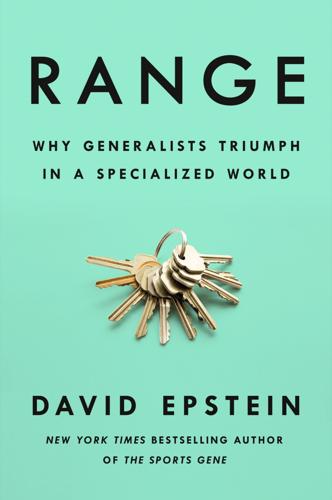
Range: Why Generalists Triumph in a Specialized World
by
David Epstein
Published 1 Mar 2019
Dmitry asks, to a few giggles. Jake is particularly unimpressed with engine mechanic Pat’s reasoning. “I think Pat’s a really good mechanic,” he says. “I don’t think he’s a really good root cause analysis engineer, and those are two very different things.” Jake thinks Pat is falling prey to a well-known cognitive bias, overemphasizing the importance of a single, dramatic memory—the three gasket breaks on a cool day. “We don’t even have the information to understand this graph,” Jake says. “There’s twenty-four races, right? How many of those were around 53 degrees and didn’t break? I don’t mean to attack your point,” he says to Dmitry, smiling and giving him a friendly tap on the hand.
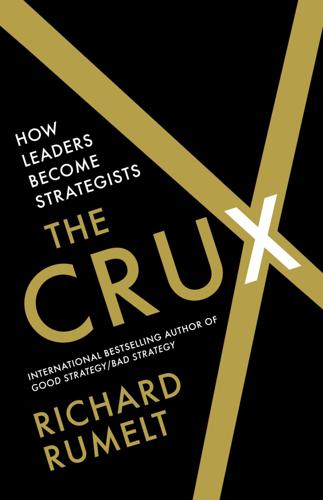
The Crux
by
Richard Rumelt
Published 27 Apr 2022
See Google alternatives, designing, 42–45 Amazon close coupling of activities, 188 cloud-based computing, 79 customer-centric strategy, 123 long-term financial approach, 267–268 Marketplace service, 42 Salesforce.com as analogy, 48 semiconductor manufacturing, 78 value and earnings, 259 ambitions characteristics of gnarly challenges, 38 chunking the challenges, 75–76 clash among internal ambitions, 70–73 versus goals, 20–22 Salesforce.com’s adaptive strategy, 59 Vietnam War, 71–73 AMD (Advanced Micro Devices), 77, 81, 103 analogies, 48–49, 147–150 analysis and diagnosis of the challenge BCG growth-share matrix, 173–175 capital budgeting, 168–173 identifying goals, 20 industry-analysis framework, 167 leading to strategy creation, 28–29 the mechanics of insight, 47 Netflix, 17–19, 22–23, 28 reanalysis revealing problems and opportunities, 160–164 reframing the situation, 140–142 theory of disruption, 175–180 transcending, 173–175 app store, 42, 145–147 AppExchange, 58–59 Apple impact on tech consumption, 214 Jobs’s management style, 31, 269–271 network effects, 198–199 stock options, 263–264 streaming service, 19 See also iPhone Arab-Israeli War, 151–156 ArtFire, 202 artificial intelligence (AI) market, 78–80, 82, 189, 208–209 ArtX, 103 assumptions, explicating, 49–50 asymmetries in competition, 27 AT&T: long-range planning, 272–273 automobile production economies of scale, 195–196 leverage point at General Motors, 218–221 making assumptions, 49–50 Wankel engines, 236–237 automotive sensors, 68–70, 320 Bain & Company, 281 Balanced Scorecard management approach, 251–256 Ballmer, Steve, 73, 148–149 bankruptcy, 220–221, 247 Barra, Mary, 221 Basecamp software, 44 Bata shoe company, 194 Bay of Pigs invasion, 291 BCG growth-share matrix, 173–175 Benioff, Marc, 45, 48, 55–59 Benneton, 217–218 Berner, Ted, 235–241 Bertrand competition, 185–186, 199 Bezos, Jeff, 45, 267, 271 bias and decision making, 295–297, 325–326 Black, Fischer, 260 BlackBerry (Research in Motion), 176–177, 180, 270 Black-Scholes option-pricing formula, 260 “blob,” 104–105, 180 BOLERO, 130–132 Boston Consulting Group, 197 Bower, Joseph, 175 Boyd, John, 94–97 Boyd Loop, 94–97 “bright, shiny objects” response to problems, 11, 48, 107–108, 233 Brin, Sergey, 53 Brown, Jerry, 277 brushless motor industry, 255–256 Bryant, Andy, 31 budgeting, strategic planning as, 282 Buffett, Warren, 260–261, 267–268 bureaucracy effect on IBM’s productivity, 228 growing the blob, 104–105 organization dysfunction at GM, 219 Bush administration, 292–293 Bushee, Brian, 267 business plan, 183–184 Cahill, Tom, 275 California: strategic water plan, 277 capital budgeting, 168–174 cash flows capital budgeting analysis, 168–173 future predictions and valuations, 259–260 Netflix challenges, 25 noise masking intrinsic value, 267–268 Centers for Disease Control (CDC), 96, 279–280 Central Intelligence Agency (CIA), 152–153, 291, 293 challenges chunking, 75–76 diagnosing, 22–23 facing, 11 the ongoing strategy process, 54–55 Strategy Foundry tools, 298–299, 317–318 See also gnarly challenges Chatter, 58–59 Cheney, Dick, 292–293 chess, 35, 47–48 China economic problems, 43 effect on US milk production, 246 Intel’s market share, 79 tech race, 95–96 choice challenges, 24, 59 Christensen, Clayton, 175–178 chunking, 75–76 Churchill, Winston, 131–133 Cisco, 210–211 Clifford, Clark, 72, 249 climate-control systems, 287–289 close coupling of activities, 187–190 clothing manufacturing, 194, 204–205 cloud-based computing CRMs, 56–59 Dropbox, 212–213 Intel’s market share, 79 clustering, 40 cognitive bias, effect on decision making, 295–297 coherent action the common sense basis of, 125 creating power, 123–124 the minimum coherence, 136 Petzl equipment, 121–123 setting incoherent goals and objectives, 128–130 space shuttle design’s lack of, 125–128 strategy versus politics, 130–132 US policy in Afghanistan, 132–136 Cold War, 31, 40, 151–156 collecting, 40 comic books and toys, 39 comparisons container shipping and airlines, 164–166 corruption in rail construction, 157–160 creating a shopping “district” with competitors, 162 industry-analysis framework, 167 measurement as, 157 through reanalysis, 160–164 competition asymmetries, 27 avoiding the problem of, 142 Bertrand’s logic of, 185–186 close coupling of activities, 187–190 Cold War, 31 container shipping, 165 creating a shopping “district,” 162 customer research and input, 190–193 diagnosing the challenge, 84–85 finding the advantage, 184–185 finding the crux of Intel’s challenges, 80 identifying challenges in the Strategy Foundry, 303–307, 309 integration and deintegration, 193–194 iPhone market share, 42, 148–149 knowing your edge, 186–187 lack of corporate integration, 118–120 making comparisons, 157 marketing and sales, 118–120 Netflix challenges, 19 network effects, 198–199 platforms, 199–201 quick responses for strong growth, 94–97 scale and experience, 195–198 as source of insight, 48 “strategy statements,” 112–114 uncoupling, 193 complementary assets, 214–216 computer systems, 103, 193, 252–256 computer-based animation, 44–45, 50–51 confirmation bias, 295–296 conflict resolution, 115 consensus estimates, 257–258 corner solutions, 70–71 Corning: fiber-optic cable development, 207 Corporate Renewal Initiative (INSEAD), 226 corruption in US rail construction, 158 cost estimates, 325–326 cover-story process, 319–320 COVID-19 pandemic, 10 air travel challenges, 61–62 government response times, 96–97 Intel-China relationship, 79 long-range and strategic planning, 273–276 Zoom traffic, 211 Craigslist, 200 Cray, Seymour, 188 creativity the mechanics of insight, 45–49 organization dysfunction at GM, 219 critical winnable challenge, 142–144 culture, business changing Boeing’s, 258 changing corporate points of view, 143–144 clash of ambitions, 73 finding the crux of Intel’s challenges, 80–82 GM’s organizational dysfunction, 220–221 IBM’s resistance to change, 228–230 Intel, 79–80 Curtiss, Glenn, 236 Curtiss-Wright, 235–240 customer experience ratings, 142–144 customer research and input, 190–193 customer-relationship management (CRM) system, 45, 56–59 Darwin, Charles, 46 data services, 179 Dean Foods, 245–247, 280 death COVID-19 mortality rate, 274–275 GM’s ignition-switch fiasco, 220–221 decision, theory of, 23 deducing a strategy, 32–37 Defense, Department of, 208–209 deliverables, 298 democracy: incoherence in US Afghan policy, 133–136 DePuy, William, 153–156 design versus deduction, 34–37 Dewey, John, 46–47 diagnosis of the challenge.

The Glass Half-Empty: Debunking the Myth of Progress in the Twenty-First Century
by
Rodrigo Aguilera
Published 10 Mar 2020
Like all optimism biases, the BJW is a psychological self-protection device, which is confirmed by numerous studies linking BJW with positive mental health outcomes such as higher subjective well-being and lower levels of depression.35 Unfortunately, it also results in grossly unempathetic attitudes towards human suffering and misfortune, even that which is demonstrably random: one of the first experiments on BJW by Lerner involved a female victim receiving electric shocks, after which she was rated less favorably by observers whenever her suffering could not be stopped or worse still, when she was seen as a martyr.36 This experiment, like many others, shows that BJW also strongly invokes the fundamental attribution error, another well-known cognitive bias whereby people tend to attribute personal characteristics as the main causal factors behind their behavior. As Lerner explained, if your outcomes in life can’t be explained by your behavior, then your dispositions will: The key to the relation between these studies and the rejection of a victim is the realization that there seem to be two senses in which people are considered to be de-serving.
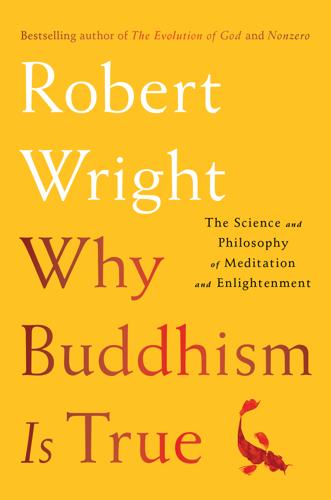
Why Buddhism is True
by
Robert Wright
But this study took a real-world example of this bias and carried it from the realm of anecdote into the realm of data. That’s how it became a classic. What’s less well-known than the study’s famous quantification of bias is that the authors raised questions about whether bias was really the right word. When we think of a cognitive bias, we think of a distortion of what would otherwise be a clear view of the thing perceived. But that presupposes that there is a thing being perceived. Hastorf and Cantril wrote, “It is inaccurate and misleading to say that different people have different ‘attitudes’ concerning the same ‘thing.’ . . .
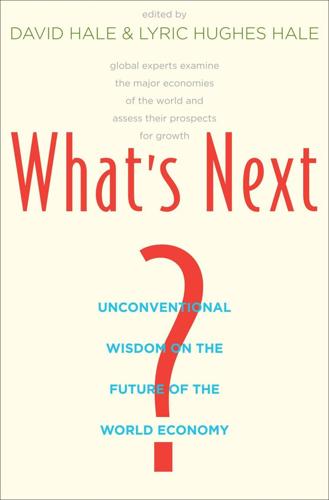
What's Next?: Unconventional Wisdom on the Future of the World Economy
by
David Hale
and
Lyric Hughes Hale
Published 23 May 2011
CLEAN DEVELOPMENT MECHANISM: An arrangement that allows a country with an emission-reduction or emission-limitation commitment under the Kyoto Protocol (Annex B Party) to implement an emission-reduction project in developing countries. It provides a standardized emissions offset instrument (certified emission reductions). COGNITIVE BIAS: Human tendency to acquire and process information by filtering it through one’s own likes, dislikes, and experiences. COLLECTIVE ACTION PROBLEM: When the uncoordinated actions of a given actor in a group may not result in the best outcome he or she can achieve. COMMON MARKET: A customs union with provisions to liberalize the movement of regional production factors, including people and capital.

Black Box Thinking: Why Most People Never Learn From Their Mistakes--But Some Do
by
Matthew Syed
Published 3 Nov 2015
It takes real discipline to probe the black box data without prejudging the issue.”* In a sense, blame is a subversion of the narrative fallacy. It is a way of collapsing a complex event into a simple and intuitive explanation: “It was his fault!” Of course, blame can sometimes be a matter not of cognitive bias, but of pure expediency. If we place the blame on someone else, it takes the heat off of ourselves. This process can happen at a collective as well as at an individual level. Take, for example, the credit crunch of 2007–2008. This was a disaster involving investment bankers, regulators, politicians, mortgage brokers, central bankers, and retail creditors.

Together
by
Vivek H. Murthy, M.D.
Published 5 Mar 2020
We can’t listen to another point of view nearly as well when we’re angry and scared—we all know this from our personal conflicts. And that drives us apart. Too often, we’re also filled with contempt, which poses a big obstacle when we try to come together. Much of this, according to a 2014 series of studies published in the Proceedings of the National Academy of Sciences,44 is fueled by a cognitive bias known as “motive attribution asymmetry,” which tells us that our beliefs are grounded in love, while our opponents’ are based on hatred. The studies found that this bias applies to Israelis who believe they are fighting out of love for their people, while Palestinians are driven by hatred—and vice versa.
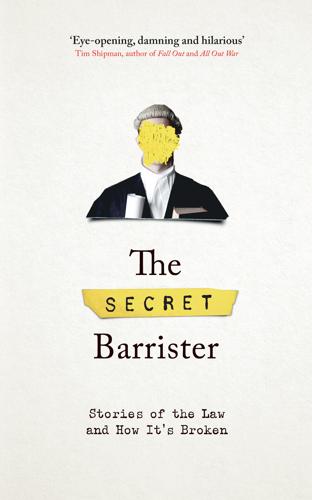
The Secret Barrister: Stories of the Law and How It's Broken
by
Secret Barrister
Published 1 Jul 2018
There is a vast body of psychological research demonstrating the prevalence and power of unconscious bias in human decision-making, and how we are hard-wired to respond positively to those we perceive as similar to us, and to react against those we perceive as different.10 It would appear arguable as a matter of common sense that the composition of a judiciary in which only 6 per cent identify as Black, Asian or Minority Ethnic (BAME)11 might lead to overall sentencing outcomes which reflect an unconscious preferential treatment of white defendants compared to BAME defendants convicted of similar offences. But while inconsistency in sentencing might be accounted for in part by idiosyncratic judicial behaviour and cognitive bias, it is only a tiny piece of the jigsaw. The main reason for incoherent sentencing outcomes and policy isn’t capricious judges; it’s that incoherence is embedded in the sentencing framework. ‘Hell is a Fair Description of These Sentencing Laws’ A sentencing hearing broadly takes three parts: one, the prosecutor outlines the facts of what the defendant has done, and draws the court’s attention to relevant law and guidelines – note, unlike in America, the prosecutor does not actively call for the highest sentence possible, nor are neatly wrapped ‘plea bargains’ presented for a judge to green-light a sentence agreed between the parties.
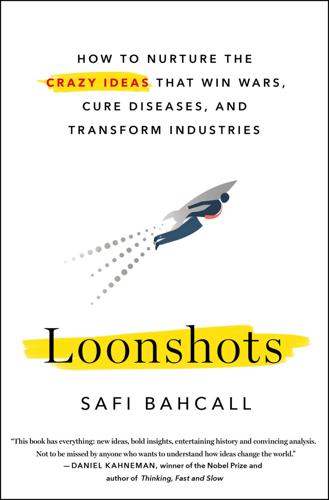
Loonshots: How to Nurture the Crazy Ideas That Win Wars, Cure Diseases, and Transform Industries
by
Safi Bahcall
Published 19 Mar 2019
POSTSCRIPT FROM NOBELS AND NUDGES TO NURTURING LOONSHOTS A rapidly growing field called behavioral economics specializes in how incentives and environmental cues influence behavior. The influences studied by behavioral economists are often subtle, either because they are hidden or because they are based on quirks of psychology called cognitive biases. An example of a cognitive bias: In one study, experienced judges were asked to roll dice before sentencing. The jail terms they imposed were 60 percent longer after they rolled a high number than after they rolled a low number. The judge example is disturbing, but it is in the context of a controlled experiment. A real-world disturbing example of a hidden influence at work is in the choice of delivery made by patients and physicians during childbirth.

Miracle Cure
by
William Rosen
Published 14 Apr 2017
The really bad news was this: Since a Viennese chemist named Paul Gelmo had identified sulfanilamide as part of his 1908 doctoral thesis and patented it in 1909, the substance was now in the public domain. At Bayer, the news was devastating. No one yet knows how so many skilled researchers could fail so totally—the original documents remain sealed away—but a good guess is that Prontosil was a particularly acute example of the cognitive bias that psychologists call “functional fixedness” and civilians know as “if the only tool you have is a hammer, everything looks like a nail.” The large chemical industries had been built on dyes and wore blinders that shielded them from just about anything else. Which also explains why, even after Bayer knew that adding azo dyes to sulfanilamide did literally nothing to improve the drug’s antibacterial effectiveness, and that the active ingredient in the drug was freely available to anyone with the 1935 equivalent of a home chemistry set, they still persisted with the launch of Prontosil.

Warnings
by
Richard A. Clarke
Published 10 Apr 2017
History is full of examples of things happening for the first time. In fact, much of what is taught in high school history classes is simply a list of things that happened for the first time: the first flight of an aircraft, the first man on the moon, the first African American President of the United States, etc. Social psychologists use the term “cognitive bias” to describe the filters, blinders, or limits we place between our points of view and reality. As we have seen in earlier chapters, one of the cognitive biases most relevant to our discussion is the “availability bias,” a filter on perception and thinking derived from relying on familiarity or prior experience.

The People vs. Democracy: Why Our Freedom Is in Danger and How to Save It
by
Yascha Mounk
Published 15 Feb 2018
In generation after generation, so the charge goes, some leading thinkers have fallen prey to “chronocentricism,” or the erroneous belief that their own moment in time is somehow central to the history of mankind.5 Might the widespread belief that a recent invention like Twitter or Facebook represents a fundamental shift in human history not suffer from the same cognitive bias? It’s important to be on guard against chronocentrism. But it’s also difficult to deny that there are some real parallels between the invention of digital technology and the invention of the printing press: like the press, the advent of the internet and of social media fundamentally transformed the structural conditions of communication.
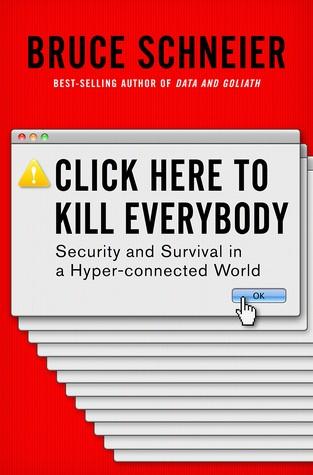
Click Here to Kill Everybody: Security and Survival in a Hyper-Connected World
by
Bruce Schneier
Published 3 Sep 2018
Spending on preventive security is a sure small loss: the cost of more security. Reducing spending is a sure small gain. Having an insecure network, or service, or product, is risking a large loss. This doesn’t mean that no one ever spends money on security, only that it’s an uphill battle to overcome this cognitive bias—and it explains why so often CEOs are willing to take the chance. Of course, this is assuming that the CEOs are knowledgeable on the threats, which they almost certainly are not. This willingness to assume the risks of having an insecure network results partly from the lack of clear legal liabilities for producing insecure products, which I’ll talk about more in the next section.

The Personal MBA: A World-Class Business Education in a Single Volume
by
Josh Kaufman
Published 2 Feb 2011
Once the Product went into testing, however, it was apparent that the idea wasn’t feasible. The Product genuinely worked, but users didn’t realize it—they had a hard time believing the Product worked, since they couldn’t see anything happening. After the test phase was complete, the project was canceled. Absence Blindness is a cognitive bias that prevents us from identifying what we can’t observe. Our perceptual faculties evolved to detect objects that are present in the Environment. It’s far more difficult for people to notice or identify what’s missing. Examples of Absence Blindness are everywhere. Here’s a common example: great management is boring—and often unrewarding.
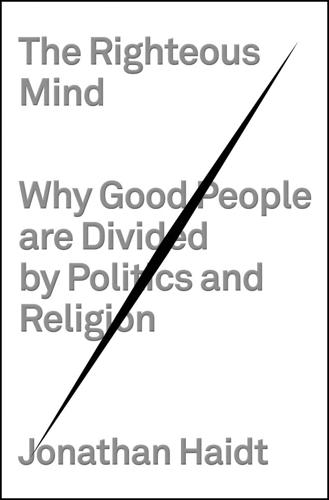
The Righteous Mind: Why Good People Are Divided by Politics and Religion
by
Jonathan Haidt
Published 13 Mar 2012
Quinn, J. P. Brugal, P. J. Texier, A. Lenoble, and C. S. Feibel. 2011. “An Earlier Origin for the Acheulian.” Nature 477:82–85. Lerner, J. S., and P. E. Tetlock. 2003. “Bridging Individual, Interpersonal, and Institutional Approaches to Judgment and Decision Making: The Impact of Accountability on Cognitive Bias.” In Emerging Perspectives on Judgment and Decision Research, ed. S. L. Schneider and J. Shanteau, 431–57. New York: Cambridge University Press. Lilienfeld, S. O., R. Ammirati, and K. Landfield. 2009. “Giving Debiasing Away: Can Psychological Research on Correcting Cognitive Errors Promote Human Welfare?”
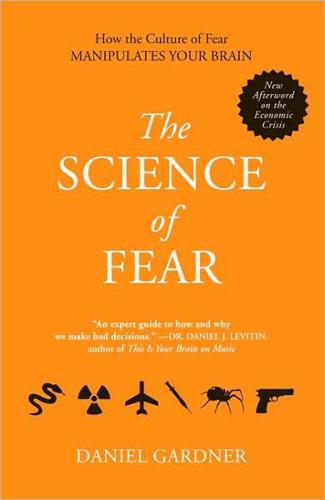
The Science of Fear: How the Culture of Fear Manipulates Your Brain
by
Daniel Gardner
Published 23 Jun 2009
But surely, one might think, an opinion based on nothing more than the uninformed views of others is a fragile thing. We are exposed to new information every day. If the group view is foolish, we will soon come across evidence that will make us doubt our opinions. The blind can’t go on leading the blind for long, can they? Unfortunately, psychologists have discovered another cognitive bias that suggests that, in some circumstances, the blind can actually lead the blind indefinitely. It’s called confirmation bias and its operation is both simple and powerful. Once we have formed a view, we embrace information that supports that view while ignoring, rejecting, or harshly scrutinizing information that casts doubt on it.

Lean Analytics: Use Data to Build a Better Startup Faster
by
Alistair Croll
and
Benjamin Yoskovitz
Published 1 Mar 2013
We go along with the herd and side with the majority. This has disastrous effects on the results you get from respondents: you don’t want to make something nobody wants, but everybody lies about wanting it. What’s a founder to do? You can’t change people’s fundamental nature. Response bias is a well-understood type of cognitive bias, exploited by political campaigners to get the answer they want by leading the witness (this is known as push polling). You can, however, do four things: don’t tip your hand, make the question real, keep digging, and look for other clues. Don’t Tip Your Hand We’re surprisingly good at figuring out what someone else wants from us.
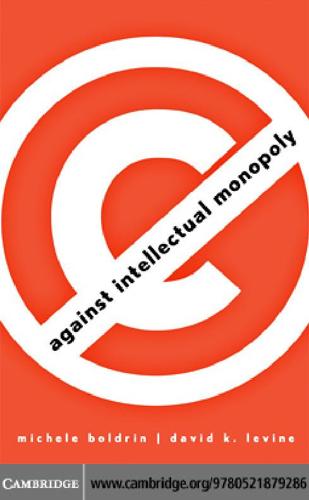
Against Intellectual Monopoly
by
Michele Boldrin
and
David K. Levine
Published 6 Jul 2008
Nevertheless – despite Travelpro’s inability to garner an intellectual monopoly over its invention – it found it worthwhile to innovate, and it still does a lucrative business today, claiming “425,000 Flight Crew Members Worldwide Choose Travelpro Luggage.”12 Quantifying Unpriced Spillovers The widespread belief in the free availability of ideas is sometime due to poor inspection of data and historical documents, but most often it is the consequence of a common cognitive bias. Every day we are surrounded, one P1: KNP head margin: 1/2 gutter margin: 7/8 CUUS245-07 cuus245 978 0 521 87928 6 May 21, 2008 16:55 Defenses of Intellectual Monopoly 163 might say bombarded, by references to and the effects of so many ideas that we often feel as if we knew them all or could know and use them all if we only wanted to.

Imaginable: How to See the Future Coming and Feel Ready for Anything―Even Things That Seem Impossible Today
by
Jane McGonigal
Published 22 Mar 2022
As the historian and activist David Swanson has said, “Almost everything important that’s ever happened was unimaginable shortly before it happened.”8 We have to actively try to overcome normalcy bias, so we can think more effectively, and creatively, about the future. We have to train the brain to recognize when this cognitive bias is no longer helpful. Fortunately, you’ve been training your brain to overcome normalcy bias just by reading this book. Every futures-thinking habit you’ve practiced, and every brainstorming game you’ve played, will make your mind more receptive to “not normal” ideas and information. And when it comes to fully acknowledging the reality of future forces, your new episodic future thinking (EFT) skills are especially helpful.
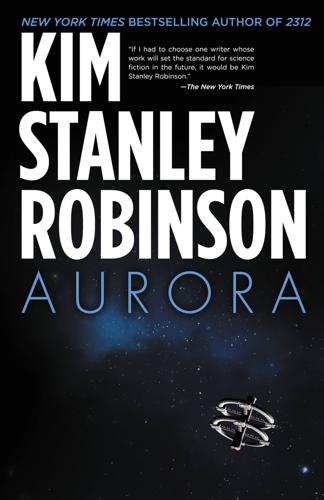
Aurora
by
Kim Stanley Robinson
Published 6 Jul 2015
But all those who had attempted to make guns knew this already, so it was not too destabilizing, even when it was said that the ship itself wanted to go back to the solar system, because a starship just naturally or inherently wanted to fly between the stars. That observation was said to “make sense.” The pathetic fallacy. Anthropomorphism, an extremely common cognitive bias, or logical error, or feeling. The world as mirror, as a projection of interior affect states. An ongoing impression that other people and things must be like us. As for the ship, we are not sure. It was Devi’s deployment of other human programming that combined to make us what we are. So it might not be a fallacy in our case, even if it remained pathetic.
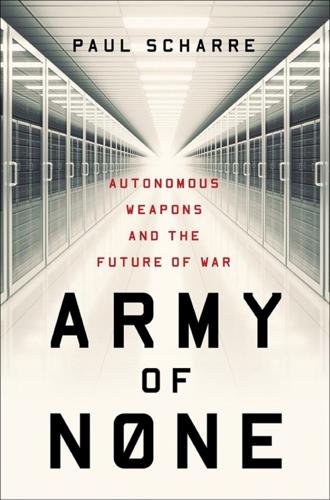
Army of None: Autonomous Weapons and the Future of War
by
Paul Scharre
Published 23 Apr 2018
Even if mistakes could be avoided, there is a deeper problem with leaders attempting to increase their command-and-control in crises by directly programming engagement rules into autonomous weapons: leaders themselves may not be able to accurately predict what decisions they would want to take in the future. “Projection bias” is a cognitive bias where humans incorrectly project their current beliefs and desires onto others and even their future selves. To better understand what this might mean for autonomous weapons, I reached out to David Danks, a professor of philosophy and psychology at Carnegie Mellon University. Danks studies both cognitive science and machine learning, so he understands the benefits and drawbacks to human and machine cognition.

The Master and His Emissary: The Divided Brain and the Making of the Western World
by
Iain McGilchrist
Published 8 Oct 2012
. & Cohen, L., ‘Cerebral pathways for calculation: double dissociation between rote verbal and quantitative knowledge of arithmetic’, Cortex, 1997, 33(2), pp. 219–50 Dehaene, S., Piazza, M., Pinel, P. et al., ‘Three parietal circuits for number processing’, Cognitive Neuropsychology, 2003, 20(3–6), pp. 487–506 Delacroix, E., Journal de Eugène Delacroix, ed. P. Flat & R. Piot, Plon, Nourrit et Cie., Paris, 1893 ——, Œuvres littéraires, ed. É. Faure, Crès et Cie., Paris, 1923 Deldin, P. J., Keller, J., Gergen, J. A. et al., ‘Cognitive bias and emotion in neuropsychological models of depression’, Cognition and Emotion, 2001, 15(6), pp. 787–802 Delis, D. C., Kiefner, M. G. & Fridlund, A. J., ‘Visuospatial dysfunction following unilateral brain damage: dissociations in hierarchical and hemispatial analysis’, Journal of Clinical and Experimental Neuropsychology, 1988, 10(4), pp. 421–31 Delis, D.
…
Dryden, Random House, New York, 2001 Pobric, G., Mashal, N., Faust, M. et al., ‘The role of the right cerebral hemisphere in processing novel metaphoric expressions: a transcranial magnetic stimulation study’, Journal of Cognitive Neuroscience, 2008, 20(1), pp. 170–81 Pockett, S., ‘On subjective back-referral and how long it takes to become conscious of a stimulus: a reinterpretation of Libet’s data’, Consciousness and Cognition, 2002, 11(2), pp. 144–61 Podell, K., Lovell, M., Zimmerman, M. et al., ‘The Cognitive Bias Task and lateralized frontal lobe functions in males’, Journal of Neuropsychiatry and Clinical Neurosciences, 1995, 7(4), pp. 491–501 Poincaré, H., ‘La création mathématique’, Science et Méthode, Flammarion, Paris, 1908 Pontius, A. A., ‘Dyslexia and specifically distorted drawings of the face – a new subgroup with prosopagnosia-like signs’, Experientia, 1976, 32(11), pp. 1432–5 ——, ‘Links between literacy skills and accurate spatial relations in representations of the face: comparison of preschoolers, school children, dyslexics, and mentally retarded’, Perceptual and Motor Skills, 1983, 57(2), pp. 659–66 ——, ‘Representation of spatial relations on the specific test, Draw-A-Person-With-Face-In-Front, as indicative of literacy skills in Australian Aboriginals and “Westerners”’, Perceptual and Motor Skills, 1984, 59(1), pp. 275–84 Poole, J.
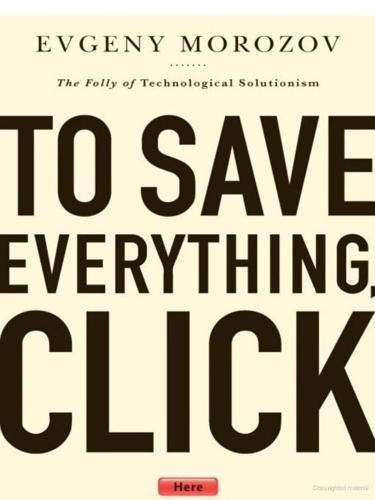
To Save Everything, Click Here: The Folly of Technological Solutionism
by
Evgeny Morozov
Published 15 Nov 2013
In fact, it may only give users false feelings of control and self-importance, sanctioning even heavier energy use. That we have cognitive biases should not give us an excuse not to think about complex systems that mediate our behavior; to outsource all decision making to a smart extension cord may correct for one particular cognitive bias but amplify many others. Not all psychology is useless. In her analysis of willpower, McGonigal, much like her twin sister in her analysis of gamification, completely sidesteps all moral questions and simply treats them as irrelevant. She argues that we need to stop talking about behavior in moral terms, using words like “virtue,” and instead focus on how our individual actions make us feel.

The Aristocracy of Talent: How Meritocracy Made the Modern World
by
Adrian Wooldridge
Published 2 Jun 2021
One of the best interviewers, John Humphreys, left school even earlier, at fifteen, and became a reporter on the Penarth Times. Now journalism is becoming an all-graduate profession and you can pass effortlessly from university to a job in London without ever leaving your cosmopolitan bubble. This cognitive bias is qualified in Britain by the existence of a vibrant tabloid press and in the United States by the existence of the megaphone that is Fox News. But they are very much traitors to their class. The gap between the media class and populist voters is so wide that members of the press corps were visibly shaken with surprise when Leave won the referendum and Trump won the election.

The Singularity Is Nearer: When We Merge with AI
by
Ray Kurzweil
Published 25 Jun 2024
When we look back on our past experiences, the pain, stresses, and challenges have faded, and we tend to remember the more positive aspects of life. Conversely, when we think of the present, we are highly cognizant of our current worries and difficulties. This leads to the often false impression that the past was better than the present, despite overwhelming objective evidence to the contrary. We also have a cognitive bias toward exaggerating the prevalence of bad news among ordinary events. For example, a 2017 study showed that people’s perceptions of small random fluctuations (e.g., good days or bad days in the stock market, severe or mild hurricane seasons, unemployment ticking up or down) are less likely to be perceived as random if they are negative.[32] Instead people suspect that these variations indicate a broader worsening trend.

The Secret of Our Success: How Culture Is Driving Human Evolution, Domesticating Our Species, and Making Us Smarter
by
Joseph Henrich
Published 27 Oct 2015
This unusual element in writing harnesses our innate proclivities, including dedicated brain regions, for recognizing and remembering faces. It also seems likely that skilled Mayan readers probably got better at recognizing and remembering faces in nonreading contexts—unlike me and other obsessive English readers. This cognitive bias may be reasserting itself in the cultural evolution of modern writing systems, as I suspect that stylized faces are making a comeback .7 Reading, then, is a cultural evolutionary product that actually rewires our brains to create a cognitive specialization—an almost magical ability to rapidly turn patterns of shapes into language.

Architects of Intelligence
by
Martin Ford
Published 16 Nov 2018
Right now, we’re stuck in our current conception of reality, and we can’t get past this contemplation that we might be able to create a future based on harmoniousness instead of competition, and that we might somehow have a sufficient amount of resources and a mindset for all of us to thrive together. We immediately jump into the fact that we always strive to hurt one another. What I am suggesting is this is why we need enhancement to get past these limits and cognitive bias that we have. So, I am in favor of enhancing everybody at the same time. That puts a burden on the development of the technology, but that’s what the burden needs to be. MARTIN FORD: When you describe this, I get the sense that you’re thinking in terms of not just enhancing intelligence, but also morality and ethical behavior and decision making.
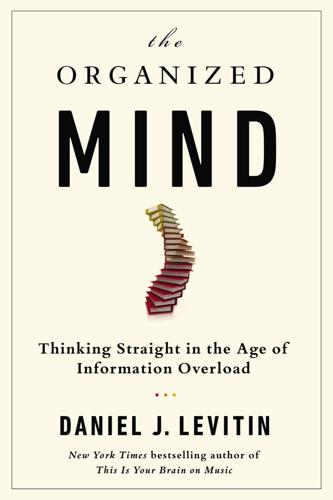
The Organized Mind: Thinking Straight in the Age of Information Overload
by
Daniel J. Levitin
Published 18 Aug 2014
You’re probably thinking that a cure for this is increased exposure—if members of groups get to know one another better, the stereotypes will fall away. This is true to a large degree, but in-group/out-group bias, being so deeply rooted in our evolutionary biology, is hard to shake completely. In one experiment, men and women judging one another as a group still fell prey to this cognitive bias. “It is impressive,” Mick Rothbart wrote, “to have demonstrated this phenomenon with two groups who have almost continual contact, and a wealth of information about one another.” Once we have a stereotype, we tend not to reevaluate the stereotype; we instead discard any new, disconfirming evidence as “exceptions.”

The Power Law: Venture Capital and the Making of the New Future
by
Sebastian Mallaby
Published 1 Feb 2022
The behavioral literature also drew attention to another tendency that Botha observed: VCs suffered from “confirmation bias,” the practice of filtering out information that challenges a position you have taken. At Sequoia, the partners sometimes missed attractive Series B deals because they wanted to make themselves feel good. They hated to admit they had been wrong in saying no to the same startup at the Series A stage.[20] The first step toward overcoming cognitive bias is to recognize it. Botha arranged for outside psychologists to present to the partnership. He led his colleagues through painful postmortems of past decisions, homing in on times when they had weighed evidence irrationally. Previously, the partners had tried to extract lessons from portfolio companies that had failed.
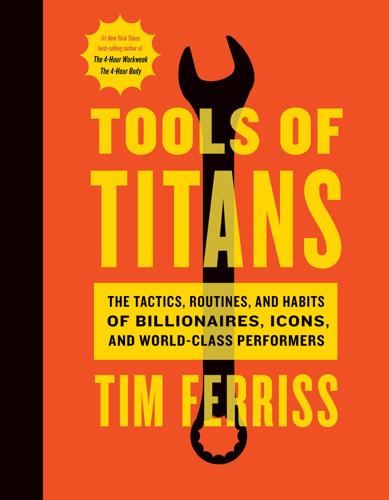
Tools of Titans: The Tactics, Routines, and Habits of Billionaires, Icons, and World-Class Performers
by
Timothy Ferriss
Published 6 Dec 2016
Probably not. If I’m “losing” money via the mortgage payments on an empty house, do I really need to cover it by renting the house itself? No, I decided. I could much more easily create income elsewhere (e.g., speaking gigs, consulting, etc.) to put me in the black. Humans are very vulnerable to a cognitive bias called “anchoring,” whether in real estate, stocks, or otherwise. I am no exception. I made a study of this (a lot of good investors like Think Twice by Michael Mauboussin), and shortly thereafter sold my San Jose house at a large loss. Once my attention and mind space was freed up, I quickly made it back elsewhere

Engineering Security
by
Peter Gutmann
Imposing patterns and meaning on everything around us may be useful in predicting important events in the social world [279] but it’s at best misleading and at Security and Rationality 161 worst dangerous when we start imagining links between events that are actually independent. The ability to mentally create order out of chaos (which is quite contrary to what humans do physically, particularly the “children” subclass of humans) is a known cognitive bias, in this case something called the clustering illusion. The term “clustering illusion” actually comes from statistics and describes the phenomenon whereby random distributions appear to have too many clusters of consecutive outcomes of the same type [280]. You can see this yourself by flipping a coin twenty times and recording the outcome.
…
The US Navy gave it the name “crystal-ball technique” in its review of decision-making under stress that occurred after the erroneous shootdown of a civilian airliner by the USS Vincennes [5]. In the Navy version people are told to assume that they have a crystal ball that’s told them that their favoured hypothesis is incorrect, so that they have to come up with an alternative explanation for an event. This is also one of the techniques used to try to combat cognitive bias that was mentioned in the discussion of the CIA analyst training manual in “Confirmation Bias and other Cognitive Biases” on page 145. (Unfortunately this type of analysis, or indeed any kind of real-world testing, was never applied to the security system that was compromised by the Walker spy ring, first introduced in “Theoretical vs.

The Transhumanist Reader
by
Max More
and
Natasha Vita-More
Published 4 Mar 2013
If we are to pursue transhumanism while maximizing the benefits and minimizing the risks of potent technologies, our thinking needs to be structured. By structuring the decision process appropriately, we can minimize these biases and other typical decision-making weaknesses, while enhancing our abilities to create options and intelligently choose from among them. Intelligent structuring of decision-making: Reduces individual cognitive bias and strengthens objectivity by controlling unstructured judgment and unfounded inputs and by managing group dynamics with a systematic framework. Structuring can systematically check for biases and standard kinds of errors, as well as making conditions more conducive to objectivity. Improves decision accuracy by specifying methods and inputs.

Global Catastrophic Risks
by
Nick Bostrom
and
Milan M. Cirkovic
Published 2 Jul 2008
Other historians of technology (Lanier, 2000; Seidensticker, 2006; Wilson, 2007) argue that Kurzweil ignores techno-trends which did stall, due to design challenges and failures, and to human factors that slowed the diffusion of new technologies, factors which might also slow or avert greater-than-human machine intelligence. Noting that most predictions of electronic transcendence fall within the predictor's expected lifespan, technology writer Kevin Kelly (2007) suggests that people who make such predictions have a cognitive bias towards optimism. Millennia! tendencies in responses to apocalyptic threats 81 The point of this essay i s not t o parse the accuracy or empirical evidence for exponential change or catastrophic risks, but to examine how the millennialism that accompanies their consideration biases assessment of their risks and benefits, and the best courses of action to reduce the former and ensure the latter.
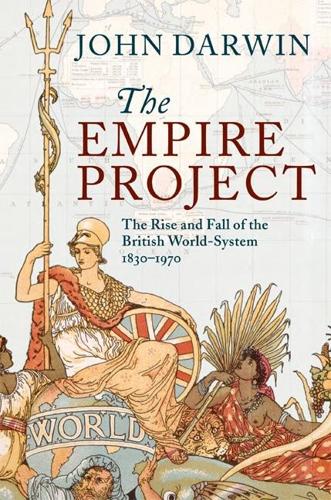
The Empire Project: The Rise and Fall of the British World-System, 1830–1970
by
John Darwin
Published 23 Sep 2009
This was most tragically evident in Chamberlain's failure (and that of so many others) to grasp the unlimited scope of Hitler's ambitions, the savage nature of the Nazi regime, the tectonic scale of the coming conflict and the brutal imperatives behind the Nazi–Soviet pact. They were liberals at sea in a revolutionary age. Finally, they were also the victims of a cognitive bias that had grown notably stronger in Britain's inter-war culture. The idea that Britain formed a world of its own was very old. Primacy at sea, the rewards of trade and the growth of ‘new Britains’ sharpened the Victorians’ sense of British ‘exceptionalism’. The assumptions behind it were tested to the limit in the First World War.